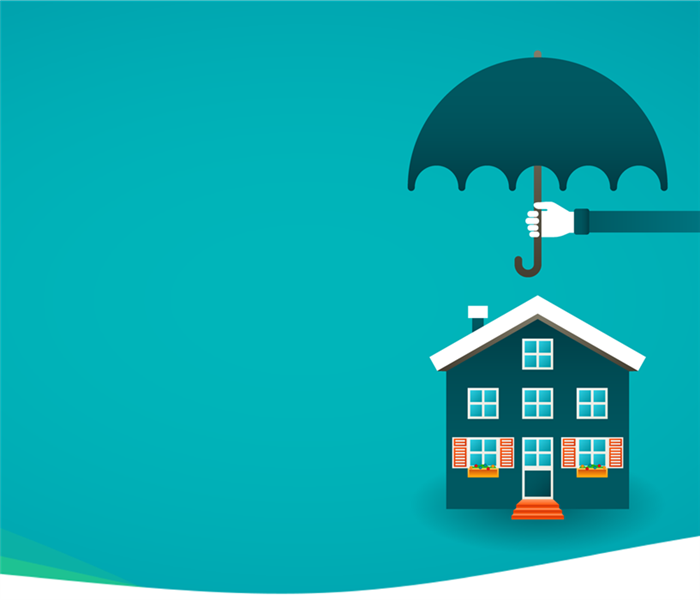Archived Blog Posts
Why Do You Need a Water Mitigation Company?
4/7/2022 (Permalink)
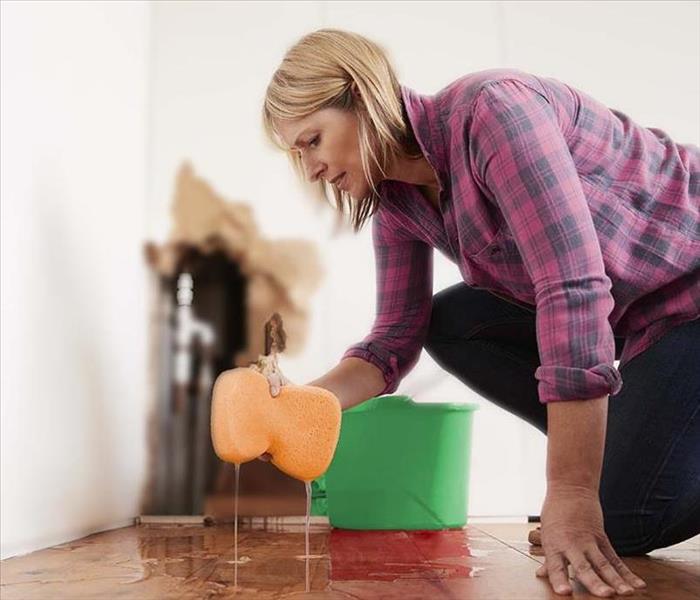 Should You call a Water Damage Repair Company?
Should You call a Water Damage Repair Company?
Why Do You Need a Water Mitigation Company?
If you’re like most homeowners in the Charlotte area, you want to take care of home maintenance on your own. After all, who wants to pay for a repair service when you can just do it yourself? In some cases, that might be the best thing to do, but it’s also important to consult a professional restoration company when the need arises.
As a water mitigation company in Charlotte NC, potential customers can sometimes call back and decide to do the clean up themselves but many have called back with new problems. Lost time, costly do-it-yourself products, and frustration can be avoided by using a professional.
Why use a Water Damage Restoration and Repair Company?
- Uncover hidden moisture problems. When it comes to water damage, there’s often more than meets the eyes. Materials like hardwoods and drywall, are porous, so they absorb water. Moisture can cause the materials to expand, or possibly trap moisture, allowing it to foster mold growth. A water mitigation company has the equipment to both detect and dry these materials.
- Prevent future mold growth. Mold spores are everywhere, but they don’t pose much of a threat until they are exposed to moisture. When water damage isn’t adequately addressed, it can increase the chances of mold growth. Our team can extract and dry the water, plus we apply an antimicrobial to deter mold.
- Equipment and Expertise to remove contaminated water. Not all water damage is equal. Water can occasionally be extremely contaminated (such as floodwater or sewage) and may pose health risks. In these cases, protective gear and specific processes are required for cleaning up the damage to reduce exposure. Our experienced technicians are equipped and certified to handle these situations.
Water damage can come in many different forms and it’s also important to know when things are beyond your control. No matter the situation, SERVPRO of Northwest Charlotteis here to help.
Contact us at (704) 393-7890 for 24/7 Water Damage Mitigation, Repair, and Post Damage Reconstruction.
Be Prepared with The Emergency Ready Profile
2/8/2022 (Permalink)
 Business Preparedness with the Emergency Ready Profile
Business Preparedness with the Emergency Ready Profile
Did you know as many as 50% of businesses never recover following a disaster? The majority of Charlotte NC businesses that do survive had an emergency preparedness plan in place. Being fully prepared with proper planning can bring you peace of mind. When you are "Ready for whatever happens" this provides a solid level of trust with your clients and employees, so that if there is an emergency event and your business is affected by a disaster, you’ll be able to recover as quickly as possible.
By developing an (ERP) Emergency Ready Profile with SERVPRO of NW Charlotte for your business, you minimize business interruption by having an immediate plan of action. Knowing what to do and what to expect in advance is the key to timely mitigation and can help minimize how water and fire damage can affect your business.
- It’s Free. We will provide an assessment of your facility at no cost to you.
This is a high quality, digital profile with no need for you to allocate funds. This program provides exceptional value with zero cost.
- A Profile Document containing critical information needed in an emergency.
In just minutes, your business can complete the profile without taking time away from current projects, but it will save a lot of time if ever needed.
- A Digital Guide to help you get back into your building after a disaster.
Having a complete, updated Emergency Ready Profile can help minimize the amount of time your business is affected by a disaster by having an immediate plan of action.
- Establishes SERVPRO of NW Charlotte as your disaster mitigation and restoration provider. Your business will have a go-to source with a provider recognized as the industry leader right around the corner.
- Identifies the line of command for authorizing restoration work to begin.
Save time. In the case of a disaster or emergency, we can begin the work of mitigating the damage right away - which can save you time and money.
- Provides facility details such as electrical box and water shut-off valve locations, as well as priority areas such as entrances, exits, and priority contact information.
Your team will be fully ready with a quick reference of who to call, what to do, and how to do it providing you with solutions in advance of an emergency situation so you’re "Ready for whatever happens."
Get Started Today
Contact us at (704) 393-7890 or email us at sp10068@SERVPROnwcharlotte.com to schedule a consultation.
SERVPRO of NW Charlotte, Lincoln County, Southern and NE Gaston County is a locally owned company with national resources backed by SERVPRO® and is ready to help your business regardless of the size or scope of the damage.
Does your Business have a Disaster Plan?
2/8/2022 (Permalink)
 Do you have a Disaster Plan?
Do you have a Disaster Plan?
If you own a business in Mecklenburg County, developing a disaster plan is a vital part of making sure you are covered in case an emergency were to arise. Having a written plan in place will help your employees stay safe in an emergency situation, keep everyone informed, and help you reopen your business quickly. There are a few key elements that can help you be certain that you are fully prepared.
Path for Building Evacuation & Staying Put
Depending on the type of disaster you are facing, it may be necessary to evacuate while other disasters may necessitate staying in place. To be fully prepared for whatever situation your business faces, it is important to have a procedure in place regarding both of these things.
Make sure that you have well-marked evacuation routes in the building in case employees must leave suddenly in the event of a fire or flood, and practice evacuation drills frequently so everyone knows what to do. In the event that you must stay put, pack an office emergency kit with enough food, water and medical supplies to sustain you and your staff until official help arrives.
Effective Communication Strategy for Employees and Management
In the event of a disaster or emergency, there will likely be a lot of confusion from staff regarding what this means for the business and their livelihoods. Making sure that you and upper management have a strategy for communicating with staff will help you (most importantly) ensure everyone is safe, communicate pertinent information and keep any rumors at bay.
Outline of the Recovery Process
For business owners, stakeholders, and management, your livelihood is likely on the line if your business or organization has an unexpected closure. It’s recommended that you have a recovery plan in place in advance so you can expedite your time to reopening.
Make sure you are aware of how to start recovery, including knowing your insurance information, and preferred commercial restoration company that you will be using to mitigate damage, restore your property, and get your business reopened as quickly as possible.
Need Assistance?
If your business has experienced a disaster, you can count on our restoration services. Contact SERVPRO NW Charlotte at (704) 393-7890 to learn more about our commercial restoration process.
Commercial Deep Cleaning: Workspaces, Office, and Facilities
1/10/2022 (Permalink)
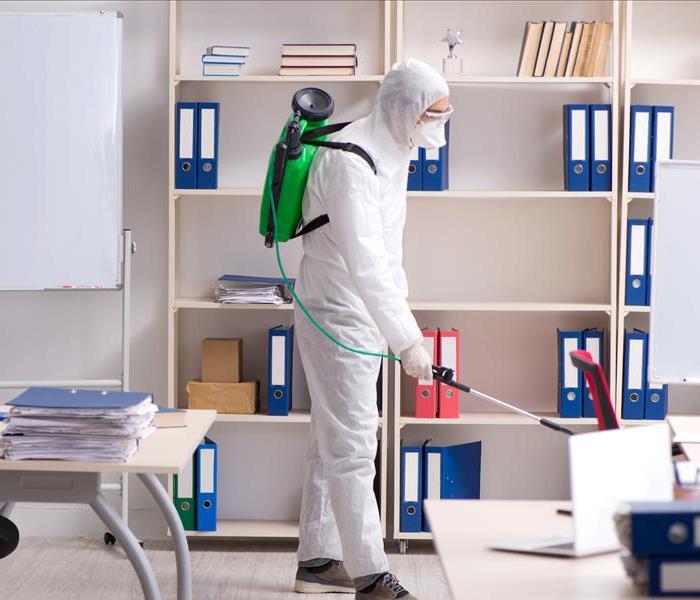 Highly Trained Commercial Cleaning Technicians
Highly Trained Commercial Cleaning Technicians
During an unprecedented global public health issue, “disinfecting” means more than singing a 20-second tune in your head while washing your hands. With the pandemic affecting our everyday lives in some way, deep cleaning is now incorporated into our routines as part of the new normal.
This especially holds true for corporate and commercial business owners and property managers who are stepping up their sanitizing game to institute and maintain healthy and safe work environments. Proper cleaning and disinfection routines can significantly reduce or eliminate pathogens on surfaces and objects in workplaces, offices and facilities.
Commercial Cleaning = Peace of Mind
Business owners in Charlotte can be proactive by adopting a defensive pathogen cleaning program. With many employees now working from home and essential facilities operating with minimal staff, it’s a convenient opportunity for deep cleaning. Knowing a workspace or business has followed exposure and cleaning procedure guidelines provides peace of mind for employers, employees, vendors, clients and customers. They can feel confident the environment was thoroughly and professionally cleaned according to Centers for Disease Controls (CDC) and local authorities.
Examples of High-Touch Surfaces
In the workplace, frequently touched surfaces are tables, hard-backed chairs, doorknobs, light switches, countertops, handles, desks, toilets, faucets, sinks, fixtures and electronics (phone receivers and keypads, computers, keyboards, tablets, touch screens, kiosks and remote controls).
Other commercial spaces may include sales counters, water fountains, soda and snack machines, kitchens, break rooms and food areas, bathrooms, meeting rooms and classrooms, shelving and racks, carpets, rugs and drapes, furnaces and air conditioners, stair and escalator handrails, elevators, and playground or fitness equipment.
How Long do Pathogens Stay on Surfaces?
While the World Health Organization doesn’t know how long every virus or pathogen survives on surfaces as an infection threat. Studies suggest viruses may last on surfaces for a few hours or up to several days, depending on the surface type and the environment’s temperature and humidity level.
Commercial Cleaning Levels & Standards
SERVPRO of NW Charlotte, Lincoln County, Southern and NE Gaston County is a member of the Institute of Inspection, Cleaning and Restoration Certification (IICRC), the certifying body for the cleaning and restoration industry. We adhere to CDC and local authority guidelines related to exposure and cleaning procedures. Our primary cleaning technique includes hand wiping surfaces and fogging, a process that uses an ultra-low volume or electrostatic sprayer to apply disinfectant to surfaces.
Reactive Cleaning
When someone known to have a contagious disease has been exposed to the workplace or facility, we recommend enhanced or reactive cleaning. In these cases, we customize services based on the specific needs of a facility. And, we may use a cleaning protocol developed by a third-party industrial hygienist.
Additionally, the CDC recommends opening windows and doors to increase air circulation and closing off all areas used by the infected person. Wait 24 hours (or as long as possible), then clean and disinfect offices, bathrooms, common areas, shared electronic equipment and any other areas the infected person may have used.
Reactive Cleaning
When someone known to have a contagious disease has been exposed to the workplace or facility, we recommend enhanced or reactive cleaning. In these cases, we customize services based on the specific needs of a facility. And, we may use a cleaning protocol developed by a third-party industrial hygienist.
Additionally, the CDC recommends opening windows and doors to increase air circulation and closing off all areas used by the infected person. Wait 24 hours (or as long as possible), then clean and disinfect offices, bathrooms, common areas, shared electronic equipment and any other areas the infected person may have used.
24/7 Commercial Cleaning Assistance
Although SERVPRO of NW Charlotte, Lincoln County, Southern and NE Gaston County is part of a national network of 1,700-plus franchises, we’re locally owned and operated and part of the community. Our highly training cleaning technicians are employees, not contractors, which means our team can respond very quickly and with more resources. For questions, contact us anytime at (704) 393-7890 or request help online.
Holiday Home Safety
12/20/2021 (Permalink)
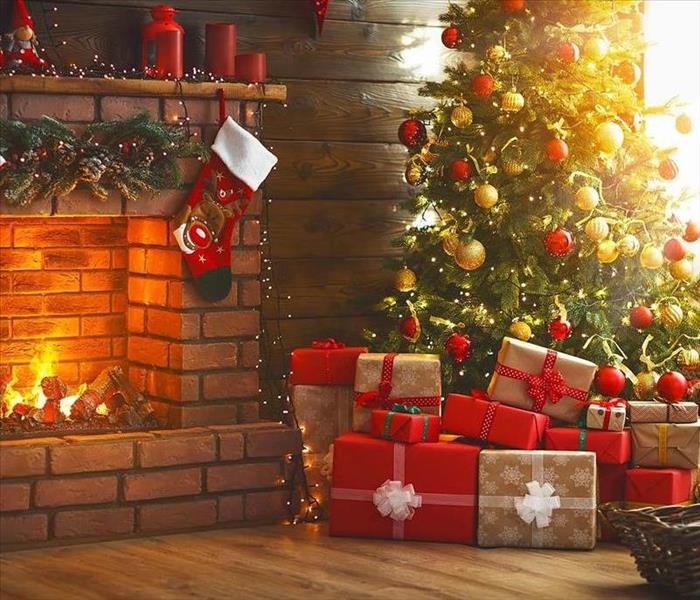 Be safe during the holidays.
Be safe during the holidays.
The holidays are in full swing, but before your family rolls into town, is your home really holiday ready when it comes to fire and electrical safety? The National Fire Protection Association claims that electrical issues are responsible for one in three Christmas fires. You can prevent your home from being a statistic by following these easy recommendations before the weekend.
Lights
- Double check your lights. In fact, look over each string for signs of damage including a frayed cord, defective or rusted sockets, detached connections or exposed wires. If your bulbs need to be replaced, be sure to use the same voltage in order to reduce any risk of the bulbs overheating, melting or sparking and causing a fire. If possible, be sure to use light strands that are UL listed.
- Limit the number of connected strands. Be sure not to attach more than three strings together at one time or the chances of fire will increase.
Christmas Trees
- Pay attention to location. One cause of Christmas tree fires is when a tree is located too close to a heat source such as a heat vent, fireplace, wood stove, furnace or candle(s). Make sure your tree is at least three feet from any heat source. In addition, make sure your tree is not blocking an exit in your home.
- Water daily. Be sure to water your tree daily, and take it down once it begins to dry out.
Fireplace
- Know your chimney health. If you are not certain of the safety of your chimney, it is better not to burn a fire. A nice alternative is to light candles inside the fireplace or cover logs with a safe strand of lights (see recommendations above) for a festive effect.
- Open the flue. Before starting a fire, be sure that you have opened the flue to the chimney.
- Remove potential fire hazards. Also before starting a fire, make sure to remove any greenery from the mantle or from around the fireplace.
- Use a screen. A screen will eliminate flying embers which could potentially start a fire or cause injury to a loved one or pet.
- Throw away wrapping paper. Reduce the urge to throw wrapping paper into the fire as it can cause an unexpected flash fire. It is better to dispose of the wrapping paper in a proper trash bag or can.
By paying attention to these few extra details right now, you will ensure nothing steals the magic of the season for you and your loved ones.
All of us at SERVPRO of NW Charlotte wish you and your family a safe and happy holiday season. Remember that in the event of an emergency, call us 24/7 at (704) 393-7890.
Fire: Prevent House Fires: Do's and Don'ts of Grilling this Fall
9/24/2021 (Permalink)
 Safe grilling can prevent home fires.
Safe grilling can prevent home fires.
Homeowners in the Charlotte NC area love to grill, but there are many dangers that come with all the outdoor fun.
According to the National Fire Protection Association, fire departments went to an annual average of 8,900 home fires involving grills, hibachis or barbecues per year.
Here are a few ways to stay safe and prevent house fires while grilling:
Do -
1. Keep your grill at least 10 feet away from your house. Farther is even better. This includes portions attached to your house like carports, garages and porches. Grills should not be used underneath wooden overhangs either, as the fire could flare up into the structure above. This applies to both charcoal and gas grills.
2. Clean your grill regularly. If you allow grease and fat to build up on your grill, they provide more fuel for a fire. Grease is a major source of flare ups.
3. Check for gas leaks. You can make sure no gas is leaking from your gas grill by making a solution of half liquid dish soap and half water and rubbing it on the hoses and connections. Then, turn the gas on (with the grill lid open.) If the soap forms large bubbles, that's a sign that the hoses have tiny holes or that the connections are not tight enough.
4. Keep decorations away from your grill. Decorations like hanging baskets, pillows and umbrellas look pretty AND provide fuel for a fire. To make matters worse, today's decor is mostly made of artificial fibers that burn fast and hot, making this tip even more important.
5. Keep a spray bottle of water handy. That way, if you have a minor flare-up you can spray it with the water to instantly calm it. The bonus of this tip is that water won't harm your food, so dinner won't be ruined!
6. Keep a fire extinguisher within a couple steps of your grill. And KNOW HOW TO USE IT. If you are unsure how to use the extinguisher, don't waste time fiddling with it before calling 911. Firefighters say many fire deaths occur when people try to fight a fire themselves instead of calling for expert help and letting the fire department do its job.
Don't -
7. Turn on the gas while your grill lid is closed. NEVER do this. It causes gas to build up inside your grill, and when you do light it and open it, a fireball can explode in your face.
8. Leave a grill unattended. Fires double in size every minute. Plan ahead so that all of your other food prep chores are done and you can focus on grilling.
9. Overload your grill with food. This applies especially fatty meats. The basic reason for this tip is that if too much fat drips on the flames at once, it can cause a large flare-up that could light nearby things on fire.
10. Use a grill indoors. People often think it will be safe to use a grill, especially a small one, indoors. NOT TRUE. In addition to the fire hazard, grills release carbon monoxide, the deadly colorless, odorless gas. That gas needs to vent in fresh air or it can kill you, your family and pets.
In case the you experience a house fire, call your local fire department immediately. Be sure to contact a licensed fire damage restoration company to cleanup and repair any damage to your home occurs.
Why SERVPRO for Proactive Commercial Cleaning
9/24/2021 (Permalink)
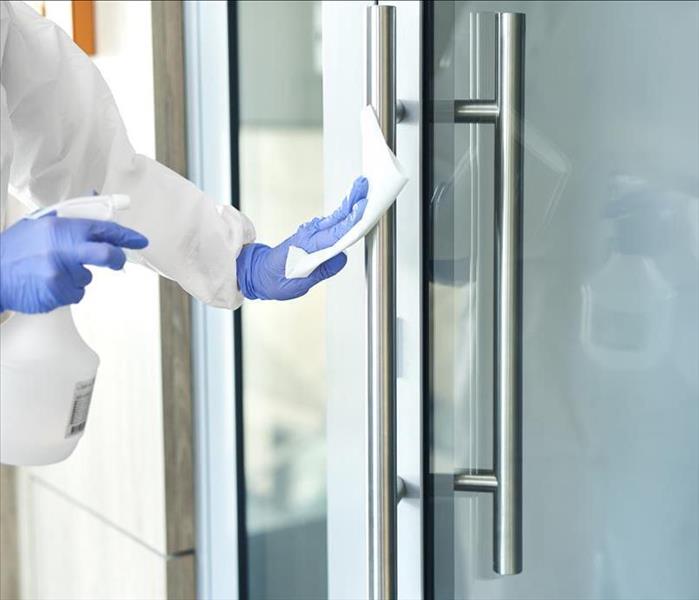 Proactive Commercial Cleaning
Proactive Commercial Cleaning
Being a proactive corporate and commercial business owner or property manager means taking control of a situation by causing things to happen instead of waiting to respond after things happen. This ‘staying ahead’ approach is especially critical for Charlotte-area businesses during the current coronavirus pandemic.
For example, your office may not have been exposed, but you still want your employees and customers to feel secure. One way to maintain a healthy and safe work environment is through proactive cleaning.
While it doesn’t prevent or protect buildings from future contamination, proactive cleaning provides peace of mind. It ensures environments are thoroughly and professionally cleaned, according to Centers for Disease Control (CDC) specifications.
How does proactive cleaning work?
Deep cleaning and disinfecting has moved up on the list of priorities for businesses and institutions, but how does proactive cleaning work? SERVPRO of NW Charlotte, Lincoln County, Southern and NE Gaston has developed a proactive cleaning and disinfection protocol based CDC specifications.
Through years of experience in dealing with biological contaminants, we’ve identified three categories of contamination:
- Proactive cleaning when there aren’t any confirmed coronavirus cases or known coronavirus exposure.
- Cleaning for possible coronavirus exposure.
- Reactive cleaning when there’s a confirmed coronavirus case.
Proactive commercial cleaning goes beyond the scope of work that a regular janitorial team performs daily. It involves a facility or structure deep cleaning and disinfection -- from kitchen vents to carpets to manufacturing equipment.
Steps may include cleaning porous and nonporous surfaces, disinfecting nonporous surfaces, cleaning and disinfecting equipment, tools and supplies, and disposing of waste.
Planning for deep cleaning
Before conducting commercial cleaning, we ask customers for floor plans of their building or facility ahead of time. If floor plans aren’t available, our production manager will visit the location before the start of the project to determine how many people we’ll need, the best way for our team to move through the building, where we’ll start and end and if we’ll split up our team, so one group cleans the office while others take care of the warehouse.
Having a proactive cleaning strategy in place before the work begins allows our deep cleaning experts to tackle the project efficiently and thoroughly.
24/7 commercial cleaning assistance
SERVPRO of Northwest Charlotte is locally owned and operated as part of a national network of 1,700-plus franchises. Our deep cleaning experts are employees, not contractors, which means our team can respond very quickly and with more resources. For questions, contact us anytime at (704) 286-8720 or request help online.
Commercial: Why Property Managers choose SERVPRO NWC for Emergencies
9/24/2021 (Permalink)
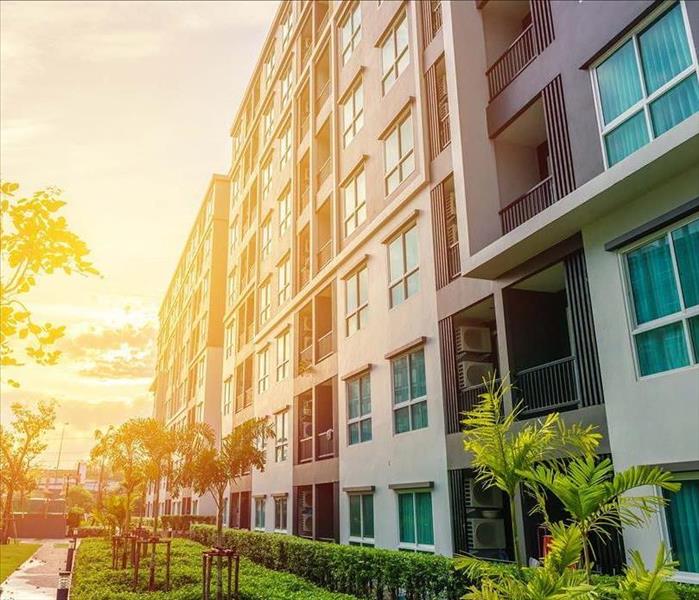 Property Managers choose SERVPRO NWC for Emergencies
Property Managers choose SERVPRO NWC for Emergencies
Commercial: Why Property Managers choose SERVPRO NWC for Emergencies
As the go-between for property owners and tenants, property managers have to juggle many responsibilities -- finding new tenants, fielding questions and complaints, performing inspections, overseeing landscaping and maintenance repairs, securing the property, and ensuring the building’s appearance remains tiptop.
Fortunately, when it comes to handling fire, water and contamination cleanup emergencies, property managers have a secret weapon that’s just a phone call away: SERVPRO’s Disaster Recovery Team.
We get it. There’s never a convenient time to clean up from fire damage, water damage or a biohazard contaminant. Every minute spent cleaning and restoring a business or property results in lost time, revenue and productivity.
When a disaster or emergency strike, our commercial services team is ready to respond -- 24 hours a day and seven days a week -- regardless of a commercial property’s size or scope of the damage.
Wether it’s retail to residential and manufacturing to motels, SERVPRO’s commercial services team helps make it “Like it never even happened,” so property managers can focus on their other roles.
- If a massive storm floods a mom-and-pop ice cream shop, we’ll respond immediately to tackle initial storm cleanup and damage mitigation and rebuild the affected areas.
- If there’s a funky smell coming from somewhere in a 10,000-square-foot manufacturing plant, we’ll locate the source of the offensive odor and eliminate it.
- If a fire sprinkler system fails during the grand opening weekend of a retail boutique, we’ll clean the property and manage the restoration process - from start to finish.
- If an electrical fire breaks out in the middle of the night at a restaurant dining room, we’ll restore it to pre-fire condition -- from fire and smoke damage to odor control and upholstery and fabric cleaning.
- If a husband and wife test positive for COVID-19 just two days after vacating their high-rise apartment, we’ll get it Certified: SERVPRO Cleaned in no time so it’s ready for the next tenant.
- If an older apartment building has mold infestation from a slow roof leak, we’ll prevent it from spreading to other parts of the building and remove it through our commercial mold remediation process.
Restoring your Commercial Property After a Water Damage Event
9/24/2021 (Permalink)
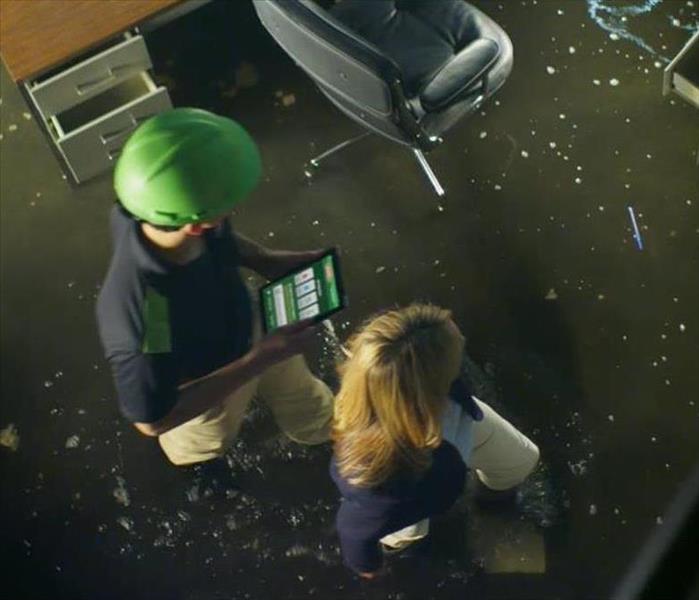 Restoring your Commercial Property 24/7
Restoring your Commercial Property 24/7
Flooding and water damage events at Charlotte NC commercial properties are often complex with numerous issues that require a knowledgeable and flexible response. Whether we’re dealing with a relatively small water cleanup scenario or a large-scale event, we work quickly to assess each unique situation and isolate the damaged area.
In many instances, normal operations can continue in a temporary space while we restore your facility. We understand the importance of minimizing your business’s down time.
Our professionals are trained to be mindful of legal and environmental concerns and strive to fully restore the damaged area while working within your budgetary constraints. We understand that every hour spent cleaning up is an hour of lost revenue and productivity.
So when an emergency situation arises in your business, give us a call and we’ll be there fast with the help you need. Contact SERVPRO of Northwest Charlotte 24/7 by calling (704) 393-7890.
Top Causes of Fall Season Fires in Charlotte
9/21/2021 (Permalink)
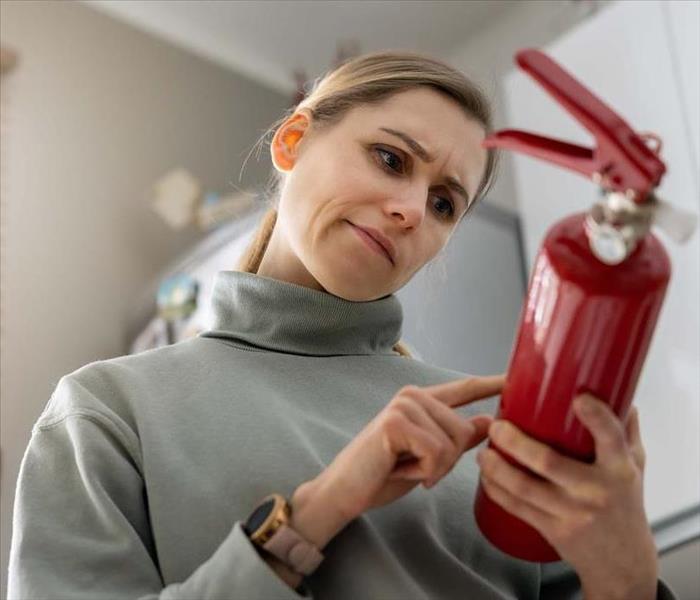 Simple steps can help prevent fires.
Simple steps can help prevent fires.
Cooler weather is prime opportunity for fun and sun, but there are a few ways homeowners in Charlotte, NC can stay safe and prevent house fires.
Here are a few of the most common causes of Fires in North Carolina:
Grill Fires
In the autumn months, many people grill outdoors for various holidays and barbecue dinners. In fact, 5,700 home grill-related fires occur each year. Grill fires happen when someone mishandles the igniting of the grill with a spark, ember, or flame. Fire hazards derive from cooking with things like coals, charcoals, or ashes. Often times there are mechanical issues with the grill like broken containers or broken pipes that can also increase the risk of fire.
Take preventative measures by checking your grill’s condition before the grilling season begins. Clean the grill, the drip pan, and anything that could have grease on it from previous barbecue dinners. Inspect each part of your barbecue to make sure everything is attached properly. Additionally, be sure you are in a grill-friendly environment free of branches, roofs or any sort of overhang when igniting the grill. Be prepared for a fire, as grease and fat are likely to catch on fire. Keep baking soda near the grill in case a grease fire breaks out.
HVAC - Air Conditioning Fires
About 2,300 residential air conditioners start fires each year. These fires are usually the result of inadequate wiring while having to deal with heavy electric loads, short circuits, or other electrical malfunctions.
Although temperatures are cooler, your AC System has been running hard all summer long and potential issues may have been ignored while you were having summer fun. Fires are most likely to occur when it’s hottest outside—between 2 and 8 p.m, but it can happen anytime.
Inspect your air conditioner’s wiring systems each year to prevent these types of fires. Also, find ways to use the AC less during the day. Not only will you save money, you can save your home from a potential fire. Using fans, keeping windows open during the night, and closing blinds during the day are just some ways you can keep your house cool without AC.
Arson Fires
Arson fires are the third-leading cause of fire injuries and fatalities. These fires can easily occur when the weather is dry.. It is important to properly store any flammable substances, propane tanks and even unused fireworks so they aren’t at risk of misuse.
Smoking Fires
Smoking fires are common throughout the year. These fires start by improperly putting out cigarettes and cigars. If you’re outside enjoying activities like camping, be careful when smoking. Keep used cigarettes off the ground, and make sure they are properly extinguished before throwing them away as nearby grass and brush can easily catch fire.
Smoke Detectors and Fire Extinguishers
Fall is a time to get out and enjoy the outdoors. Be aware of the risk of fires and prepare by having functioning fire extinguishers and checking the batteries in your smoke detectors.
We're Here to Help after a Fire
We're here for all of your fire damage restoration and repair needs.
If you find yourself faced with a fire emergency this summer, don’t hesitate to call us.
SERVPRO of NW Charlotte, Lincoln County, Southern and NE Gaston County can respond quickly to a fire emergency at your home or property. Our highly trained technicians have the tools and expertise to get it done accurately and efficiently.
What happens if a storm floods your property?
9/20/2021 (Permalink)
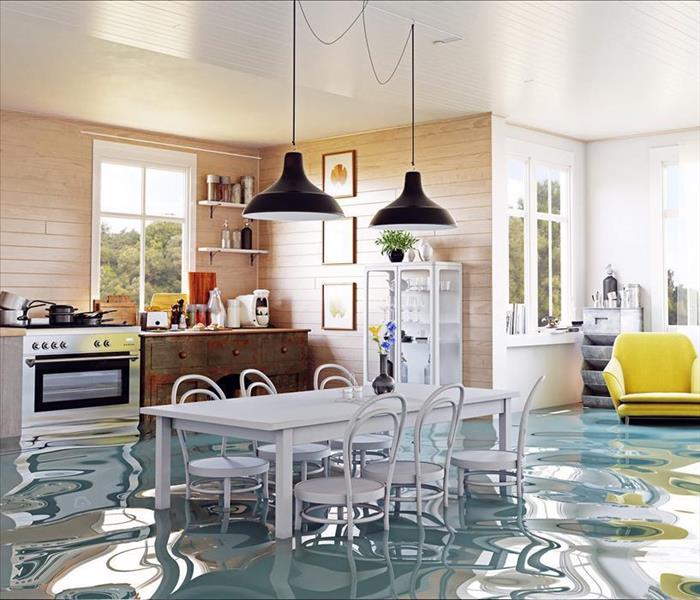 Immediate response vital to returning your property to the condition.
Immediate response vital to returning your property to the condition.
At SERVPRO of NW Charlotte, we understand that both storm damage and flood damage can be overwhelming. Immediate response is critical, and the emergency service that you choose for cleanup and restoration is vital to returning your property to the condition "Like it never even happened." SERVPRO professionals respond faster to any disaster and have the skilled training and specialized equipment to provide an effective and efficient action plan.
Where to Start with Storm Damage
Knowing what to do at the onset of flood damage is critical to receiving immediate response. Your immediate steps will help determine your property’s further protection and reduce the potential for irreversible damage.
If you’re wondering where to begin, follow this checklist for your steps of immediate action.
- Turn off electrical power and any natural gas sources including propane tanks. If you smell gas or feel that there may be a gas leak, turn off the main gas valve, open all windows, and leave the house immediately.
- Call 911. Report the flood damage to the fire and public safety authorities in addition to the local gas company.
- Contact an emergency service for cleanup and restoration. The professionals you choose matter. The quicker you call SERVPRO of NW Charlotte, the quicker we can respond. Our professionals will arrive armed with specialized equipment ranging from an infrared camera to uncover hidden moisture to robust water extraction equipment that quickens the drying process.
- Relocate important documents. Water can destroy sensitive documents. Only if you can do so safely, move your important documents as quickly as possible to a safe and dry location. If you need assistance, SERVPRO can ensure that your documents and personal belongings are secure.
- Remain evacuated from the damaged area. To remain safe from potential hazards and to help expedite restoration efforts, we recommend that you and others stay out of the damaged and restoration areas. Upon being given the all-clear to return, adhere to the advice of your trusted professionals about how to return safely.
When a storm strikes and floodwaters rise, other emergency response companies may be overrun. However, SERVPRO of NW Charlotte, Lincoln County, Southern and NE Gaston County can access the resources, as well as Disaster Recovery Teams when and if necessary.
We stand ready 24/7 to respond to your emergency, so please don’t hesitate. Call us today.
Why should you choose SERVPRO of NW Charlotte for your cleanup and restoration needs?
9/20/2021 (Permalink)
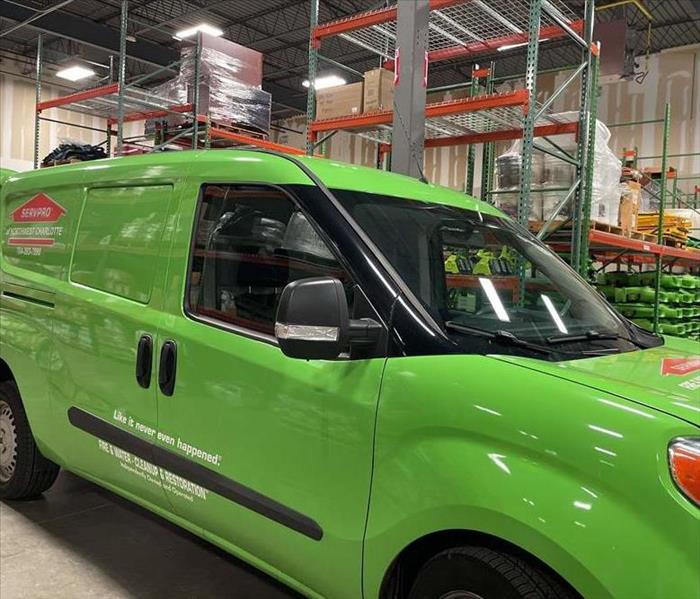 Why should you choose SERVPRO of NW Charlotte?
Why should you choose SERVPRO of NW Charlotte?
Why should you choose SERVPRO of NW Charlotte for your cleanup and restoration needs? We could go on and on about how we’re the best choice for you. However, we’ll let people just like you- perhaps even your neighbor- speak for themselves about their own unique situation.
Water Damage
“SERVPRO was quick to answer and respond to the water loss in my home. They were able to extract the water and save my floors. They worked with my insurance company and made the process easy to understand.”
Fire Damage
“SERVPRO has done a terrific job for my family. Dealing with this fire was far more complicated than I thought it would be and your people have been there every step of the way. The work is high quality, too. Thanks for giving us our home back.”
Mold
“I recently built a new home and the inspector said there was mold under the crawlspace. SERVPRO met my urgent demand to inspect the property (as we are to close shortly) and provided a report. Our SERVPRO employee could have easily told me I needed to remediate and I would have paid for it. Instead, he very honestly told me there was no visible mold and remediation was completely unnecessary. This is the second time I've used your services and will continue forever given the honest and quality work you provide. Thank you for saving me thousands!!!”
Sewage Leak
“The owners of this SERVPRO have hired an amazing team of experts. I had a horrible situation on my hands and a plumber told me it'd take longer than a week to fix the sewage leak in my cellar. Really? That's not acceptable. This team came to my rescue. They stepped me through the entire process. They helped me with my insurance company. We only had to move our 1 night due to the issue. All of the staff are competent, on time, communicate well, and every single one of them was sympathetic and apologetic. They left things BETTER than they were before the sewage leak. Don't call anyone else. Call them first. You will be glad you did.”
How can we guarantee that you will also be satisfied with choosing SERVPRO of NW Charlotte?
We set the bar high by ensuring our professionals have completed extensive training and certifications including meeting the industry standard with The Institute of Inspection Cleaning and Restoration Certification (IICRC), SERVPRO employee and franchise training, continuing education courses on emergency mitigation, and more.
You can rest assured that our staff is equipped with the latest training and proven methods to restore your property as quickly and efficiently as possible.
Mold Issues caused by Storm Damage
9/20/2021 (Permalink)
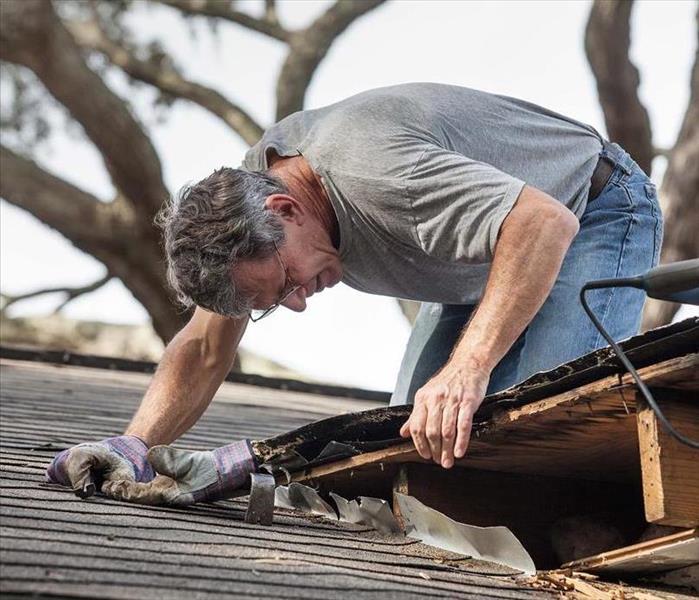 To ignore mold issues caused by storm damage.
To ignore mold issues caused by storm damage.
Whether you’ve suffered storm related water damage from a typical storm, flood, or hurricane, mold and mold remediation is an important topic to address.
To understand the importance of mold remediation and why SERVPRO of NW Charlotte should be your go-to resource, it is important to understand the quick and dirty (literally!) of mold.
Did you know the following mold facts?
- Mold can start growing in as little as 48 hours upon moisture exposure.
- Mold is everywhere both indoors and outdoors.
- Mold spores are microscopic and float in the air.
- Mold spores can enter your home through openings, HVAC units or even pets.
- Mold spores thrive and grow into colonies anywhere moisture or water exists.
- Spore colonies can cause health effects.
- To remediate mold, water sources must be eliminated or else the mold will likely resurface. Water sources can range from a leaking roof to something more hidden.
- It is recommended for indoor humidity to be below 45%.
Next, it’s important to understand how a local damage restoration company can help you with your mold remediation.
SERVPRO professionals receive continual mold remediation training on the most current equipment and methods that will best do the job. Once you contact us, we will respond quickly and begin the remediation process quickly to prevent the mold from continuing to damage your property and to be cost effective. First, our focus will be to uncover the water source. Then, we will isolate the affected area by utilizing a negative air pressure chamber.
After that, your personalized action plan will likely include the following steps:
- Inspection and mold damage assessment
- Mold containment
- Air filtration
- Removal of mold and mold-infested materials
- Cleaning of personal belongings and other contents
- Restoration
Now that you know more about both mold and the remediation process, you understand the urgency in contacting an emergency restoration service immediately for the damage to be contained and the cost to be lessened.
SERVPRO of NW Charlotte is available 24/7 to respond faster to any size disaster and help your property be "Like it never even happened." We look forward to serving you.
Why choose SERVPRO of NW Charlotte for fire damage and restoration?
9/15/2021 (Permalink)
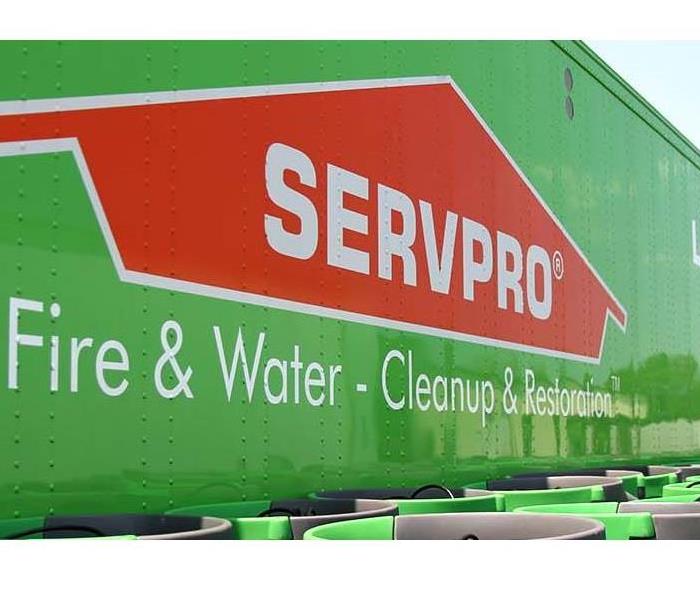 SERVPRO NW Charlotte - Fire Damage Restoration
SERVPRO NW Charlotte - Fire Damage Restoration
We understand fires can be particularly catastrophic. Unfortunately, once the first responders drive away, your property probably will not only have suffered damage from just fire and smoke, but also water damage and flooding from the firefighter’s response and extinguishing methods.
Thankfully, SERVPRO of NW Charlotte professionals are specialized in both fire damage and water damage restoration and fully equipped to facilitate your restoration process through to completion. You can rest assured that we have made the process as efficient as possible for you.
Because your well being is our #1 concern, we hope this free checklist is helpful on the road to returning your property to "Like it never even happened."
Safety
Your safety is our top priority. After experiencing fire damage, please determine the following:
- Will you be safe inside the property? If not, evacuate immediately and do not return inside.
- Are there electrical hazards or any other variables that could cause injury?
- Only perform activities on the premises that are definitely safe.
Emergency Contact
Our restoration process starts as soon as you call SERVPRO of NW Charlotte. Remember that we are available 24 hours a day and respond faster to any size disaster. You will be asked questions to decide the degree of your fire damage and with what equipment and resources our professionals should respond.
Inspection and Assessment
SERVPRO of NW Charlotte will thoroughly inspect and examine adjacent rooms of your property to decide the size of the fire, smoke, and soot damage. This step is foundational in building an accurate and effective plan of action.
Immediate Board-Up and Roof-Tarp Service
In order to optimize security and prevent more damage, SERVPRO of NW Charlotte will board up any compromised or missing windows and walls and place tarps on any roof damage.
Water Removal and Drying (if needed)
SERVPRO of NW Charlotte will begin the water removal process at the onset of response. This process is done utilizing proven methods and specially designed equipment including dehumidifiers and air movers to remove and water and complete the drying process.
Removal of Smoke and Soot from All Surfaces
Like with water removal, we use specially designed equipment and methods to remove smoke and soot from all surfaces including walls, floors and ceilings.
Cleaning and Sanitizing
Our professionals will use an array of cleaning methods to restore your personal items "Like it never even happened." This includes the important step of odor removal by using industrial air scrubbers and fogging equipment.
Restoration
Last but not least is your final step-restoration! This step includes any repairs such as replacing or installing flooring and drywall, painting, and reconstructing any areas or rooms that were demolished or damaged.
Don’t trust your restoration to just anyone. SERVPRO of NW Charlotte is a trusted leader in the restoration industry, and our specialists are highly trained to provide you with 24/7 emergency assistance. Between their extensive training, specialized equipment and proven cleaning techniques, your property will be back to pre-fire condition so that you can be back to your normal life as quickly as possible.
Storm Damage - What if a tree falls on my house?
9/15/2021 (Permalink)
 SERVPRO NW Charlotte - Storm Damage Restoration
SERVPRO NW Charlotte - Storm Damage Restoration
It’s storm season which increases the probability of high winds and rain that lead to the risk of storm damage to your property from toppled trees, but what if a tree falls on your house? First, remember that SERVPRO of NW Charlotte is faster to any size disaster and will help you from step one of the restoration process. Bookmark this checklist as your go-to resource for clean up and restoration.
What if a tree falls on my house?
- Evacuate the property immediately.
- Call 911 to report the incident.
- Instead of worrying about calling individual services like electricians, tree removal and plumbers, simply make one call to SERVPRO of NW Charlotte and we will find the right service providers including a system that each technician has been fully trained to follow.
- Do not re-enter the property without being advised and do not worry about your belongings. We will make sure that your home is secured until repairs are complete. If items need to be removed, we can facilitate that process and make sure the belongings are returned to their original place.
Storm Damage Restoration
Many homeowners like to be fully informed about the restoration process. We want you to have peace of mind and feel good about trusting SERVPRO of NW with your cleanup and restoration.
Here is a beginning sample of what you can expect:
Outside:
- Ensure the tree and tree debris is removed from the property.
- Secure the roof with a covering so that there is no further damage inside.
- ...and more.
Inside:
- Make sure any tree debris indoors has been removed.
- Assess damage and ensure demolition of damaged areas including ceilings and walls.
- Spray exposed surfaces with an antimicrobial agent.
- ...and more.
Our #1 priority is to make storma damage as stress free as possible. So, if a tree falls on your house during a storm, call SERVPRO of NW Charlotte and we’ll take it from there.
September is National Preparedness Month
9/15/2021 (Permalink)
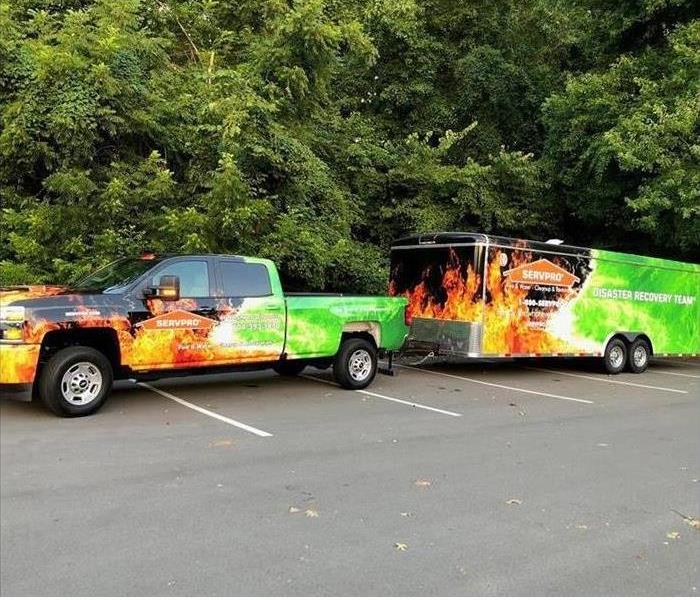 SERVPRO is prepared to help you during your disaster and your recovery.
SERVPRO is prepared to help you during your disaster and your recovery.
Each September, National Preparedness Month encourages and reminds Americans to be prepared for disasters or emergencies in their homes, businesses, and communities.
Homeowners, families, communities, and businesses can use this opportunity to find ways or help others understand more about preparing for disasters and reducing risks to health and the environment.
For more information on how you can prepare, please visit the following websites for more information:
FEMA - National Preparedness Month
ReadyNC - Plan & Prepare
City of Charlotte - Emergency Management Plans
Here are some basic preparedness tips:
- Awareness
Stay tuned to local news sources (i.e. radio, tv, web) to monitor server weather events.
- Be Hurricane Ready
Be prepared for storms by having emergency supplies and safe drinking water on hand.
- Flooding, Water Damage, and Mold
Mold growth can occur after sever weather and natural disasters if standing water or water leaks occur in your property. Contact a licensed Mold Remediation company or Specialist if you detect mold.
- Damage and Cleanup
Downed trees and damage to structures can be a safety issue. Be careful to avoid electrical and material hazards. It's best to contact local authorities and licensed damage restoration companies when in doubt.
SERVPRO of NW Charlotte, Lincoln County, Southern and NE Gaston County is prepared to help you 24/7 with storm damage repair and restoration.
Why SERVPRO - Certified: SERVPRO Cleaning
9/8/2021 (Permalink)
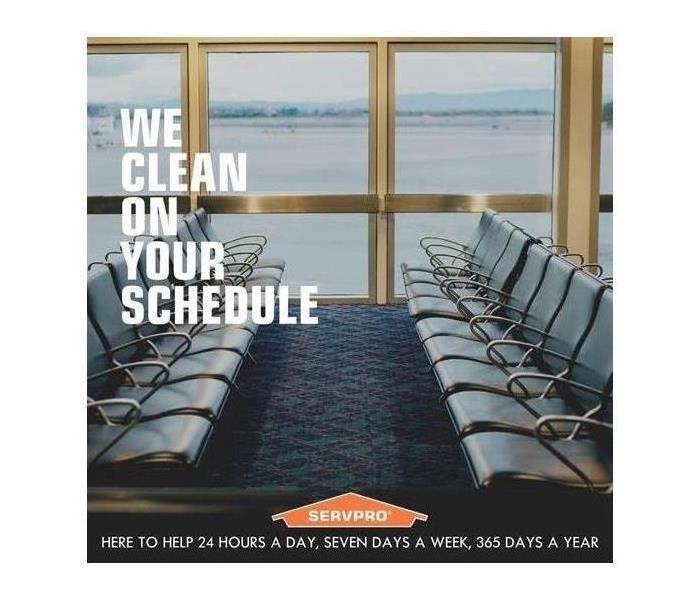 Certified: SERVPRO Cleaning
Certified: SERVPRO Cleaning
SERVPRO of NW Charlotte is ready 24/7 to clean and disinfect your facility or business, according to protocols set forth by the Centers for Disease Control and Prevention. Our team has years of experience - dealing with biological contaminants, and we will go beyond the scope of work that regular cleaning staff perform daily.
The CDC encourages cleaning of high-touch surfaces such as tabletops, counters, doorknobs, light switches, toilets, bathroom fixtures, phones, keyboards, tablets, and tables.
The CDC recommends usage of a labeled hospital-grade disinfectant with claims against similar pathogens to the coronavirus. Multiple products in the SERVPRO product line carry the EPA-approved emerging pathogens claims. While there is currently no product tested against this particular strain of the coronavirus, we are following all guidelines as provided by the CDC and local authorities.
If your facility or business needs deep cleaning services, call SERVPRO of NW Charlotte.
Cleaning Up Your Business After Storm Damage
9/8/2021 (Permalink)
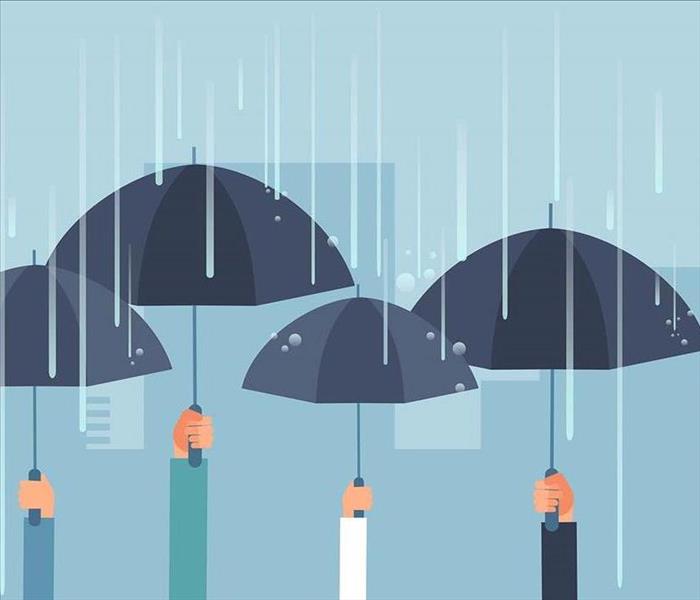 Cleaning Up Your Business After Storm Damage
Cleaning Up Your Business After Storm Damage
In North Carolina, there are many cases where storms cause significant damage to your business or the building you operate your business out of. If that is the case SERVPRO of NW Charlotte is here to help. We want to make sure that you have help from start to finish getting your business back up and operational again.
In most cases high winds will cause significant wind damage. This can cause shingles to come off, trees flying into windows and other types of high impact damage. Our experienced team can handle all of the situations 24/7, 365 days a year.
It is important if you have any questions to reach out to us at anytime. We hope you don't experience a severe storm, but if you do know that we are here for you.
Commercial Fire Loss? Here’s What to do Next
8/18/2021 (Permalink)
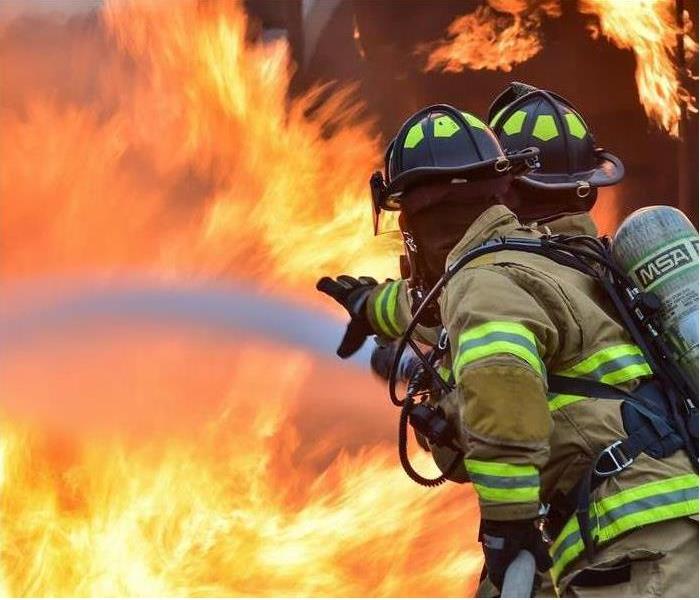 What to do after Commercial Fire loss.
What to do after Commercial Fire loss.
Here are important steps to take after a commercial fire loss:
1.) Protect your Property
Do anything you can to protect your property and what is left: Whether it's boarding up your property, putting up emergency fencing, or shutting off water mains - it's up to you to prevent further damage to the property after the fire. If you neglect to do this, your insurance policy might not pay for the additional damages.
Call a professional loss consultant who can explain to you what steps you need to take under your current insurance policy plan.
2.) Talk to professionals & experts
When experiencing a fire loss, your first response might be to take a break for a few days and process everything the events that just occurred. This is when you have to go against your instincts and talk to fire officials, specialists, and insurance professionals. You will begin by gathering the correct and required documentation.
Obtain a fire report from the your Fire Marshal's office. Seek a copy of current building codes from building department inspectors, and ask engineers or architects to write out the extent of the building's damage. Or if you think you can handle it on your own, hire a reputable licensed public adjuster who will help you with gathering all the information you need, along with helping you process your insurance claim.
3.) Contact your insurance company ASAP
It is absolutely imperative that you call your agent or insurance company to report the damages as quickly as possible.
If you take too long to contact your insurance agent or insurance company, it could cost you big in the long run. You don't need to request estimates early or sign any paperwork, just let the insurance company know that a fire loss (damage) has occurred.
SERVPRO of NW Charlotte, Lincoln County, Southern and NE Gaston County specializes in commercial fire damage repair and restoration. We’re locally owned and operated and part of the Mecklenburg, Lincoln, and Gaston communities. Our commercial fire team members are employees, not contractors. That means when property managers call us about an emergency water leak or hazardous cleanup, we can respond quickly.
For questions, contact us anytime at (704) 393-7890 or request help online.
Proactive Disinfecting: Helping businesses during the pandemic
8/16/2021 (Permalink)
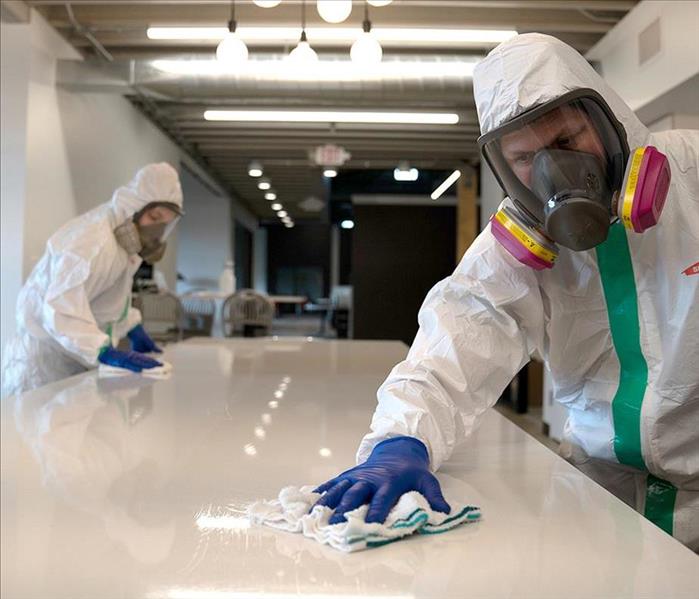 Why Choose SERVPRO for Proactive Cleaning
Why Choose SERVPRO for Proactive Cleaning
As commercial activity continues throughout the Charlotte area, business owners and property managers remain focussed on maintaining safe and healthy work environments. We provide professional standby cleaning services that provide peace of mind to employees, vendors, clients and customers.
Why SERVPRO for Proactive Commercial cleaning?
Proper cleaning and disinfection routines can significantly reduce or eliminate pathogens on objects and surfaces in facilities, workplaces, and offices. With deep cleaning and disinfecting now integrated into the new normal, businesses can rely on experts who deal specifically with biological contaminants.
The SERVPRO of NW Charlotte’s commercial cleaning team is fit-tested for full-face respirators and trained in biohazard cleaning protocols. Our deep cleaning experts are employees, not contractors, with more resources and the most effective equipment.
With our standby cleaning services, property managers and business owners can minimize disruptions while still ensuring their offices, buildings and facilities are thoroughly and professionally cleaned. For example, if a property manager calls us with a last-minute request for a facility deep cleaning that same night, we can take care of it. A contractor, however, has limited resources and might not be able to offer such a quick turnaround.
Viral cleanups: What we do, what we know
Whether you're addressing ducts, carpet, vents or equipment, ongoing maintenance cleaning will help keep your property looking professional and help prevent some maintenance issues. But the pandemic requires business owners to disinfect any high-touch surfaces regularly.
Examples include tables, doorknobs, light switches, hard-backed chairs, countertops, handles, desks, toilets, faucets, sinks, fixtures and electronics (phone receivers and keypads, computers, keyboards, tablets, touch screens, kiosks and remote controls).
Other commercial spaces that may require disinfecting and deep may include:
- Sales counters
- Water fountains
- Soda and snack machines
- Kitchens, break rooms and food areas
- Bathrooms
- Meeting rooms and classrooms
- Shelving and racks
- Carpets, rugs and drapes
- Furnaces and air conditioners
- Elevators and stair and escalator handrails
- Playground and fitness equipment
Whether the job requires sanitizing agents, germicides, or antimicrobial treatments, SERVPRO of NW Charlotte only uses OSHA-approved cleaning agents to eliminate contaminants. And, our cleaning experts adhere to Centers for Disease Control (CDC) and local authority guidelines related to pathogen exposure and cleaning procedures.
Learn more about ProActive Clearing, Disinfecting, and
- The Deep Clean: Disinfecting workplaces, offices and facilities
- Staying Ahead with Disinfecting Cleans: The importance of proactive cleaning through a Pandemic
- Reactive Disinfecting - "Like it never even happened."
Standby commercial cleaning
Although SERVPRO of NW Charlotte is part of a national network of 1,700-plus franchises, we’re locally owned and operated and part of the Mecklenburg, Lincoln ,and Gaston communities.
Our team can handle any commercial cleaning needs: proactive cleaning when there aren’t confirmed cases or known coronavirus exposure; deep cleaning for possible coronavirus exposure; and reactive cleaning if there’s a confirmed case. For questions, contact us anytime 24/7 at (704) 393-7890 or request help online.
A Two-Step Guide to Fire Damage Prevention
8/12/2021 (Permalink)
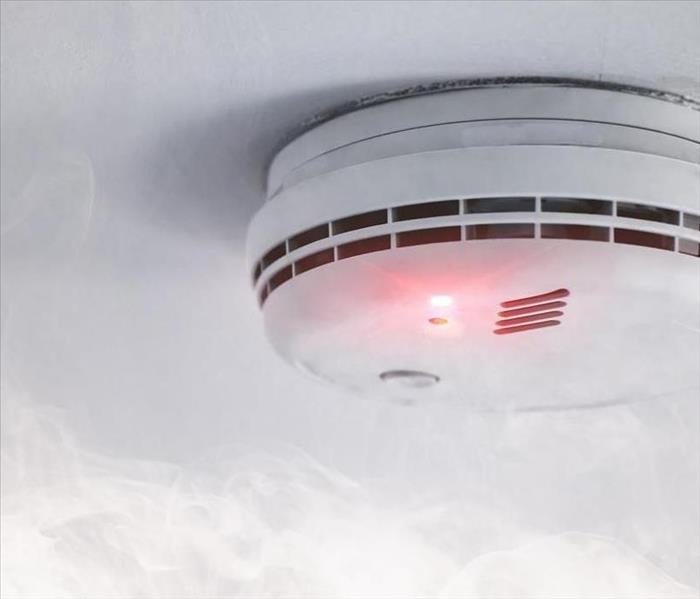 Guide to Fire Damage Prevention
Guide to Fire Damage Prevention
Fire damage is an easy topic to think of as “something that happens to other people.” SERVPRO of NW Charlotte has witnessed firsthand how “other people” didn’t think it could happen to them either. However, a little prevention could have gone a long way. The answer to minimizing fire damage is simple: it starts with you! Remembering these two simple suggestions will make sure you’ve done everything possible to prevent fire damage.
Steps to Fire Damage Prevention
1. Have all the systems in place.
- Detectors
Make sure that you have working smoke and carbon monoxide detectors throughout your home. Ideally, these would be professionally hard wired into your home with a backup battery. Any fire safety professional will tell you these are not optional - they make the difference between life and death and will alert you at the onset of a potential hazard so that you can extinguish it as soon as possible. Also, have detectors checked each month.
- Extinguishers
Should an alarm go off, the next system to have in place is a fire extinguisher or sprinkler system. Fire extinguishers should be available in the kitchen, and ideally in at least one main bedroom or any areas that are likely to have an open flame and be a potential fire hazard.
2. Know your hazards
Homes are filled with hidden fire hazards. Closely monitoring or even eliminating such hazards will automatically prevent a fire and minimize the potential for fire damage.
- Cords and Wiring
Make sure surge protectors and extension cords are not overloaded. In addition, make sure none of your electrical cords have exposed or fraying wires. If you notice any odd electrical behavior in your home, have the electrical wiring checked by a professional electrician.
- Dryer
Clean your dryer’s lint trap after every drying cycle so that lint will not accumulate and become a fire hazard.
- Fireplace
Have your chimney cleaned on a routine basis, and do not have a fire in your fireplace unless recommended by a professional.
- Open Flames
Keep burning candles away from flammable objects such as curtains, tablecloths, etc. Do not leave open flames unattended. Even better, use battery-operated candles to eliminate the potential of hazard from an open flame.
- Natural Gas
Always keep a close eye on pipes and appliances that use natural gas. If you smell gas, call your utility company immediately. Do not turn on or turn off any appliances. Doing so could cause a spark that will ignite any leaking gas. Strictly follow the directions of your utility company.
- Outdoor hazards
The best policy for outdoors is to not have piles of leaves, brush, or foreign objects such as glass surrounding your home. In extreme temperatures, such piles are flammable and tend to self-ignite.
- Cooking, Outdoor Fires, and Grills
The number one cause of fire damage is cooking. Always have a fire extinguisher nearby the kitchen, grill, or outdoor fire. The quicker you can act on an uncontained fire, the less the extent of the damage will be.
- Items that Charge
Keep a close eye on rechargeable items such as batteries, cell phones, hoverboards, and more. Charge items away from flammable materials such as curtains, pillows, bedspreads, etc. If the item’s battery or the charge itself begins to feel hot, do not leave it unattended and it is best to unplug the item.
As always, it is essential to remember that a prompt response will lessen any fire damage, reduce further damage and minimize costs. However, should fire damage occur despite your preparation, our certified professionals are ready to respond immediately and will help return your home to its original condition.
We are locally owned and operated and available 24 hours a day, 7 days a week. The quicker you call us, the quicker we can help!
What every NC business owner should know about flood insurance coverage
6/18/2021 (Permalink)
 Commercial Water Damage Restoration
Commercial Water Damage Restoration
If your commercial property takes a hit - whether it’s an office flood caused by a significant storm or restaurant water damage from firefighting efforts and sprinkler systems - you want to get back to business as soon as possible.
Every hour you spend restoring commercial property after a flood emergency is lost revenue and productivity. And the insurance claims process adds more stress to an already challenging situation.
Fortunately, local experts can mitigate the damage, manage the restoration project through to its completion, and help you navigate the insurance process: SERVPRO of NW Charlotte, Lincoln County, Southern and NE Gaston County.
Additionally, SERVPRO is a preferred vendor for many insurance companies. Why? Because adjusters understand our goal is to give our commercial customers the best service possible to get them back up and running quickly. Our professionals provide 24-hour emergency response, quickly identify and mitigate damage, assess the loss, restore the damage, and develop a thorough electronic case file for customers and adjusters.
However, long before a disaster or emergency strikes, business and commercial property owners should understand the ins and outs of their insurance policies so there are no surprises about coverage. Below are some North Carolina Department of Insurance responses to seven commonly asked questions about flood insurance.
What is the National Flood Insurance Program (NFIP)?
In 1968, the federal government established NFIP. The Federal Insurance Administration, which is part of the Federal Emergency Management Agency, administers the program. NFIP makes flood insurance available to property owners in communities that help reduce further flood losses by adopting and enforcing floodplain management ordinances. Property owners must be within a city, township or county that participates in the NFIP by enforcing floodplain management standards. Flood insurance isn’t just for properties in particular flood hazard areas; nearly 30 percent of flood insurance claims are for properties outside floodplains.
Does my policy cover flood damage to my commercial building and its contents?
Standard commercial property policies don’t cover water damage due to flood; however, some carriers offer limited coverage to premium policies or add it to other policies by “endorsement.” An NFIP policy covers water damage loss that results directly from flood.
I covered for sewage backup if I added an endorsement to my policy?
Most commercial property policies don’t cover water damage due to backup of sewer or sump pump; however, many companies will sell this coverage through a separate endorsement or addition to the policy. While silent on sump pump coverage, NFIP policies provide sewer backup coverage when there are general flooding conditions in the area (even if flood water hasn’t touched the property), the flood caused the sewer backup, damage occurs within 72 hours after the flood recedes, and the property value is at least 80-percent.
Is there coverage for the fire damage on my flooded property?
Most commercial property policies exclude flood as a covered cause of loss; however, it gives back coverage for fire and explosion, and in some cases, for theft or sprinkler coverage in the event of a flood. NFIP policies don’t provide coverage for fire or other named perils.
Receding flood waters left debris all over my property. Is debris removal covered?
Most commercial property policies provide coverage for debris removal if a covered peril causes the loss. NFIP policies cover insured debris removal anywhere and non-insured debris only if it’s the insured property. Uninsured debris on the insured’s lawn isn’t covered.
Will insurance cover my lost income if I had to close my business because of a flood?
Most commercial property policies provide business income protection within the policy or by endorsement; however, the coverage only applies to a covered cause of loss. If the policy includes flood coverage, that coverage also applies to business income. NFIP policies don’t cover for loss of use, loss of access, business interruption, additional expense or loss of profits.
Commercial water damage restoration
Regardless of the scope or size of the damage, SERVPRO of NW Charlotte, Lincoln County, Southern and NE Gaston County can respond immediately to commercial water damage emergencies. Our highly trained restoration technicians are employees - not contractors - who use the most advanced water damage inspection and extraction equipment. To learn more, call us anytime at (704) 393-7890 or request help online.
Is It Clean, Gray or Black Water? Get In the Know On H2O
5/18/2021 (Permalink)
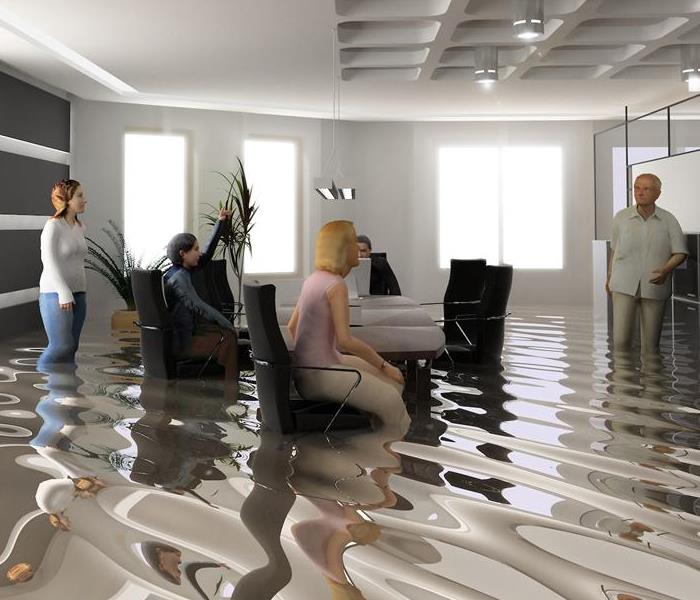 Commercial Property Cleanup Emergency
Commercial Property Cleanup Emergency
A faulty grease trap backs up the sewer of a seafood restaurant. A heavy storm floods a creek that seeps into an adjacent apartment complex. Roots from a 100-year-old cedar tree penetrate a sewer line outside a beauty salon. A cracked toilet tank leaks overnight throughout the administration offices of an industrial plant.
In each of these commercial cleanup emergencies, business owners and property managers must deal with contaminated water that can quickly turn into a critical situation if not handled properly.
When it comes to cleanup and disinfection of commercial spaces, it’s best to call certified water damage restoration experts. The SERVPRO of NW Charlotte, Lincoln County, Southern and NE Gaston County team is trained to handle contaminated water emergencies properly and works 24/7/365 to help our customers get their property back to business.
While we work to provide relief against water damage, it’s essential for business owners and property managers to know the different types of contaminated water. You can easily see or smell contaminates in some cases, but water can look and smell perfectly fine and still be harmful.
Clean, gray and black water: What’s the difference?
Water damage can be classified by three types of contaminated water: clean, gray and black.
Clean water is free from bacterias and viruses and comes from a source like a broken water supply line or leaking faucet. If not treated quickly, clean water can turn into gray or black water, depending on the length of time, temperature and contact with surrounding contaminants.
Gray water, or wastewater, hasn’t come into contact with solid human waste but is still considered contaminated. It also may contain bacteria and viruses that cause discomfort or illness. Gray water drains and flows from places such as showers, sinks and baths. It also comes from overflowing washing machines, dishwashers and toilets with urine but no feces.
If done correctly, gray water can be filtered and reused for lawns and gardens; however, it also can quickly degrade if left untreated.
Black water is highly contaminated and contains harsh chemicals and human waste filled with harmful bacteria and disease-causing pathogens. You should avoid contact with black water as it can cause severe illness or death if ingested. Water is considered black when it comes from a toilet bowl with feces or sewer back-up. It’s also generated from overflowing streams or rivers mixed with sewer water and standing water with microbial growth.
Sewage cleanup and commercial water restoration
Any water contaminated with sewage backup should be considered an emergency and addressed as quickly as possible. The water may contain viruses, bacteria and other microbes that cause serious illnesses. And if black water isn’t removed promptly, it can rot, dry out and lead to airborne contamination.
SERVPRO professionals are specially trained and have the equipment and protective gear to safely restore your business. Our water damage restoration specialists will inspect your business to determine the appropriate plan of action for the type of water encountered.
We’re locally owned and operated and part of the Mecklenburg, Lincoln and Gaston communities. Our fire damage restoration technicians are employees, not contractors. They can respond to sewage cleanup and water damage emergencies with the most advanced cleaning equipment, products and technology to get you back to business. To learn more, call us anytime at (704) 393-7890 or request help online.
Keep Your Handheld Devices Spring Clean, All Year Long
5/18/2021 (Permalink)
 Woman Cleaning Electronic Device
Woman Cleaning Electronic Device
Everyone knows about personal hygiene: Wash your hands after using the bathroom. Don’t cough into your hands. Shower regularly. Brush your teeth. Keep your hair and nails clean. But the pandemic has put the spotlight on another equally important practice: phone hygiene.
Think about all the different surfaces you touch during day-to-day activities. Door handles, gas pumps, ATMs, credit card machines, shopping carts, self-checkout counters, light switches and crosswalks. You’re constantly picking up germs and bacteria on your hands and fingers, which are passed back and forth to your devices.
We’re so used to grabbing our phones automatically and don’t always have clean hands when we do - and that can make you sick. Handheld devices are a breeding ground for microbes and can promote ear and throat infections, stomach flu, ear infections, pneumonia and coronavirus.
Some experts claim cell phones carry 10 times more bacteria than toilets. Our phones touch our face and ears and come close to our mouth, eyes and nose. But chances are, we’re not cleaning them thoroughly or often enough.
Steps to disinfect germs from your devices
Use disinfecting wipes for the safest, most effective way to kill the germs, bacteria and viruses lingering on your devices.
- Unplug the device and remove the device from its case.
- Wipe device with a soft, lint-free cloth to help remove grease, grime and dirt.
- Use a disinfecting wipe to clean the device, taking care around ports and buttons. The same wipes you use when disinfecting surfaces are safe for electronics and kill the bacteria and viruses living on your phone. Don’t oversaturate and avoid using liquid household cleaners and sprays that can find their way inside and damage your device.
- Let air dry for 5 minutes. Keep in mind that many products for electronics contain alcohol because it dries quickly.
- Wipe off any excess disinfectant with a soft cloth, preferably with a different cloth from the one used in step 2.
For electronic surfaces, the Centers for Disease Control and Prevention recommends following the manufacturer’s cleaning instructions and using a disinfectant from the EPA List N (if needed). Steer clear from heavy-duty chemicals, abrasive agents, bleach and bathroom cleaners. Also keep in mind that disinfecting wipes with alcohol, bleach or vinegar may wear down the protective coating on device screens.
6 ways to help keep your device germ-free
Because we take our phones with us everywhere, they’re constantly exposed to germs. But you can help keep your phone clean and limit exposure.
- Don’t cross-contaminate: An easy way to spread germs is by touching your phone and then touching something else. Be extra careful if that “something else” is food-related.
- Where you go matters: Know there are potential germ hazards at gyms, grocery stores, retail shops, or anywhere else with shared, high-touch surfaces. Whenever possible, keep your phone in your purse, bag, pocket or car.
- Get in sync: Go hand-free when making calls so your phone doesn't press against your face or mask.
- Keep bathrooms phone-free zones: Many people admit to using their cell phones in the bathroom. It’s time to flush that habit down the drain.
- Take preventative measures: To remove germs, wipe your phone down when you come home after being out in public, or at least once a day.
- Kill the germs: Disinfect your cell phone every other day, or at least twice a week.
Always wash your hands: Always. Wash. Your. Hands.
Have Fire Damage? Here's what to do next.
4/27/2021 (Permalink)
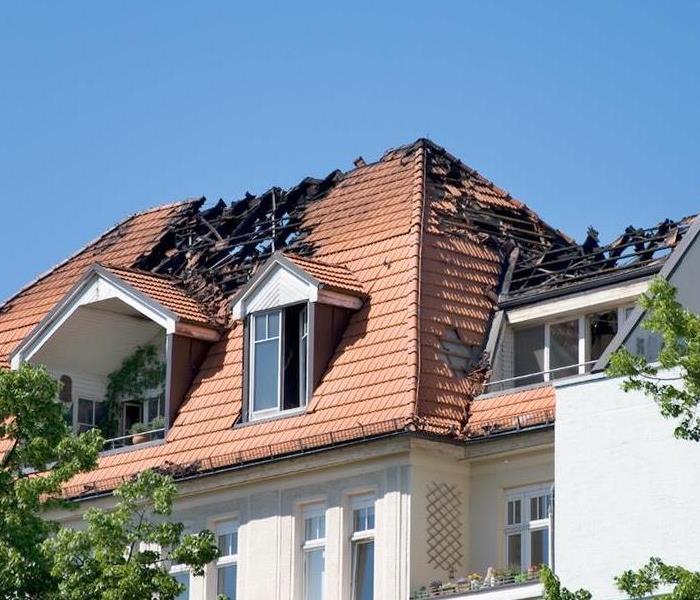 Be Smart and Be Safe after a Home Fire
Be Smart and Be Safe after a Home Fire
Home fires happen and it’s important to know your next steps if your affected by loss from a home fire. Cooking accidents, heating issues, and electrical malfunctions account for close to 70% of all residential home fires. An average of 358,500 homes experience a structural fire each year, according to the National Fire Protection Agency.
Most people needed fire damage repair in their homes after an accidental or unintentional fire, according to the latest statistics from the U.S. Fire Administration.
If you need fire or smoke damage repairs, there are some important steps to take before calling a professional fire and smoke restoration specialist to make your home safer. Note: The fire department determines whether it is safe to stay in your home or not.
Be Careful with Fire Damage
Often, with fire damage and smoke damage, there is also water damage hidden behind the walls from fire fighting efforts. After a fire, call a professional fire damage repair company to ease your worries and take care of all the heavy cleaning, drywall replacing, and mold and mildew preventative maintenance.
Be Smart and Be Safe after a Fire
- Make sure it’s safe to re-enter home or affected areas. First discuss safety with a fire marshal and ensure that it is safe.
- Wear and use protective clothing including rubber gloves, protective eyewear, and a face mask to prevent breathing any debris particles. Keep hands clean so as not to further soil upholstery, walls and woodwork.
- Change HVAC filters.
- Avoid using your own household vacuum. Soot that has collected like dust requires a special vacuum.
- Don't attempt to wash any walls or painted surfaces or shampoo carpet or upholstery without contacting us or another fire damage restoration company.
- Be Safe and Smart. Don’t attempt to clean any electrical appliances that may have been close to heat, fire, or water without consulting an authorized and licensed repair service.
- Don't turn on electrical appliances affected by fire or water from firefighting efforts. If ceiling fixtures if ceiling are wet, then the wiring may be damaged.
- Don't send garments to an ordinary dry cleaner. Improper cleaning may permanently set smoke odor in your clothing.
Even in small amounts– can be extremely dangerous even if the after effects are not immediately visible to you. Contacting a professional fire damage company helps ensure proper repairs to your property, as well as mold and mildew prevention.
24-hour emergency fire damage restoration services
We’re locally owned and operated and part of the Mecklenburg, Lincoln and Gaston communities. Our fire damage restoration technicians are employees, not contractors. They can respond to fire damage emergencies with the most advanced cleaning equipment, products and technology to get you back in your home. To learn more, call us anytime at (704) 393-7890 or request help online.
Tips and Signs to Help Prevent, Find and Fix Water Damage in Your Home
4/15/2021 (Permalink)
 Tips and Signs to Help Prevent, Find and Fix Water Damage
Tips and Signs to Help Prevent, Find and Fix Water Damage
Water damage from floods, leaks or plumbing mishaps can wreak havoc for Charlotte area homeowners, spreading quickly to ceilings, walls, floors, insulation, duct systems, crawl spaces and attics.
During and after a significant flooding event, you may face many potential challenges - from contaminated water to electrical appliances and outlets exposed to water. While trying to salvage priceless family photos and other valuables, homeowners may also encounter hazardous materials or mold growth.
Fortunately, the water damage repair and restoration experts at SERVPRO of NW Charlotte, Lincoln County, Southern and NE Gaston County have the experience, equipment and technology to restore your property and make the flooding event "Like it never even happened."
But before our team arrives to inspect, assess and find all the damage after a water loss, there are several ways homeowners can help.
Water damage pro tip: Help protect your wood furniture from light flooding and rising water by wrapping aluminum foil around the legs or placing wood blocks under the legs.
Look, smell and listen for water damage
Not all water damage is evident at first glance, which is why homeowners should know the signs of hidden water damage. Quickly identifying and responding to water damage sooner rather than later is critical for drying and safety. It also helps lessen the damage and structural costs to repair and restore your home to normal.
Watch for these three signs of potential water damage:
- Discoloration is a simple water damage indicator because many pigments used in fabrics, paints, floors and ceilings change colors when they contact water. The shape, spread and color will vary depending on the amount of water exposure and what materials the affected surface touched. Color bleeding from one fabric to another is one of the most damaging results of a water-damaged home.
- Oxidized metals, freshly soaked wood, wet insulation and mold growth can create unique and off-putting odors in your home. However, these smells can help identify flood-related issues. For example, a musty smell in your bathroom could be a sign of water damage hidden in cracked shower tiles, old caulking and grout, or a leaky seal at the toilet’s base.
- Whooshing, dipping, humming or other unusual sounds behind walls and below your home floors can indicate a water leak or other plumbing issue. Drips are the most apparent sounds you hear, but high-pressure water inside pipes throughout your home can also create unique sounds when there’s a problem.
Water Damage repair and restoration
As a locally owned and operated business, SERVPRO of NW Charlotte, Lincoln County, Southern and NE Gaston County can respond quickly to your water or flood damage event. And we come armed with all the tools to get it done accurately and efficiently - from an infrared camera to detect hidden moisture behind walls to powerful water extraction equipment that speeds the drying process.
Our residential restoration and cleaning technicians are employees, not contractors, and can respond 24/7 when a significant flooding event occurs. And if we need additional resources or personnel, we can call upon our national network of 1,700 SERVPRO franchises and disaster recovery teams. To learn more, call us anytime at (704) 393-7890 or request help online.
Inspect, Mitigate & Restore: 3 Stages of Water Damage Repair for Businesses
4/15/2021 (Permalink)
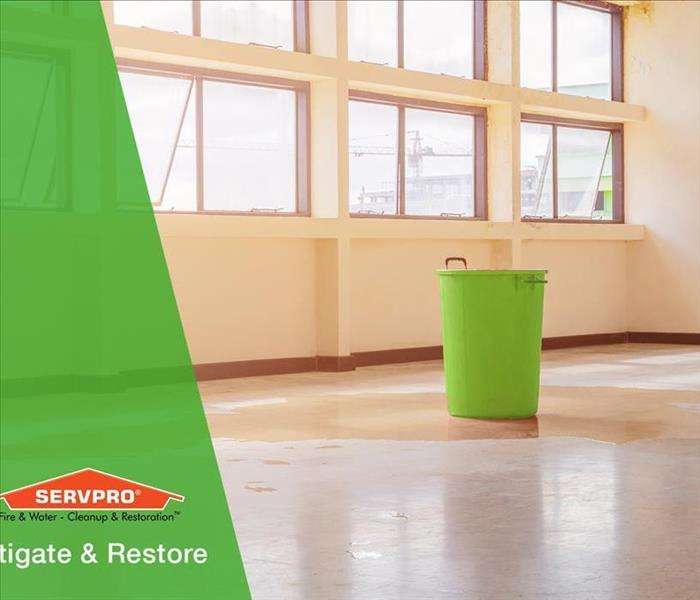 3 Stages of Water Damage Repair for Businesses
3 Stages of Water Damage Repair for Businesses
When a water-related emergency or disaster strikes your business or facility, time is of the essence. There’s a critical period when business owners and property managers must take action to decrease health effects, preserve their commercial space and minimize lost productivity and revenue.
Fortunately, the commercial water damage repair and restoration experts at SERVPRO of NW Charlotte, Lincoln County, Southern and NE Gaston County have the experience, equipment and technology to restore your business or property as if the flooding event never happened.
But before our team arrives to assess the damage, minimize future destruction and develop a restoration plan after a significant water emergency, there are several things business owners and property managers can do to help.
First, be sure to shut off the electrical power before entering your flooded commercial space or building. It’s also advisable to wear a mask, rubber gloves, protective clothing and eye protection. Once inside, ventilate the affected areas by opening windows and doors and placing fans where possible. Keeping good airflow throughout the building’s interior and maintaining moderate temperatures helps decrease mold growth risks.
You’ll likely find porous items that have absorbed contaminated floodwater. Those can’t be restored and should be discarded. Also, throw away any drywall, wallpaper, particle board, carpets, carpet pads, or insulation that has become saturated. Fortunately, many fabrics such as clothing, curtains, drapes, linens and towels are salvageable. Detergent and a normal cycle in a washing machine should remove most contaminants or stains.
When SERVPRO technicians arrive at your business or commercial property, their plan will depend on water damage severity. However, the general process will remain the same: Stages focussed on reducing your downtime, restoring your property, settling any claims and getting you back to business.
1. Inspect water damage. Before restoration can begin, our skilled water restoration technicians will thoroughly inspect your property to identify the scope of the damage, contamination levels, and how far the water has traveled. A detailed look at each area of your business affected by a storm or flooding is the first stage in developing an appropriate water damage repair plan to ensure a successful restoration.
2. Mitigate against further damage. After the inspection and damage assessment is complete, technicians will start the crucial next step of preventing the damage from getting worse and securing the affected areas.
This may include:
- boarding up roofs and broken windows;
- covering areas with tarps;
- blocking water-seeping holes;
- removing excess water;
- identifying and eliminating unpleasant odors; and
- drying the structure to prevent mold or mildew growth, which can take several days to appear.
3. Restore your business. Once cleanup is complete, the water damage repair and restoration phase can begin. Depending on the severity of the water damage, this may involve removing, repairing or rebuilding roofs and walls, replacing insulation, carpets and floor, drying and sanitizing saturation pockets, painting, and restaging the property and its contents to its previous condition. Completion of this stage means commercial clients can return to their business or property as if the water or storm damage disaster never happened!
Commercial water damage repair and restoration
Locally owned and operated, SERVPRO of NW Charlotte, Lincoln County, Southern and NE Gaston County can respond quickly to a water or flood emergency at your business. And we come armed with all the tools to get it done accurately and efficiently.
Our commercial restoration and cleaning technicians are employees, not contractors, and can respond 24/7 when a significant flooding event occurs. And if we need additional resources or personnel, we can call upon our national network of 1,700 SERVPRO franchises and disaster recovery teams. To learn more, call us anytime at (704) 393-7890 or request help online.
Advancing the Commercial Restoration Game with 3D Technology
3/29/2021 (Permalink)
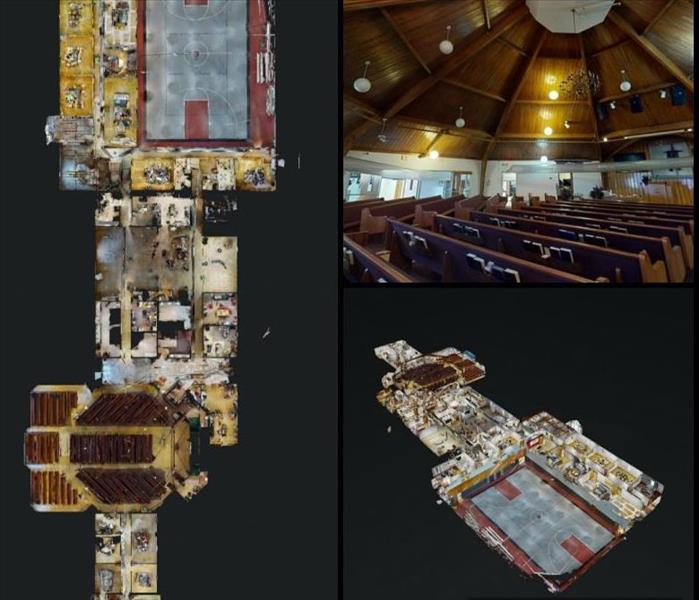 3D scanning technology can reduce their downtime, restore their properties, and settle claims faster.
3D scanning technology can reduce their downtime, restore their properties, and settle claims faster.
In the commercial cleanup and restoration game, performance is everything.
It’s critical for business owners and property managers to recover quickly from water, storm, or fire damage. Now, thanks to 3D scanning technology, commercial clients can reduce their downtime, restore their properties, settle claims and get back to business more efficiently than ever before.
Matterport’s 3D reality capture technology has been around for a while, primarily used in the real estate industry to help sell homes. Instead of relying on 2D photographs, the technology takes comprehensive 3D scans in real-time that capture every detail.
Once the technology expanded into the cleanup and restoration world, SERVPRO of NW Charlotte, Lincoln County, Southern and NE Gaston County was an early adopter among the 1,700 SERVPRO franchises across the country. When Mitigation Estimating Manager (and Matterport ambassador) Jason Sadler told franchise owners Penny Benkeser and Danny Cox about the camera technology, they were immediately ready to “jump on board” as the first franchise to implement Matterport in the greater Charlotte area.
Not only does the investment streamline the property restoration process, it instills peace of mind for business owners, property managers and adjusters.
Loss documentation process goes from arduous to efficient
There are many moving parts and pieces during any restoration project, especially with more extensive and complex business losses from storm damage or fire and water damage. Once SERVPRO’s disaster recovery team arrives on a scene, they must determine where and how the damage occurred and thoroughly document the scene for an insurance claim.
Using 3D technology shifts the loss documentation process from arduous to efficient, Sadler said. Project managers no longer need to spend a tremendous amount of time walking and measuring properties and buildings while simultaneously sketching and scanning drawings or taking, labeling and documenting 2D photos.
“The Matterport technology scans the property and creates a 3D model and floor plan that the restoration team, client and insurance adjuster can securely access online from anywhere,” Sadler said. “We’re not doing the documentation process and the adjuster isn’t doing it; the camera is doing it for us with 99-percent accuracy, which takes human error out of the picture and holds everyone accountable.”
Using snapshots in time to save time … and ensure accuracy
The technology is a tremendous time-saver for disaster cleanup and restoration - whether it’s a fire, water or storm emergency, Sadler said. Precise measurements of a commercial building or property mean more accurate loss and repair estimates and fewer discrepancies on damage claims.
Adjusters can review property scans the same way as project managers. They can zoom in and out of a 3D model on their computer screen and measure remotely, which means less time spent on the job site. This helps expedite the claims process because adjusters know they can trust the camera’s accuracy and ability to capture every detail.
“The ability to have a snapshot in time before major disruption and restoration of the job site is paramount. Everyone - project managers, clients and adjusters - can see exactly what a business looked like at that precise moment when the property was scanned,” Sadler said.
He added, “That’s powerful because things happen in between that time and when you take additional pictures for the restoration and repair process. You don’t want to miss out on certain details of the claim, certain line items or certain objects because every little detail is required to help our commercial customers get back to business quickly and efficiently.”
24-hour emergency commercial building restoration services
We’re locally owned and operated and part of the Mecklenburg, Lincoln and Gaston communities. Our commercial restoration and cleaning technicians are employees, not contractors. They can respond to commercial property emergencies with the most advanced cleaning equipment, products and 3D technology to get you back to business. To learn more, call us anytime at (704) 393-7890 or request help online.
3D Technology Gives Homeowners Peace of Mind Throughout Disaster Recovery and Restoration Process
3/22/2021 (Permalink)
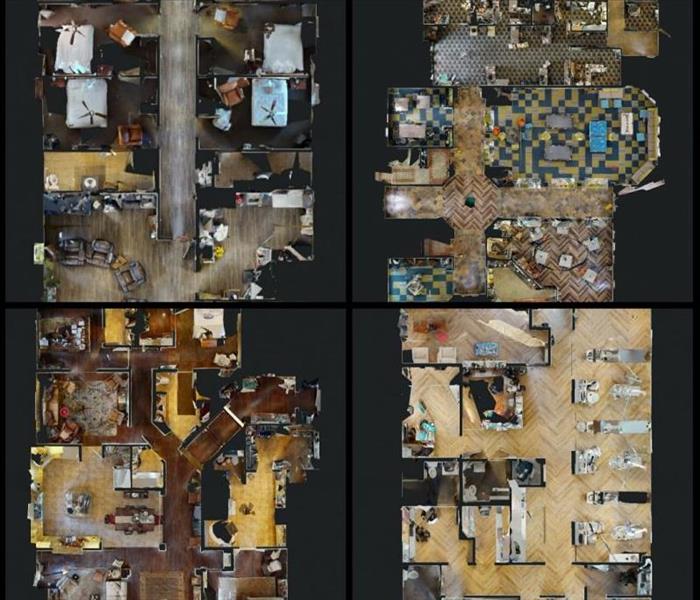 3D scanning technology for homeowners.
3D scanning technology for homeowners.
3D scanning technology is helping residential customers recover from storm, fire, and water damage quicker than ever before while eliminating many of the stresses and inconveniences homeowners face following a disaster.
SERVPRO of NW Charlotte, Lincoln County, Southern and NE Gaston County is one of the first restoration companies in the greater Charlotte area to adopt Matterport’s reality capture technology for comprehensive loss documentation. Using a 3D camera follows property insurance and restoration standards while also adding another transparency level for homeowners and adjusters.
“The Matterport is an amazing technology with far-reaching benefits for homeowners and adjusters,” said Jason Sadler, SERVPRO of Northwest Charlotte’s mitigation estimating manager. “It streamlines the entire loss documentation process by capturing a home in its current state and measuring every inch with 99 percent accuracy.”
As SERVPRO’s Matterport ambassador, Sadler trains restoration specialists to use the 3D camera to scan damaged properties and document everything visually and dimensionally. Removing human error from the process results in a comprehensive and accurate record of a property’s condition and inventory.
“We provide homeowners with more precise loss documentation and repair estimates required for insurance claims. Using the 3D technology eliminates the need to spend hours at a site taking hundreds of 2D photographs and measurements,” he said. “Because the camera captures all the necessary data, our customers and adjuster know they can trust us because this technology is going to hold us accountable.”
Homeowners benefit from expedited claims process
Residential clients are happy that SERVPRO of NW Charlotte, Lincoln County, Southern and NE Gaston County has implemented scanning solution technology because it helps speed up the claims process and offers them peace of mind. Meanwhile, it allows adjusters to review scans and take precise measurements from their computer rather than spend hours doing it at a job site and keep the claim process moving forward.
“Our goal is to make our clients’ houses feel like home again as quickly as possible after disaster strikes and the Matterport technology helps expedite the settlement of claims,” he said. “Essentially, this is a third-party entity performing documentation for us. It’s scanning and providing a floor plan for us, the adjuster and the client. Project managers and adjusters aren’t doing it. The camera is doing it now.”
There’s no longer a need to argue about measurements or pre-existing conditions, negotiate different functions of an estimate, or try and determine if a scratch on a kitchen floor was there before or after work started. All these issues are settled by the fact that the camera can capture such finite details, Sadler said.
“It’s also been a tremendous help for SERVPRO’s in-house team that handles personal property and contents. If there’s a fire or substantial water damage, it might require packing out an entire home and then restaging it after the restoration is completed,” Sadler said. “Of course, we label and document everything, but 3D scans allow the team to put a home back together exactly how it was supposed to be before the fire, water or storm disaster happened.”
Customer connection throughout disaster recovery process
Residential clients can easily access their homes’ 3D scans and loss documentation from anywhere via a secure web link on Matterport’s website, where the content is stored. The technology keeps homeowners informed and connected throughout the entire recovery and restoration process.
“It gives a lot of clarity into what's going on with a claim or property, which benefits homeowners and adjusters,” Sadler said. “They put more trust in us because we're offering documentation that's far and wide better than anybody else documenting a claim traditionally.”
We’re locally owned and operated and part of the Mecklenburg, Lincoln and Gaston communities. Our residential restoration and cleaning technicians are employees, not contractors. They can respond 24/7 to homeowner emergencies with the most advanced cleaning equipment, products and 3D technology. To learn more, call us anytime at (704) 393-7890 or request help online.
What Does it Mean to be Certified: SERVPRO Cleaned?
2/15/2021 (Permalink)
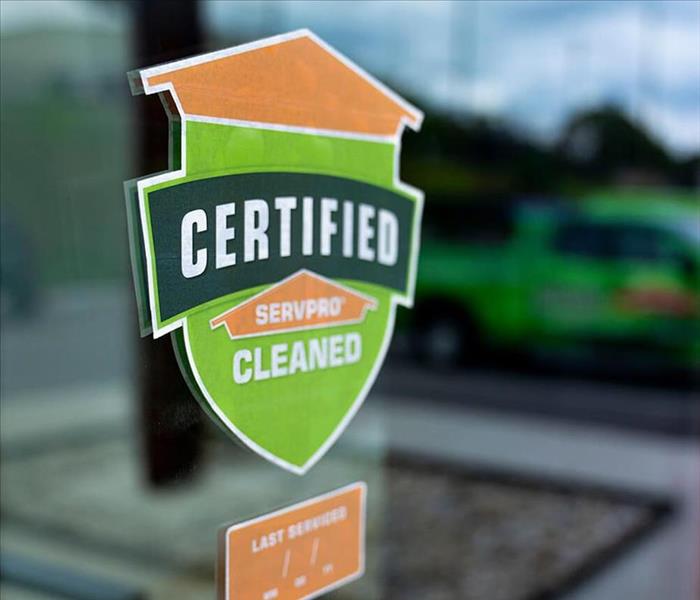 Certified: SERVPRO Cleaned
Certified: SERVPRO Cleaned
Butter blocks cholesterol. Pet food extends dogs’ lifespan. Vitamins prevent the flu. Shoes help you lose weight. Just because a company claims something in its marketing, it doesn’t make it true. This also applies to companies offering cleaning services to mitigate viral pathogens without the expertise to back it up.
“There are a lot more people doing ‘COVID cleaning’ now who have no experience with infectious disease control and are not qualified to be doing this service,” said Jason Sadler, mitigation estimating manager for SERVPRO of Northwest Charlotte. “They're just doing it because there’s not much work for them right now and they need to make money somehow.”
Certified: SERVPRO Cleaned
While Charlotte and surrounding communities start to get back to business, many people are still hesitant about gathering in brick-and-mortar locations such as restaurants, businesses and public spaces.
Since the pandemic hit, there’s a new sense of what it means to be ‘clean.’ It’s not just standard janitorial, carpet or surface cleaning, it’s about proactive and defensive viral pathogen cleaning for commercial locations.
“SERVPRO has 50-plus years of experience in biohazard decontamination and biochemical spill remediation,” Sadler said, “So when we say we offer a professional COVID cleaning service, our team has the training and experience to ensure a higher standard of clean.”
Advanced viral pathogen cleaning program
Because each business and brick-and-mortar facility is unique, the SERVPRO team consults with customers to tailor a commercial cleaning program around their needs. For example, the COVID cleaning needed at a burger restaurant may differ from an insurance office.
Once a plan is established, SERVPRO’s deep clean experts - armed with air scrubbers, thermal foggers and proprietary EPA-approved hospital-grade solutions - go in and clean and decontaminate following standards set by local authorities and the Centers for Disease Control and Prevention.
COVID cleaning across the country
SERVPRO of Northwest Charlotte is part of a national network of 1,700-plus franchises. While we’re locally owned and operated and part of the Mecklenburg, Lincoln and Gaston communities, our company also has national accounts spanning the country. Some of our large commercial clients have hundreds if not thousands of buildings in dozens of states.
“These clients have vetted us to perform the same consistent services we’re performing locally for their other locations all over the country because they know they can make a phone call to one person who's going to pick up every time and take care of them,” Sadler said.
“When you see the Certified: SERVPRO Cleaned shield posted on a window or the home page of a business website, you can walk in knowing that business has committed to a higher and safer standard of clean and the facility was cleaned properly by a professional commercial cleaning company.”
24-hour emergency services
SERVPRO of NW Charlotte, Lincoln County, Southern and NE Gaston County’s commercial restoration and cleaning technicians are employees, not contractors, which means our team can respond faster to emergencies with the most advanced cleaning equipment and products. To learn more about commercial cleaning assistance or request a free quote, contact us anytime at (704) 393-7890 or request help online.
Smoke: The Most Onerous of Odors
2/8/2021 (Permalink)
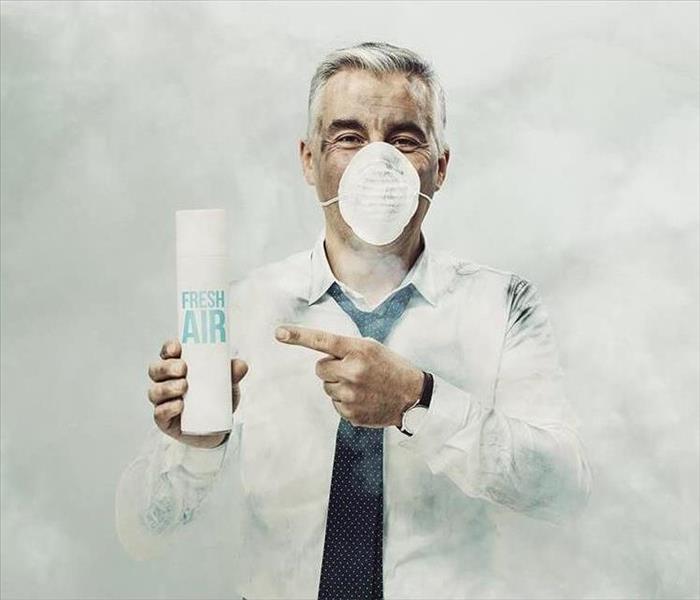 Removing Odor from Property
Removing Odor from Property
In the battle against stenches, there’s one that defies even the most skilled odor removal and deodorization experts: Nicotine.
“The key to eliminating odors is to remove the source. But nicotine is made up of very, very small micron-level particulates that can embed themselves into damn near anything,” said Jason Sadler, mitigation estimating manager for SERVPRO of Northwest Charlotte. “So if nicotine is the source and it’s in and on every crack, crevice and surface, it becomes quite the task to try and remove it.”
Masking and other shortcuts are powerless against cigarettes and cigars, Sadler said, and even extensive cleaning doesn’t offer assurance.
The stinky reality
“Let’s say you buy a property where it has been smoked in for years. You’d probably have to remove or replace everything that’s either pushing or pulling air or made of porous materials,” he said. “Things like HVAC systems, exhaust vents in bathrooms and carpet and padding just hold onto that odor and can’t be salvaged.”
Sadler added, “If you wet wash walls with certain types of cleaning products, you might be able to eliminate a good bit of the odor, but it’s tough to guarantee removal of that nasty yellowing and nicotine or smoking-type odor.”
If you plan to head to a grocery store or big-box retailer this weekend to rent a carpet cleaning machine or take advantage of one of those $99 specials for commercial carpet cleaning, Sadler offers a word of caution.
“It’s not realistic to think you can bring a machine home and use it to get rid of the cigarette or cigar smells in your carpet. And as far as those commercial carpet cleaning deals go, those are for general cleaning, not nicotine removal,” Sadler said. “Bottom line. Even if it looks cleaner, that doesn’t mean it is cleaner.”
Odor removal and deodorization
The science of identifying and eliminating odors in your property can be complicated because they can come from a variety of sources both inside and outside your building, office or other structure. SERVPRO of Northwest Charlotte has local experts trained to identify and eliminate offensive odors using air scrubbers, thermal foggers and deodorization agents. For questions, contact us anytime at (704) 393-7890 or request help online.
Getting to Know John “JT” Tolin, Mitigation Operations Manager
1/18/2021 (Permalink)
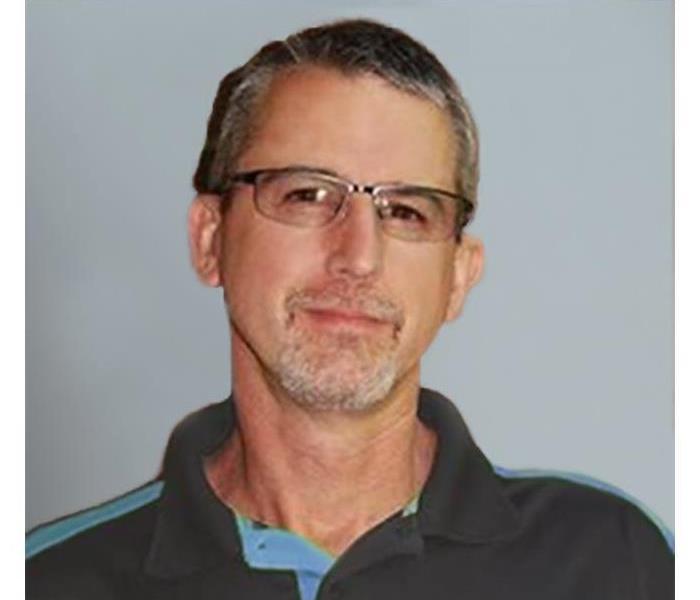 John “JT” Tolin, Mitigation Operations Manager
John “JT” Tolin, Mitigation Operations Manager
In our new “Getting to Know ..” blog series, we’ll meet some of the energetic and knowledgeable employees behind SERVPRO of Northwest Charlotte - the ones who help make any size disaster “Like it never even happened.” For Mitigation Operations Manager John “JT” Tolin, working at SERVPRO is a family affair. He oversees project managers, file coordinators and six full-time mitigation crews, including his son, Jakob, a crew chief. JT recently celebrated his fifth anniversary with the company and talked to us about his path to SERVPRO of Northwest Charlotte and some notable commercial cleaning and restoration projects.
Q: How did you get into the field of catastrophic loss restoration?
A: I had been out of the Marine Corps for a few years and was in between jobs. I saw an ad for a service master looking for a crew chief for a cleaning crew. I thought, “If there's one thing Marines know how to do, it's clean!” I answered the ad, and it just snowballed from there. I’m now coming up on 30 years in this business.
Q: You’ve managed projects all over the country - from 9/11 to natural disasters to oil spills. Which one had the most significant personal impact?
A: The previous company I was with managed five separate properties and handled five different losses in New York during 9/11. That one hit home for me because I grew up in New Jersey and traveled in the area. I’d look across the river and see the towers all the time. The scope of the devastation and everything else made that a very emotional job to do.
From a logistics standpoint, Hurricanes Katrina and Rita were the most challenging projects I've worked on - trying to feed, get supplies to, and find housing for 100 people. When we first started working in that area, we had a 2-hour commute each way to-and-from the job sites. We’d work a 10-hour day and then have to drive back to wherever our lodging was.
Q: When and how did you join the SERVPRO of Northwest Charlotte team?
A: Just over five years, ago I was with another restoration company, working on the road and traveling extensively. A friend of mine knew (SERVPRO owners) Danny and Penny called me and said, “I know someone who’s looking to fill an operation manager’s position. Are you interested?” I said, “Sure, let’s talk.” It was that easy.
Q: Tell us about your role as mitigation operations manager.
A: Our project managers are on the job with the crews every day, while also reaching out to adjusters and serving as a go-between with customers. I communicate with the managers and crews every day about the status of every job. I read all the notes in our system to make sure we’re communicating with the customer and documenting everything properly. Near the end of a project, I connect with the customer and ask, “Did everything go OK? Do you have any questions? Are there any issues I can help you with?" Hopefully, the project has gone smoothly, but I'm here to help resolve it if there's a problem.
Q: At times, you’re juggling 20 different projects at once. How do you keep track of everything?
A: SERVPRO has a proprietary work center software system called DryBook, which was developed in conjunction with insurance companies. It allows us to capture and monitor all the steps of a restoration project according to industry best practices and standards. Everything is documented and most rates are pre-negotiated with the insurance companies - what materials need drying or removal, what equipment is placed at a job, and the dry standard for specific materials. It also generates reports and billing details for customers, which makes it easier for them and us.
Q: When it comes to catastrophic loss restoration, why do certification and continuing education matter?
A: It helps to make sure we're meeting all of the insurance company and industry standards, which are continually changing, along with EPA guidelines and OSHA standards. We know what the dry standard is, we know what is clean is, we know the correct way to remove mold. And we also have the latest technology, treatments and equipment for moisture detection and measurement, water extraction, drying, sanitizing and odor removal.
Q: What else do you think gives SERVPRO of Northwest Charlotte a competitive edge?
A: Excellent leadership from Danny and Penny and well-trained employees with positive attitudes. We’re to have a team of quality people who treat our customers with empathy and respect, focusing on excellent service, mutual respect and fairness. Most of our technicians and crew chiefs have been here two-plus years, so we’re not continually training new people and don't have a lot of turnovers. We also try and keep the same crew on the job from start to finish. That helps with consistency and communication and gives the customer a comfort level. Most of our new people are here because we’re continuously growing as a company.
We’ve also developed valuable relationships with insurance adjusters and commercial property management groups in the area. They’ll call us and say, “I've got a problem customer. Can you go fix it?" Or, "I've got a big fire, and I need it taken care of properly." They know we're going to do the job properly and take care of the customer, which makes them look good.
Q: What’s the most frustrating aspect of your job?
A: Managing people's expectations can be the most challenging part at times. It's sometimes difficult to get people to understand we’re not an emergency service, like a fire department, where we are waiting for calls. Some customers expect us to be at their home or business in 15 minutes but we may be in the middle of working on another job. We need to close out what we’re doing and unload and reload the truck with everything we need before we can get to them. While they wait, we encourage customers to review our emergency tips on fire damage, water damage, biohazard and sewage damage and mold damage
Q: Share a story about a local project that required complicated coordination and logistics.
A: A couple of years ago, there was an accidental fire in the Johnson & Wales University gym. It was an interesting job because there were 30-foot ceilings and we needed lifts to clean them. We were working with all our contractors who were doing demolition in the gymnasium while others were cleaning. But we had to keep everything separate, so there wasn’t any cross-contamination. It took about three weeks to get them cleaned up to reopen their facility and let students back in.
Q: What do you enjoy most about your job?
A: I like the chaos of my job. I like it when we're busy and I have to coordinate the guys and move the chess pieces around the board. I like the challenge of having six teams and 20 jobs to do - making sure they all get taken care of, and they all get done well.
Q: Finish this sentence: “If I didn’t work at SERVPRO of Northwest Charlotte, I’d love to spend my days … ”
A: Riding my motorcycle with my wife and brewing beer.
Get Your Home Winter-Ready
12/21/2020 (Permalink)
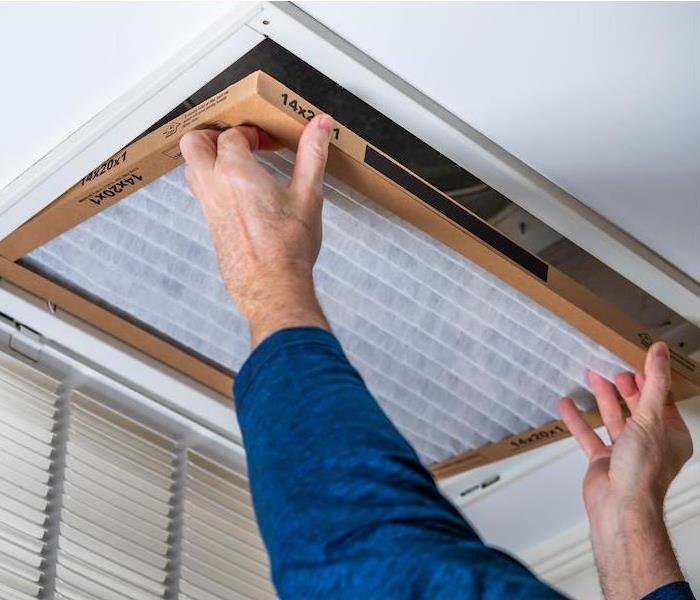 Get Your Charlotte Home Winter-Ready
Get Your Charlotte Home Winter-Ready
For those who live in the Charlotte area where weather events are typically mild, winter isn’t a season as much as it is a time for celebration. But friendly forecasts aside, as we move into the coldest months of the year, the city will still get its fair share of precipitation - whether it’s rain, snow, sleet or hail.
We’ll also experience a fluctuation in temperatures and an increase in days that dip into the low 30s and even below freezing - making it critical to get your home winter-ready. After a snow or ice storm, our restoration specialists see the aftermath firsthand: water damage caused by a burst pipe, gaping roof holes from falling trees, mold infestations in fireplaces, and smoke damage from a Christmas tree that went up in flames.
With so many North Carolinians spending more time at home than ever, we want to help you and family stay safe and warm, as well as protect your home from damage (both inside and out) all winter long. Just as Santa knows well the value of making a list and checking it twice, so should homeowners. The time to start winterizing is now - before the first storm or harsh weather event hits. Fortunately, you can DIY most of these home protection recommendations.
Indoor winterization tips
- Use pipe foam to insulate your pipes, especially those warm to the touch.
- Check and repair any attic, garage or shed leaks.
- Seal any water pipe or hose leaks.
- Be sure the temperature hot water tank is set safely, and clean your dryer vents.
- Seal the top of your fireplace if you don’t plan to use it during the winter.
- Change the batteries on any smoke and carbon monoxide detectors and make sure the equipment is working correctly.
- Replace filters throughout your house and open heating system vents.
- Flush your water heater to let any sediment run out.
- Install window insulation film and weather-stripping tape around doors and windows. For a quick fix, use a rolled-up towel or blanket to keep under door drafts at bay.
Outdoor winterization tips
- Clean your downspouts and gutters of any debris, twigs, leaves, nuts or rocks so ice can’t build up and clog them.
- Trim tree limbs around your home. When weighed down from wet snow or an ice storm, they can break or fall, causing damage to your roof, home, car or fence.
- Fill any siding and window cracks or gaps with caulk.
- Take out any window AC units and remove any debris, branches or leaves around your air conditioner condenser.
- Drain and disconnect hoses and turn off your sprinklers. If your pipes aren’t frost-proof, turn off the water valve by the spigot.
- Move outdoor furniture, grills and propane tanks away from the elements, or wrap them in tarps and bungee cords to keep them secure outside.
- Remove any moss or vegetation from your roof.
24/7 water damage and restoration assistance
American travel writer Paul Theroux said, “Winter is a season of recovery and preparation.” Unfortunately, sometimes preparedness is still no match for Mother Nature’s wrath or other cleaning or restoration emergencies. If that happens, you can rest assured our team is just a phone call away.
Although SERVPRO of NW Charlotte, Lincoln County, Southern and NE Gaston is part of a national network of 1,700-plus franchises, we’re locally owned and operated and part of the Mecklenburg, Lincoln, and Gaston communities. Our water damage and restoration experts are employees, not contractors, which means our team can respond faster to emergencies with a proven water damage restoration process and the most advanced technology and equipment. For questions, contact us anytime at (704) 393-7890 or request help online.
Water Damage Repair: When It’s Time to Ditch the DIY and Call the Pros
11/12/2020 (Permalink)
 Water Damage Repair: When It’s Time to Ditch the DIY and Call the Pros
Water Damage Repair: When It’s Time to Ditch the DIY and Call the Pros
After working a 60-hour week, all Joan wanted when she left the office late Friday night was to unwind by taking a hot bath with a mug of chamomile tea, hummus and cracker platter, and the latest Patricia Cornwell mystery.
But things took a “wet” turn when she fell asleep in the bathtub with the water running. Joan awoke in a panic hours later to her husband, Steve, screaming her name. He had come home from bowling night to a flooded living room and water flowing down the stairs. The couple assessed the water damage and *thought* they could handle it themselves with help from DIY YouTube videos and bribing their friends with pizza and beer.
Do-it-yourself vs. calling the pros
What if a tree falls on your home and a storm dumps an inch of water in your now-exposed attic? Or, if your condo’s bedroom shares a wall with a neighbor’s living room that catches fire and is doused with 300 gallons of water? Or, if the dark stain on the ceiling in your daughter’s bedroom is expanding by the day?
In each of these instances, the wisest decision you can make is to pick up the phone and call in the pros. Or the SERVPROs, if you will.
Not only does water damage affect your home’s structural foundation, but it also creates an ideal environment for mold and mildew to grow, termites and carpenter ants to move in, and powerful odors to fill your living spaces. To fully restore and dry your property - and have the validation and documentation to back it up - you need specialized training and equipment. And that’s where SERVPRO comes in.
Ongoing training + latest technology = bye-bye moisture
Our local technicians are well-prepared to tackle any water damage emergencies - long before they ever set foot in your home. In addition to earning the Institute of Inspection Cleaning and Restoration Certification, they complete Employee Certification Training and a 15-day hands-on course. Continuing education classes keep the water restoration team informed on scientific drying principles and the latest technology.
Their extensive education and training come into play when they arrive at your home with all the tools they need to restore it to pre-water damage condition: Moisture detection and measurement equipment, including an infrared camera. Powerful water extraction pumps and vacuum units to speed the drying process. Industrial strength air movers and dehumidifiers to pull water vapor from the air. And thermal foggers, deodorization machines, and sanitizing agents and treatments to eliminate odors.
Tips to help prevent water damage
While our specialists are available at a moment’s notice for any water damage or restoration emergency, there are a few DIY steps homeowners can take to avoid them.
- Clean - Keep those gutters clean to ensure proper drainage and direct downspouts at least five feet away from your home. Whenever possible, slope your yard away from the foundation.
- Test - At least once a year, check your sump pump. During heavy storm seasons, test it more frequently.
- Fix - Keep on the lookout for dark spots under pipes and on ceilings. If you notice leaks or dripping pipes, get them fixed. Also, repair cracked caulking and inspect for missing, loose or damaged roof shingles.
And for Joan’s case, we’ll add one more tip: Self-care is important, but please don’t fall asleep in the bathtub with the water running!
24/7 water damage and restoration assistance
Although SERVPRO of Northwest Charlotte is part of a national network of 1,700-plus franchises, we’re locally owned and operated and part of the Mecklenburg, Lincoln, and Gaston communities. Our water damage and restoration experts are employees, not contractors, which means our team can respond faster to emergencies with a proven water damage restoration process and the most advanced technology and equipment. For questions, contact us anytime at (704) 393-7890 or request help online.
Certified Cleaning and Disinfecting
5/21/2020 (Permalink)
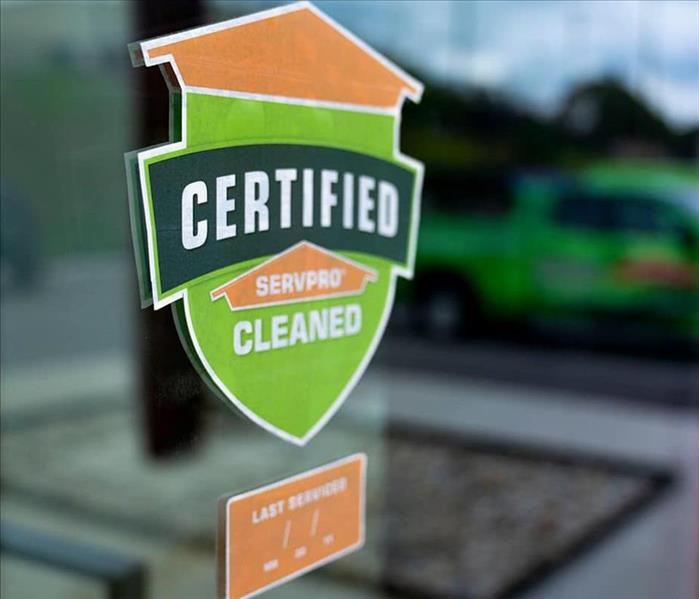 Certified: SERVPRO Cleaned
Certified: SERVPRO Cleaned
We're here to help you feel confident with reopening your business or commercial property. It is important to make your employees and customer feel safe and confident in returning by creating a safe, and clean environment. Trust in us to help you! We have implemented use of Certified: SERVPRO Cleaned signs that should make your employees and customers feel safe when returning!
We are prepared to clean and disinfect your home or business, according to protocols set forth by the Centers for Disease Control and Prevention. We have years of experience in dealing with biological contaminants, and we will go beyond the scope of work that regular janitorial staff perform on a daily basis.
The CDC encourages cleaning of high-touch surfaces such as counters, tabletops, doorknobs, light switches, bathroom fixtures, toilets, phones, keyboards, tablets and tables. Other spaces mentioned in the CDC’s guidance for commercial spaces include:
- Kitchen/Food Areas
- Bathrooms
- Schools/Classrooms
- Offices
- Retail Spaces
- Water Fountains
- Shelving/Racks
- Sales Counters
- Carpets and Rugs
- Stair Handrails
- Elevator Cars
- Playground Equipment
- Fitness Equipment
SERVPRO of NW Charlotte, Lincoln County, Southern and NE Gaston uses hospital-grade disinfectant, as recommended by the CDC. While there is no product tested against this particular strain of virus, we are following all guidelines provided by the CDC and local authorities.
SERVPRO of Northwest Charlotte is prepared to clean your business/commercial property. Give us a call at 704-393-7890.
Mold Tips - How to find and handle Mold
3/4/2020 (Permalink)
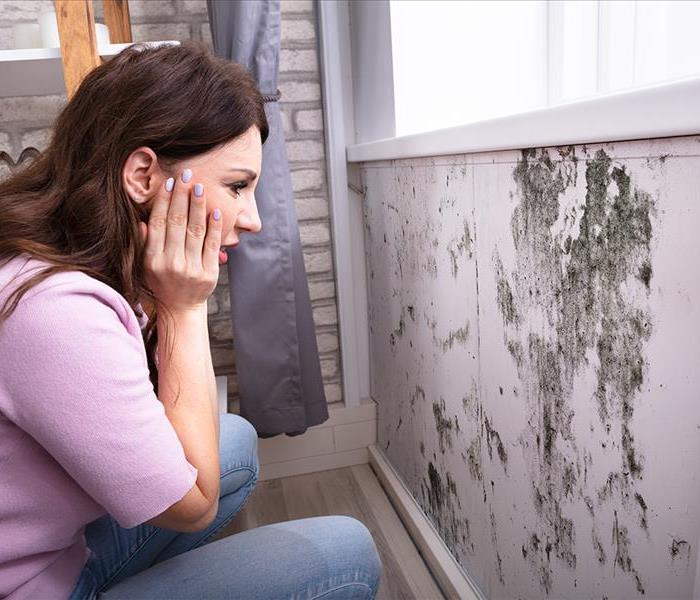 Mold Tips - How to find and handle Mold
Mold Tips - How to find and handle Mold
Mold is a common issue in the humid climate of Charlotte NC and the greater Carolinas. Knowing what to look for and how to handle a mold problem are the first steps.
What is Mold?
- Mold is a fungus, a multicellular plant-like organism, that does not produce chlorophyll as plants do. Fungi include mildew, mushrooms and yeast.
- Fungi is everywhere and we breathe mold spores everyday. In normal doses, typical of outdoors, fungi are not a threat to human health and may even have positive effects.
- Molds ripen cheeses and give them flavor. Some mushrooms are deliciously good to eat. Yeasts cause fermentation that produce alcoholic beverages and some breads.
Causes of Indoor Mold Growth
- Mold releases tiny spores in order to reproduce. These tiny spores can become airborne when disturbed and settle on surfaces where they lie dormant for extended periods waiting for ideal growth conditions.
- The settled spores require three conditions to grow:
- Food source: Organic materials
- Temperature: 68-86 degrees
- Moisture: Relative humidity above 60%
- Spores can germinate after only 12 hours in some conditions. They more commonly germinate in the 24-48 hour range.
Once You Suspect Mold
Step 1: Contact an Industrial Hygienist (IH) or an Indoor Environmental Professional (IEP). An IH/IEP will perform a visual inspection and sample the air and surfaces where suspected mold growth is present. The samples are then sent to a lab to analyze and determine the type of mold that exists. Once the lab report is received the IH/IEP provides a report and outlines a protocol for a certified mold remediation contractor to adhere to.
Step 2: Contact SERVPRO to remediate your mold contamination. We will schedule an appointment for a production manager to visit the property and provide an estimated cost of services based upon the protocol written by the IH/IEP.
Step 3: Once the estimate is approved we will schedule a date to begin the mold remediation services.
Step 4: Upon completion of the mold remediation it is recommended that post clearance sampling be performed by the IH/IEP to ensure the remediation services were successful.
Prevention
- Keep humidity levels in the home below 60%.
- Ventilate and/or dehumidify attics, crawl spaces, and basements.
- Keep bathrooms dry and well ventilated
- Clean, dry or remove anything from your home that is water damaged
- Watch for condensation and wet spots.
What to do after a flood
10/24/2019 (Permalink)
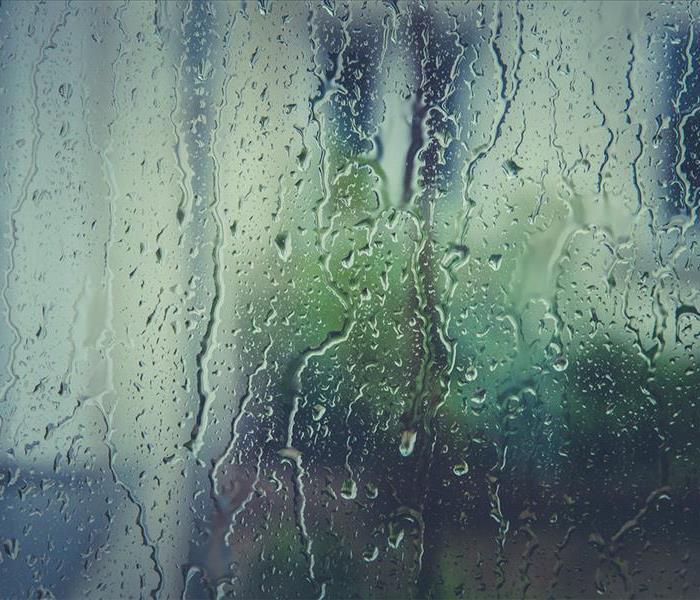 What to do after a flood
What to do after a flood
Water Damage in Charlotte from floods is not common, but there are a few things you can do to stay safe after flood water has damaged your property.
Electrical
Electrical power and natural gas or propane tanks should be shut off to avoid fire, electrocution, or explosions. Try to return to your home during the daytime so that you do not have to use any lights. Use battery-powered flashlights and lanterns, rather than candles, gas lanterns, or torches. If you smell gas or suspect a leak, turn off the main gas valve, open all windows, and leave the house immediately.
Notify the gas company or the police or fire departments or State Fire Marshal's office, and do not turn on the lights or do anything that could cause a spark. Do not return to the house until you are told it is safe to do so. Your electrical system may also be damaged. If you see frayed wiring or sparks, or if there is an odor of something burning but no visible fire, you should immediately shut off the electrical system at the circuit breaker.
Avoid any downed power lines, particularly those in water. Avoid wading in standing water, which also may contain glass or metal fragments. You should consult your utility company about using electrical equipment, including power generators. Be aware that it is against the law and a violation of electrical codes to connect generators to your home's electrical circuits without the approved, automatic-interrupt devices. If a generator is on line when electrical service is restored, it can become a major fire hazard.
In addition, the improper connection of a generator to your home's electrical circuits may endanger line workers helping to restore power in your area. All electrical equipment and appliances must be completely dry before returning them to service. It is advisable to have a certified electrician check these items if there is any question. Also, remember not to operate any gas-powered equipment indoors.
Cleanup
Cleanup Walls, hard-surfaced floors, and many other household surfaces should be cleaned with soap and water and disinfected with a solution of 1 cup of bleach to five gallons of water. Be particularly careful to thoroughly disinfect surfaces that may come in contact with food, such as counter tops, pantry shelves, refrigerators, etc.
Areas where small children play should also be carefully cleaned. Wash all linens and clothing in hot water, or dry clean them. For items that cannot be washed or dry cleaned, such as mattresses and upholstered furniture, air dry them in the sun and then spray them thoroughly with a disinfectant. Steam clean all carpeting.
If there has been a backflow of sewage into the house, wear rubber boots and waterproof gloves during cleanup. Remove and discard contaminated household materials that cannot be disinfected, such as wallcoverings, cloth, rugs, and drywall.
Health Safety
Immunizations Outbreaks of communicable diseases after floods are unusual. However, the rates of diseases that were present before a flood may increase because of decreased sanitation or overcrowding among displaced persons. Increases in infectious diseases that were not present in the community before the flood are not usually a problem.
If you receive a puncture wound or a wound contaminated with feces, soil, or saliva, have a doctor or health department determine whether a tetanus booster is necessary based on individual records. Specific recommendations for vaccinations should be made on a case-by-case basis, or as determined by local and state health departments.
Swiftly Flowing Water
If you enter swiftly flowing water, you risk drowning -- regardless of your ability to swim. Swiftly moving shallow water can be deadly, and even shallow standing water can be dangerous for small children. Cars or other vehicles do not provide adequate protection from flood waters. Cars can be swept away or may break down in moving water.
Chemical Hazards Use extreme caution when returning to your area after a flood. Be aware of potential chemical hazards you may encounter during flood recovery. Flood waters may have buried or moved hazardous chemical containers of solvents or other industrial chemicals from their normal storage places. If any propane tanks (whether 20-lb. tanks from a gas grill or household propane tanks) are discovered, do not attempt to move them yourself. These represent a very real danger of fire or explosion, and if any are found, police or fire departments or your State Fire Marshal's office should be contacted immediately.
Car batteries, even those in flood water, may still contain an electrical charge and should be removed with extreme caution by using insulated gloves. Avoid coming in contact with any acid that may have spilled from a damaged car battery.
Remember, be smart and stay safe. Feel free to contact our damage restoration and mitigation specialists anytime at (704) 393-7890.
Safely Preventing Mold Growth
10/22/2019 (Permalink)
Safely Preventing Mold Growth Clean up and dry out the building quickly (within 24 to 48 hours). Open doors and windows. Use fans to dry out the building.
• When in doubt, take it out! Remove all porous items that have been wet for more than 48 hours and that cannot be thoroughly cleaned and dried. These items can remain a source of mold growth and should be removed from the home. Porous, noncleanable items include carpeting and carpet padding, upholstery, wallpaper, drywall, floor and ceiling tiles, insulation material, some clothing, leather, paper, wood, and food. Removal and cleaning are important because even dead mold may cause allergic reactions in some people.
• To prevent mold growth, clean wet items and surfaces with detergent and water.
• Homeowners may want to temporarily store items outside of the home until insurance claims can be filed. If there is mold growth in your home, you should clean up the mold and fix any water problem, such as leaks in roofs, walls, or plumbing. Controlling moisture in your home is the most critical factor for preventing mold growth. Use a stiff brush on rough surface materials such as concrete. If you choose to use bleach to remove mold:
• Never mix bleach with ammonia or other household cleaners. Mixing bleach with ammonia or other cleaning products will produce dangerous, toxic fumes.
• Open windows and doors to provide fresh air.
• Wear non-porous gloves and protective eye wear.
• If the area to be cleaned is more than 10 square feet, consult the U.S. Environmental Protection Agency (EPA) guide titled Mold Remediation in Schools and Commercial Buildings. Although focused on schools and commercial buildings, this document also applies to other building types.
• Always follow the manufacturer’s instructions when using bleach or any other cleaning product.
• If you plan to be inside the building for a while or you plan to clean up mold, you should buy an N95 mask at your local home supply store and wear it while in the building. Make certain that you follow instructions on the package for fitting the mask tightly to your face. If you go back into the building for a short time and are not cleaning up mold, you do not need to wear an N95 mask.
When a Hurricane is Scheduled to Hit
10/4/2019 (Permalink)
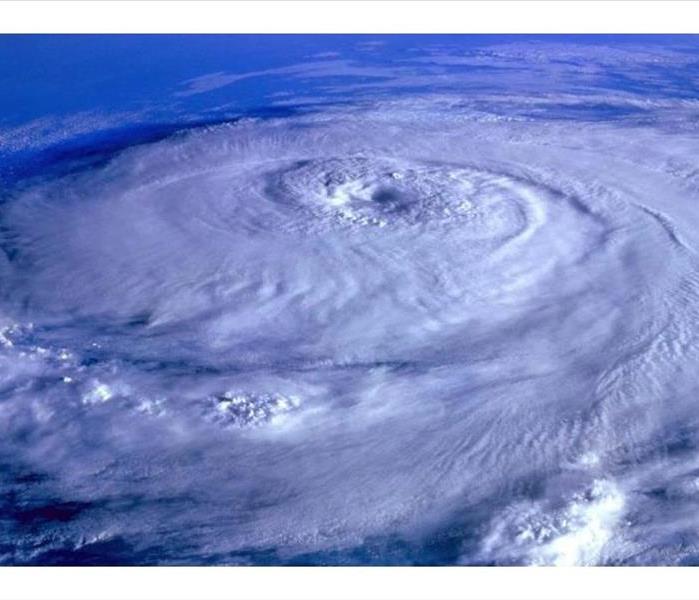 Hurricane Preparedness
Hurricane Preparedness
When a hurricane is 36 hours from arriving
- Turn on your TV or radio in order to get the latest weather updates and emergency instructions.
- Restock your emergency preparedness kit. Include food and water sufficient for at least three days, medications, a flashlight, batteries, cash, and first aid supplies.
- Plan how to communicate with family members if you lose power. For example, you can call, text, email or use social media. Remember that during disasters, sending text messages is usually reliable and faster than making phone calls because phone lines are often overloaded.
- Review your evacuation zone, evacuation route and shelter locations. Plan with your family. You may have to leave quickly so plan ahead.
- Keep your car in good working condition, and keep the gas tank full; stock your vehicle with emergency supplies and a change of clothes.
- If you have NFIP flood insurance, your policy may cover up to $1000 in loss avoidance measures, like sandbags and water pumps, to protect your insured property. You should keep copies of all receipts and a record of the time spent performing the work. They should be submitted to your insurance adjuster when you file a claim to be reimbursed.When a hurricane is 18-36 hours from arriving
- Bookmark your city or county website for quick access to storm updates and emergency instructions.
- Bring loose, lightweight objects inside that could become projectiles in high winds (e.g., patio furniture, garbage cans); anchor objects that would be unsafe to bring inside (e.g., propane tanks); and trim or remove trees close enough to fall on the building.
- Cover all of your home’s windows. Permanent storm shutters offer the best protection for windows. A second option is to board up windows with 5/8” exterior grade or marine plywood, cut to fit and ready to install.
When a hurricane is 6-18 hours from arriving
- Turn on your TV/radio, or check your city/county website every 30 minutes in order to get the latest weather updates and emergency instructions.
- Charge your cell phone now so you will have a full battery in case you lose power.
When a hurricane is 6 hours from arriving
- If you’re not in an area that is recommended for evacuation, plan to stay at home or where you are and let friends and family know where you are.
- Close storm shutters, and stay away from windows. Flying glass from broken windows could injure you.
- Turn your refrigerator or freezer to the coldest setting and open only when necessary. If you lose power, food will last longer. Keep a thermometer in the refrigerator to be able to check the food temperature when the power is restored.
- Turn on your TV/radio, or check your city/county website every 30 minutes in order to get the latest weather updates and emergency instructions.
If you experience any storm damage in Charlotte - call SERVPRO of NW Charlotte 24/7 at (704) 393-7890.
Home Flood Preparation
9/26/2019 (Permalink)
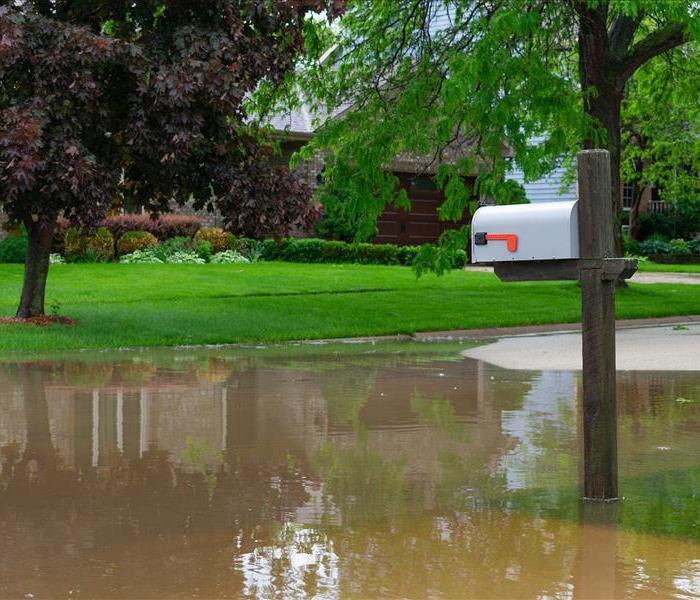 Flood Preparation
Flood Preparation
How Can I Prepare My Home for a Flood?
If you live in a flood-prone region, it's crucial to formulate a plan now to protect your family and pets in case bad weather strikes. After your emergency plan is established, you can then learn how to protect your home. These six tips help you prepare your home for a flood in order to limit structural and financial damage in the future.
Elevate Electrical Components
Electrical sockets, switches and wiring should be elevated at least 12 inches above predicted flood levels. This reduces the amount of damage a flood can cause to your home, and it prevents your home from becoming a safety hazard during the recovery period.
If you have a fuel tank in your basement, be sure to anchor it. An unanchored fuel tank can cause serious damage, such as tearing the supply line and spilling oil.
Waterproof Your Basement
Waterproofing your basement typically requires a large sum of money, but this investment pays off if you live in an area that is frequently flooded. Along with waterproofing, set up a sump pump in the basement and a battery-operated backup in case the power goes out during the flood.
Pay Attention to Flood Alerts
You can elevate electrical components and waterproof your basement long before a flood strikes, but some preparation has to be done in the days or hours leading up to a flash flood. Pay attention to the weather, and take flood alerts seriously.
A Flood Watch will be issued when the conditions are right for flooding. This is a good time to protect furniture and important documents. Remember to take action the moment the watch is issued, though, as you'll want to start evacuating before a Flood Warning occurs.
A Flood Warning means that a flood is happening now or going to take place soon.
Move Furniture and Other Valuables to a Safe Place
Once a Flood Watch occurs, move furniture, valuables, and important documents to a safe place. Copies of critical documents like birth certificates or insurance policies should be stored in a waterproof safety box.
Keep in mind that this step should only be taken if you have time to safely evacuate your family. If the flood is likely to occur soon, forget your furniture and head to higher ground.
Pack an Emergency Kit
Store an emergency kit — one you can use after evacuating or when trapped in the house — in your home at all times. This kit should include at least three days' worth of water and food (including 1 gallon [or 4 liters] per person per day), along with essentials like:
- Flashlights
- Medications
- Copies of personal documents
- Cellphone with chargers
Purchase Flood Insurance
Regular homeowner's insurance does not cover flood damage costs. If your home is located in a flood-prone area, it's a good idea to also purchase flood insurance, which is available to homeowners through the National Flood Insurance Program.
Community Preparedness during an emergency in the Charlotte area
9/23/2019 (Permalink)
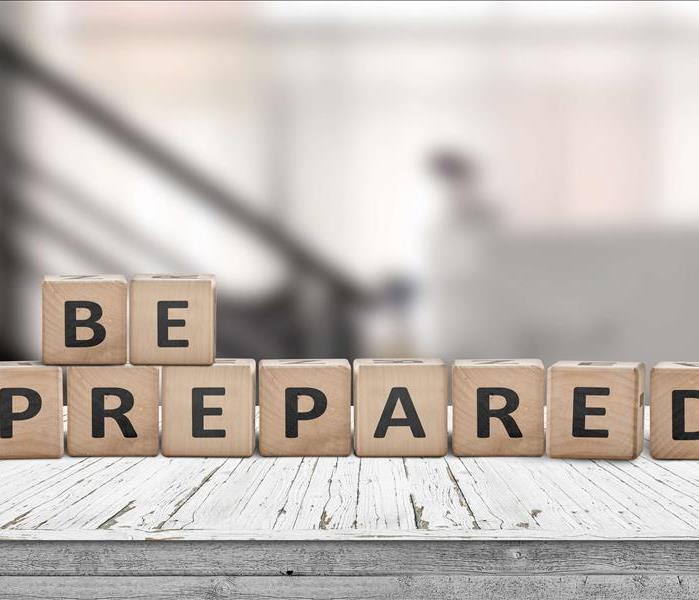 Community Preparedness - Emergency
Community Preparedness - Emergency
Tips on Setting Concrete Goals
Emergency preparedness means setting goals, which helps you be accountable to yourself and also increases accountability within a group. Clear goals at the beginning of a project will also help you determine how your project will work and what role group members can play. Once goals are set, you can track your progress, compare your results with other group members, and figure out what works best so everyone can meet (or exceed) their goals.
Set a service goal and hold yourself accountable. After you have prepared yourself and your family, commit as an individual and as a team to help others:
- Help at least three people who may need additional assistance in preparing for emergencies (including the frail, elderly, individuals with disabilities, and others with special needs).
- Conduct a safety drill at home, at work, at school, or at your house of worship.
- Take a training class in lifesaving skills (CPR, first aid) or emergency response (CERT).
- Volunteer to help your local emergency responders.
Any of these activities get us one step closer to a safer and more resilient nation. Set your goals high to stretch yourself. Then keep track of how you are doing and have someone responsible for updating the group on how you are progressing toward your goals. You’ll be surprised at how much you can do when you commit, focus, and follow through. Get involved in National Preparedness Month activities in your community. Then keep your commitment. Let’s see what we can do together!
- As an individual, I will commit to preparing myself and my family this year, including creating a family disaster plan and making sure there are emergency supply kits at my home, my place of work, and in my car.
- As a team, we will assemble ___ emergency supply kits for others.
- As an individual, I will talk to ___ friends, family members, neighbors, and co-workers about our personal responsibility to be prepared.
- As a team, we will commit to ___ number of hours volunteering in disaster preparedness and response.
- As a team, we will organize ___ disaster drills for evacuating and sheltering-in-place.
- As an individual, I will complete ___ training in life saving skills.
- As a team, we will learn about the threats most likely to affect our community.
You can visit the City of Charlotte Emergency Contacts page with important websites, phone numbers, and even a printable emergency contact list.
How to Prepare Your Home for an Emergency
8/13/2019 (Permalink)
When disaster strikes, the last thing you want to think about is where the spare batteries are or whether your perishables have passed their expiration date. Make sure you're ready for any situation — and how to handle the aftermath — with these top tips.
1. Pack a "Go Bag"
If you have to leave your home in a hurry, you'll want to have some essentials packed and ready to go. Keep the following supplies, recommended by FEMA, in a portable container in the area of your house where you'll take shelter:
- Three days' worth of food and water (at least a gallon per family member)
- Battery powered (or hand crank) flashlights and radio
- Extra batteries
- First aid kit
- Whistle to signal for help
- Trash bags and duct tape, along with a dust mask
- Wrench or pliers to turn off utilities
- Manual can opener for food
- Regional maps
- Cell phone with chargers, inverter, or solar charger
- Moist towelettes and any personal sanitation or specific family needs, like pet supplies
(For additional recommendations, be sure to check out ready.gov)
We also suggest having smaller versions of your kit stocked with a few necessities like walking shoes, snacks, and a flashlight at work. In general, you'll also need enough cash on hand for five days of basic needs (gas and food), but any amount of ready money will help if ATMs are down.
Once you have your supplies together, it pays to go through them at least once a year too, to weed out expired food and batteries.
2. Make an Action Plan
When things get chaotic, you want to make sure that every family member knows what to do. We suggest designating two meeting places (one close by and one a little further away in your neighborhood) and hang a map with the spots marked near your emergency kit.
It also pays to have important contacts written down if the power goes out and there's nowhere to charge your cell phone. Make a mini contact list — ready.gov has templates you can print out — with important numbers that everyone can stow in their wallets. Leave a copy in your emergency kit, too. Establish a plan for checking in with relatives in case local lines get jammed. Text messages will often go through, even when phone lines are clogged.
3. Prep Your Home
If the power goes out and you have time, unplug appliances and electronics and turn off air conditioners, whether you stay or go. This will prevent damage when the electricity surges back on. Leave one lamp on so you'll know when the power's back.
How you store food can also make a difference when it comes to salvaging items afterwards, according to the FSIS. If there's a chance of flooding, be sure to store dry goods in waterproof containers high enough that they will be safely out of the way of contaminated water.
Grouping food together in the freezer can help it stay colder longer in the case of a power outage. If you have advanced warning, freeze any items you don't need right away, like leftovers, milk, and fresh meat and poultry to keep them at a safe temperature longer and stock your freezer with as much ice as you can fit. Coolers stocked with ice can also be helpful if the power is out for more than four hours.
Though you'll want to minimize the amount you open and close your refrigerator door once the power goes out, FSIS recommends keeping an appliance thermometer in your fridge and freezer to help you determine if food is safe to eat. The refrigerator temperature should be lower than 40 degrees Fahrenheit and the freezer temperature should be below zero degrees Fahrenheit.
After the Emergency
Coming home after a major disaster can be daunting. Call SERVPRO of Northwest Charlotte to help you in the event your home is affected.
Water Damage Clean Up
7/19/2019 (Permalink)
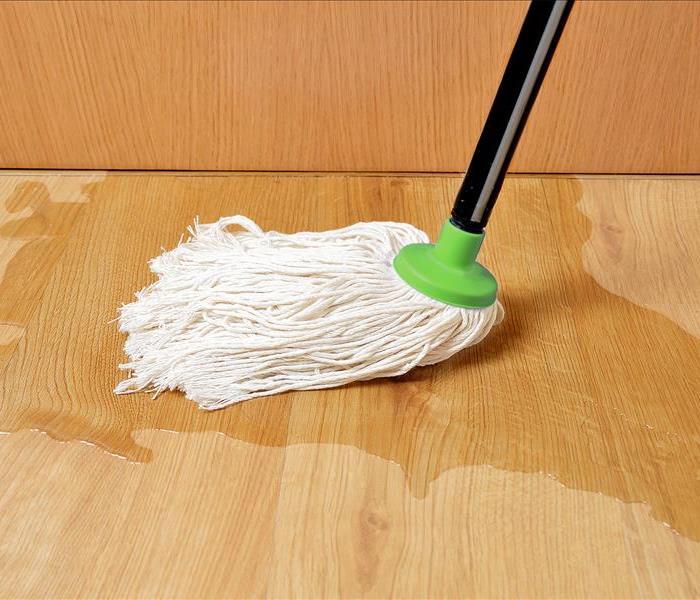 Water Damage Cleanup in Home
Water Damage Cleanup in Home
Tips for cleaning your Charlotte home after water damage
Homes in Charlotte NC are impacted each year by unforeseen water damage due to weather events, disrepair, and the unexpected. Water in unwanted places can cause a lot of damage. Not only can it ruin your prized possessions, but also the house in which they are stored. If you’re able to act quickly, you can minimize the damage and possibly save some of your possessions. Some of your success depends on how long the water’s been around, there might be pieces of furniture that can be saved, and sometimes, even carpet, but any electronics hit by water are probably doomed.
Don’t treat flood water in unwanted places lightly: even if your basement only has an inch of water in it, or is even just damp, it is the perfect breeding ground for mold. Mold growth not only ruins walls, furniture, carpets, flooring, etc.
So in addition to calling your insurance company, here are a few tips to deal with your flooded basement and minimize the water damage. (Call your insurance company before you do anything, and tell them what you want to do.)
- Disconnect the power, unplug any electronics, and remove electronics, furniture and movable items immediately. The faster you get items out of water’s way, the more likely you’ll be able to save them. Definitely move all electrical items first, and if you can, turn off your power leading into the affected area, especially if water rises above electrical outlets. Pull up any carpets (wall to wall and area rugs) and under-padding. You may be able to save the carpet if you get it cleaned and disinfected, however, it may shrink and be better off as an area rug afterwards. It’s unlikely you’ll be able to save the under-padding, which acts like a sponge and absorbs a lot of water.
- Get rid of the water. There are several ways to get rid of the water. If you don’t have power, or are worried about loose wires, the old-fashioned, manual way will work. Use old towels, buckets and mops to soak up as much water as possible. As long as sewers in your neighborhood aren’t backed up, you can pour the water down the drain, otherwise, pour onto your lawn or other permeable surface. A wet/dry vacuum can be used too, note: be very careful to plug it into outlets far away from water. Don’t use an extension cord as the connection could also short out and give you a nasty shock. Water and electricity don’t mix! If your basement or other flooded area is overwhelming and you have power, consider renting (if available) a sump pump from your local Rent-all or hardware stores. Getting rid of all the water and drying out the area is the most important thing you can do to prevent mold growth.
- Dry out the affected area. Once you’ve mopped up all the water, use fans and a dehumidifier to help dry out the area. If it’s stopped raining, open windows to allow for air circulation and faster drying. You want to dry the area out as soon as possible. If you have a finished basement and the drywall was affected, you’ll probably have to cut away the areas that were touched by water as the drywall will crumble and the paper backing is a good source of food for mold. If you have baseboard trim, take it up first, and if it’s made from pressboard it will likely not be salvageable. If it was wood, you might be able to save it.
- Disinfect. After the area has dried out, including wood beams, insulation, drywall, etc., use a good disinfectant to get rid of any bacteria that might have come up through sewers, toilets, etc. Disinfect all areas affected by the flood waters including walls and wood and non-upholstered furniture that sat in flood water.
- Prevent mold growth. After you’ve disinfected and let the area thoroughly dry out, apply Concrobium throughout the affected area according to directions. I can’t say enough good things about this product; it is non-toxic, made with distilled water and inorganic salts. You can use it on furniture, walls, floors, basically anything that is susceptible to mold growth. Once a thin layer of Concrobium Mold Control is applied, let it dry overnight. As Concrobium dries, it forms a thin layer over any mold that may be growing and actually crushes the roots of the spores. Wherever it’s sprayed will prevent any mold from growing, providing continued resistance. If you’re spraying an entire room, you might want to consider renting a mister from a hardware store such as Home Depot. It’s easy to use and very fast.
- Dispose of damaged items responsibly: you’ll be tempted to throw everything into a dumpster and send it all away and out of site. But if you can organize damaged goods into piles and take what you can to local recycling centers in Charlotte, and Mecklenburg County - you will help alleviate the pressure on your local landfill site. Go to the City of Charlotte Waste Management website to find out where to recycle old paints, stains, adhesives and other toxic liquids, any damaged electronics from cell phones to TVs and computers, furniture, and even drywall.
When in doubt, call a licensed water damage cleanup company in your area.
Frequently Asked Questions about House Fire Damage
7/12/2019 (Permalink)
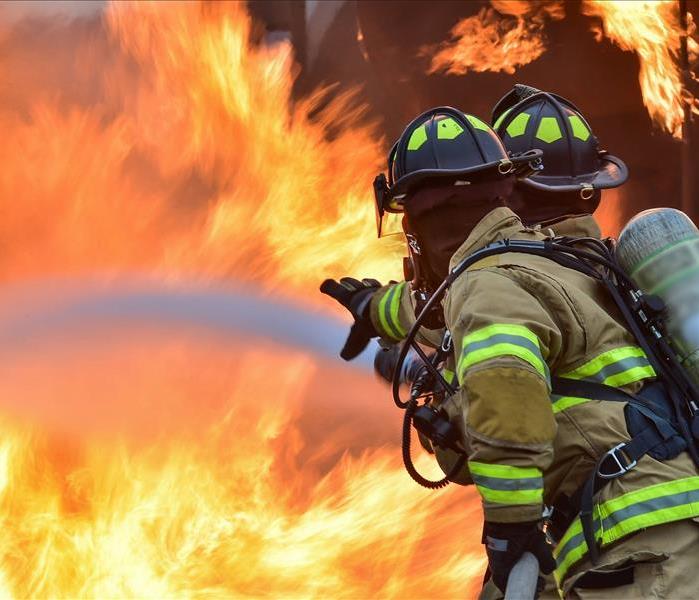 Firefighters attempting to extinguish home fire.
Firefighters attempting to extinguish home fire.
Got questions about what to do after a house fire? We have a few answers for you.
Fire and Smoke damage is not as rare as you may think. Those who are affected by a fire and contact us for help with the restoration process often have similar questions regarding what to do after. Some of those questions and answers are provided below.
Can I go back into my home to get my belongings after a fire damage?
We suggest an expert determine the safety of any home or building. While you may not see a risk in checking the fire damage in your home, it may be dangerous, or pose a hazard to your health.
What will happen to my items left in the home?
Your insurance agent may deem some that are safe be stored. If so, our technicians would remove those items and safely store them. Items damaged due to the smoke damage from the fire would need to be disposed of properly, which our technicians will also do.
Do you board up our home?
Yes, we can. SERVPRO of Northwest Charlotte can board up a home safety and securely to prevent possible theft after a fire damage has occurred.
Can I stay in my home after a fire?
Insurance adjusters will make this determination usually based on damage, but common sense will sometimes tell you to stay elsewhere. If a small situation is centered in one room and did not affect other areas, you may be able to safely stay.
Can we clean the fire or smoke damage ourselves?
Most people think fire or smoke damage can be easily cleaned. There are actually strict standards for fire restoration set forth by the IICRC, which all professional fire restoration companies follow to make sure your home is properly restored. While you may think you can do it, if you lack the proper training and experience, you are taking all responsibility for future hazards and problems that may occur.
Still have questions? Call us anytime at (704) 393-7890 or request help online.
Why Choose SERVPRO of NW Charlotte, Lincoln County, Southern and NE Gaston County
7/12/2019 (Permalink)
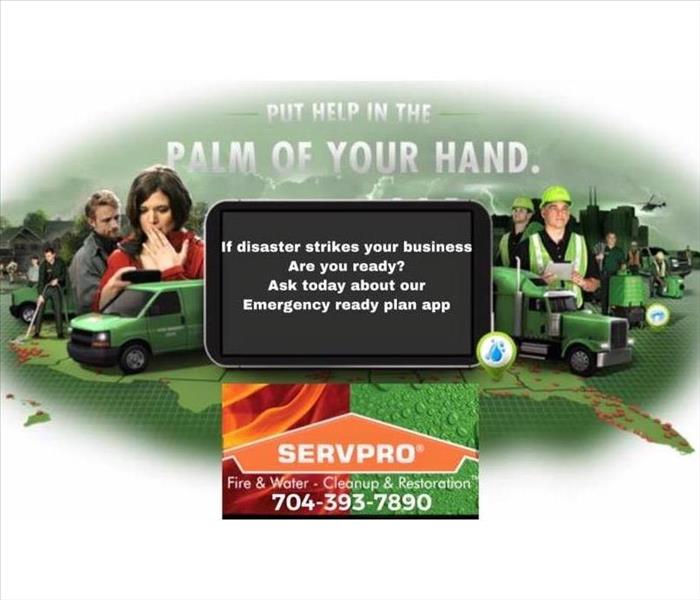 Why choose SERVPRO of NW Charlotte, Lincoln County, Southern and NE Gaston County.
Why choose SERVPRO of NW Charlotte, Lincoln County, Southern and NE Gaston County.
It is estimated that up to 50% of businesses that close due to a disaster, such as fire and flood never reopen! Of the businesses that survive, the overwhelming majority of them had a preparedness plan in place.
Are you “Ready for whatever happens?”
Preparation is a key component for making it through any size disaster, whether it’s a small water leak, a large fire, or an area flood. The best time to plan for such events is not when the event happens, but well before it happens.
The SERVPRO® Emergency READY Profile serves as a quick reference of important building and contact information or can be an ideal supplement to any well-designed emergency preparedness or existing contingency program. Rather than simply reacting to disaster situations, most prefer proactive measures to establish a relationship with a restoration services company.
By working with SERVPRO of NW Charlotte, Lincoln County, Southern and NE Gaston Countyto develop your personalized Emergency READY Profile your business will receive the benefit of over 40 years of experience in reducing the impact of any natural or man-made disaster.
SERVPRO® is a leader in water and fire damage response and can help you quickly get your property back in working order.
Frequently Asked Question During the Water Damage Restoration
6/18/2019 (Permalink)
 Question during the Water Damage Restoration process
Question during the Water Damage Restoration process
Here are the answers to some of the most frequently asked questions about the water damage restoration process.
1.) What happens and what are the effects when water floods my home or business?
- First, when water contacts drywall, it sags and disintegrates. Then you’ll see paint bubbles and peeling as the water wicks up the drywall. After that, water saturates the insulation behind the drywall.
- Next, if water dwells in your property for any length of time, wood structures begins to swell. The glue holding your particle board kitchen and bathroom cabinets dissolves, causing them to crumble. The longer the water dwells in your property, the more likely it is that the hardwood floors will buckle and warp. Wood exposed to long-term water damage rots.
- Third, water-soaked carpets “delaminate.” Delamination is the term for carpet that pulls away from its backing. Once this happens, the carpet is permanently ruined.
- Fourth, water damage can short-out electrical systems. This can cause fire and shock hazards and damage to electronic equipment.
2.) Why can’t I clean up and dry out the damage myself?
Quickly wiping or mopping up a small spill in the middle of the floor is okay.
But the problem is, if water flooded a large portion of your home or office, it’s the water you can’t see, the water that wicks up behind the wall or under the floors, that causes problems.
These dark cavities are the perfect place for mold and mildew to grow. And, without meters to measure the moisture, you won’t be able to find and remove the water you can’t see hiding in the structure.
All that excess water promotes mold and mildew growth and compromises the structural integrity of the materials.
In addition, if the water damage comes from a contaminated source like a sewage backup, it presents an imminent health threat. In this case, you especially want to AVOID ANY CONTACT and call us immediately.
So, no matter what caused the water damage, to prevent future health or structural problems, water damage restoration should always be handled by a licensed, insured, IICRC certified professional water damage restoration contractor like SERVPRO of NW Charlotte, Lincoln County, Southern and NE Gaston County.
3.) What does a professional water damage restoration contractor do differently than I would do to dry water damage?
- First, after we extract the water, we contain the affected area.
- Second, we remove any non-salvageable damaged materials.
- Third, we photo catalog every part of the damage and all damaged items.
- After that, we spray anti-microbial solution on the affected area.
- Shop vacs and common household fans just aren’t designed to remove enough moisture or generate enough air movement to dry your home or office completely after a flood. So, we use specialized, high-speed, industrial air movers and dehumidifiers. We set up the equipment in a specific pattern, creating the most efficient drying system for your property.
- While the equipment removes and controls the humidity and moisture levels in the air, we monitor the progress on a daily basis with specialized meters to measure the moisture.
- Finally, we communicate with your insurance company using the latest technology to facilitate efficient processing of your insurance claim. We’re experts at this, and we’ve helped hundreds of homeowners in the Greater Philadelphia and Cherry Hill area recover quickly from water damage loss.
4.) How long does it take to dry my home or business?
The only answer to this question is It depends.
It all depends on the size and scope of the loss.
Completely drying a structure depends on the type of water damage, how bad it was, how long the water was sitting, and the type of building materials involved. For example, concrete takes much longer to dry than wood.
Many times, water damage to your home or business takes 2 to 3 days to dry. However, properties exposed to water damage for a long time will take longer to dry!
5.) Do I have to leave my home or close my business during the restoration?
If the property damage doesn’t require a lot of reconstruction, you can stay in your home or office. However, the equipment we use during the drying process can be noisy. And it creates a lot of air movement which may be considered as unlivable or unworkable conditions. If the bathrooms in your office, or the kitchen in your home are a part of the damaged area, check with your insurance company for reimbursement of alternate living expenses or business continuity expenses until the restoration job is complete.
6.) Why does SERVPRO need access to my house or business?
Once the water is extracted and we begin the drying process, we need to monitor and control the moisture and humidity levels in the home. By doing this, we can prevent the growth of toxic mold. In addition, insurance companies require daily monitoring reports to justify your claim for damages.
7.) Why is my property monitored so often?
We place our industrial sized equipment so it will operate as efficiently as possible according to the moisture mapping. We monitor and check the progress of every job regularly so we can make any adjustments as needed. Remember our job is to get you clean, dry and sanitized as quickly as we can. So monitoring helps us do that.
8.) Why does the air in my home or office feel so dry?
We set up the equipment we use during the drying process so it will remove as much moisture from the affected space as possible. Our equipment creates an atmosphere that’s as dry as possible. This is just temporary. Once the drying process is complete, and we remove the equipment, the air condition will return to normal.
9.) Is it okay to leave the equipment running all the time?
Absolutely! Our specialized equipment is made to run continuously without overheating or causing safety problems. Remember, we position the equipment in a particular way to promote the drying process. So please don’t move it.
10.) Can I turn the equipment off at night to save money or to reduce noise?
Please don’t!
The drying process requires running the equipment 24 hours a day for several days.
Our equipment is designed for efficiency.
And because we know the noise might be problematic, for sleeping purposes or the quiet enjoyment of your home or office, we often suggest you call your insurance agent to see if your policy covers alternate living expenses or business continuity expenses.
11.) Is it okay for me to open the doors and windows?
Please don’t! Our technicians have set up the best conditions on your property for drying it efficiently, if you open windows during the drying process it causes problems. Depending on weather conditions, opening windows slows down the drying progress. So, the best rule of thumb is to keep doors and windows closed, and don’t turn off air conditioning or heat without talking to us first.
12.) If I filed a claim, do I have to wait for an adjuster to come out before I call you?
The answer to this question is usually no.Most homeowner and business policies require you to do whatever you can to prevent further damage.
- The first step is to stop the source
- Next, call your insurance company. Ask them if you have coverage. They will probably issue you a claim number at this time. And, they will probably give you 2 or 3 names of restoration companies to call.
- After you call us, take pictures of the damage. Even though we will take pictures when we arrive, we tell our customers they can’t take enough pictures!
- After that, if you can, remove or separate any personal items and furniture from the damaged area and do what you can to remove the standing water. Just don’t throw anything away.
13.) Do I have to use the restoration company the insurance company recommends?
No. You don’t have to use the company the insurance company recommends. You are free to hire whoever you want. As with every profession, there are good water damage restoration professionals and not so good ones.
Remember: Most reputable water damage companies have worked with the major insurance companies and are experts at dealing with adjusters and claims.
The benefit to you of hiring us: Once we have the information about your claim, we’ll communicate directly with your insurance adjuster to make the process smooth and easy for you.
14.) If materials need replacement, can I replace them with something different?
Our job in water damage restoration is to return your property to you in its pre-damaged condition. Your insurance company will pay to replace “like-with-like.” However, after large water damage to your property, when many items have been removed, it makes the perfect time to renovate and update. But if you want to upgrade, you’ll need to pay the difference out of pocket from what your insurance company allocated.
15.) Will the carpet need to be replaced?
In some situations where carpet has been wet for an extended period, water damage will cause what is called delamination (the backing separates from the fibers) and will usually require replacement. Or if the water was from a non-clean source like sewage, the carpet will most likely need to be replaced. But in most cases, if carpets were saturated by clean water, and if we get to them right away, they can be dried, sanitized and cleaned without damage.
16.) Do I need to find a reconstruction contractor to do the repairs after the water restoration is done?
If you hired us to handle your loss from start to finish, you don’t need to worry about finding a general contractor. We have a team of qualified, experienced professionals to do the reconstruction needed, or we use sub-contractors as a part of the restoration package.
17.) Are there any chemicals used that could be harmful to me or my pets?
We use several different anti-microbials or biocides during every water damage mitigation job. These prevent mold, mildew, and bacterial growth. And most of them are rated safe for pets and children. But, if you have concerns about toxicity or chemical exposure, ask the technician on call which anti-microbial solution he will be using. You can also ask him to provide you with the Material Safety Data Sheets (MSDS sheets) for that product. But to be safe, it’s wise to keep yourself, children, and pets away during the drying process.
And, our most favorite of the frequently asked questions about water damage restoration:
18.) Can water damage be prevented?
There’s not a lot you can do to prevent water damage from an act of nature. Water damage from severe storms that cause over-the-ground flooding happen. But not as often as you might think.
Although all 50 states experience flooding, most water damage to properties is caused when indoor plumbing fails. And, while there are some types of indoor plumbing issues that can’t be prevented, many can.
The key to prevention is regular maintenance.
So check back with us often. In our blog, we post information homeowners and business owners to use to prevent all different kinds of property damage.
But in a nutshell, here are the 5 basic steps to prevent water damage you can take each month:
- First, make sure all your appliances (e.g., dishwasher, clothes washer, and water heater) are in good working order. Check all water connections and hoses.
- Second, check under your kitchen and bathroom sink for signs of corrosion and make sure connections are tight.
- Third, check the toilets in each bathroom for any signs of leaking.
- Fourth, monitor your water bills. A sudden, unexplained increase in water use can be caused by a leak.
- And last, make sure everyone knows how to shut off the water supply.
Have more questions. We're here to help. Call us anytime at (704) 393-7890.
Meet our Owner - Penny Benkeser
5/17/2019 (Permalink)
 Penny Benkeser, Owner of SERVPRO of NW Charlotte, Lincoln County, Southern and NE Gaston County
Penny Benkeser, Owner of SERVPRO of NW Charlotte, Lincoln County, Southern and NE Gaston County
Penny Benkeser, owner of SERVPRO of NW Charlotte, Lincoln County, Southern and NE Gaston County and president of the Charlotte Chapter of the National Association of Women Business Owners (NAWBO) joins Good Day's Barbara Lash to talk about women in business.
Penny is the 2016-2017 President of the Charlotte chapter of NAWBO. In this interview she is able to discusses the woman owned business community in Charlotte and the role of NAWBO in the local community. She also talks about a few of the upcoming events meant to provide education and networking resources for women business owners.
Finally, she also speaks to some of the benefits she has been able to leverage based on her NAWBO membership and the impact on the growth on her business.
Click Here to Watch the Video
When Your Home Needs Water Damage Repair
5/17/2019 (Permalink)
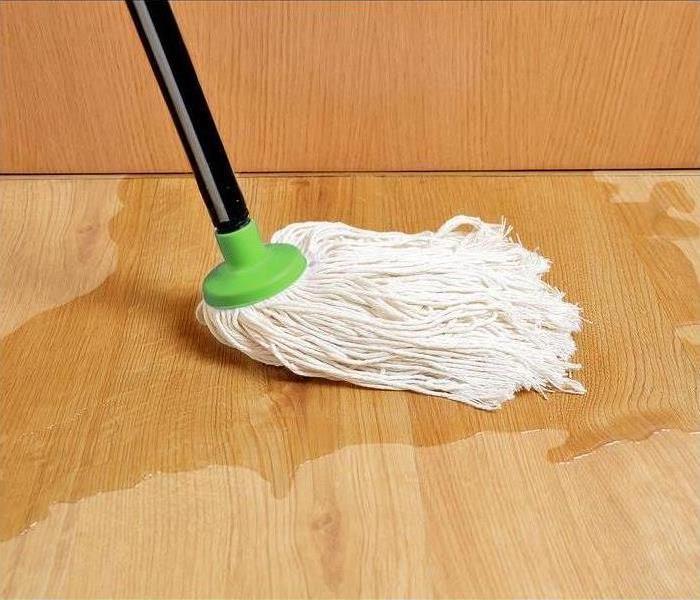 When Your Home Needs Water Damage Repair
When Your Home Needs Water Damage Repair
How Water Damage Occurs
Water Damage occurs for any number of reasons and sometimes it goes on long before you notice it. The most common ways in which water damage occurs are the following:
- Pipes – Leaking, burst, or cracked pipes are common in homes, especially older homes where pipes might need replacing. Spots with prior repairs are more susceptible to future damage with time and use. Weather changes and weakened areas of pipe can all lead to water damage in your homes.
- Flooding – Flooding whether caused by heavy rain, plumbing failures, or groundwater exposure, causes extensive damage and affects many surfaces and items in your home from the floor to ceiling including electrical outlets, TV’s and appliances, and furniture.
- Basements and Crawlspaces - Accumulating water can sit and collect in damp and cool places like a basement or crawlspace.
Results of Water Damage
Even the smallest amount of water damage can lead to deteriorating housing materials and fungal growth like mold. Mold loves to multiply in damp, moist, and dark locations. Areas in your home that were not properly cleaned and dried are perfect hosts for mold. Humid locations are especially susceptible to mold growth. Mold spores are also airborne, spread quickly, and can cause health effects.
You Have Water Damage. Now What?
First, when accessing if you should attempt water damage repair before calling a professional also determine whether it is safe to remain in your home. The biggest concern is your electrical system and the potentials for injury from slipping. Then,
- The sooner you clean the better. If the water damage is manageable and your safety in check, begin the clean-up process right away.
- Water is heavy. Removing water logged and soaking wet items is a laborious task, therefore be aware of your own abilities and safety when removing wet items.
- Leave your vacuum in the closet. Your household vacuum is not equipped to handle water removal. Use a mop and bucket, or another absorbent cloth, to soak up and dispose of the water manually. Blot rugs and furniture with absorbent material to soak up the water.
- Hang up those wet fabrics. Leaving any fabric material soaking in water is a fungus breeding ground. Remove cushions, curtains, blankets, and throw rugs to dry elsewhere.
- Keep those appliances and electronics off. Your electronics could have water damage where you cannot see it.
- Clean up. Clean up and remove everything from the waterlogged area that isn’t bolted in place.
Leaving any water damaged areas unrepaired leads to further damage and toxic living situations.
Lastly, call a well-trained water restoration professional with industrial equipment to ensure water damage repairs happen immediately and properly. A water damage professional handles the entire repair process from removing the water to ensuring everything in your home is dry; preventing mold growth and further material damage, protecting your health and making your home safe again.
How Long Does it Take to Repair a Home After a Fire?
5/17/2019 (Permalink)
The Fire Damage Repair Process
PHASE 1: MITIGATION AND DEMOLITION – 3 WEEKS
First, the mitigation vendor will come out to assess the level of damage in the home. The affected rooms will be tested for soot and smoke damage by using special sponges or gloves, and a high-efficiency particulate air (HEPA) vacuum and deodorizer will be used to clean the air. The mitigation vendor will also explain what the demolition and rebuild phase may consist of (if applicable) and determine whether it makes sense to do more complex tasks such as flood cutting, a process that determines the water accumulation in drywall, or tearing down walls and ceilings, and removing floors. These tasks may be necessary when a severe fire occurs as water damage can occur from extinguishing the fire. Lead and asbestos testing may also take place depending on the state the house is in and the year it was built.
PHASE 2: GENERAL CONTRACTOR AND SUBCONTRACTOR – 3-6 MONTHS
Once the home has been mitigated, the next step is called “build back” which encompasses the repairs required to return the home to pre-fire condition. The build back phase is when a general contractor comes in. He or she will assess the damage, write an estimate and send it to your insurance carrier adjuster (if you’re filing a claim). Keep in mind it can take some time to negotiate cost (up to 2-3 months), but once all parties agree and you sign a work authorization, work can begin.
The general contractor often takes on subcontractors to rebuild other parts of the home, such as installing flooring or drywall (or uses an architect for larger losses), so you can get the type of flooring, roofing, etc., you want in your newly restored home.
When all work is complete, you and your contractor will perform a final walk through to review the repairs and you will be asked to sign a Certificate of Satisfaction, which is documentation needed to close out the job.
The Amount of Time Depends on the Amount of Damage
Remember, there’s no one-size-fits-all time estimate for the restoration process. It depends on the size of the house, severity of damage and vendors involved. A small house with light damage could be fixed in a couple of days, whereas a larger job requiring a full gut (or complete rebuild) could take six months or more. It’s always helpful to ask for a scope of the work involved as well as an estimate, so you have a better sense of what to expect for your specific situation.
Here are some other things to consider when a home fire occurs:
- Permits can prevent demolition from happening. For example, you may have to hold off on a rebuild if the building fails lead or asbestos testing.
- Repairs can take time, but it’s also important to be aware of your timeline, especially if your insurance company is covering alternative living expenses (ALE). For example, if you’ve spent 5 months negotiating costs and only have 9 months of ALE, you would have already spent more than half of your ALE before the restoration process began.
- Hire a trustworthy mitigation vendor with proper credentials and good reviews. If the mitigation is not done well, it can create more work for the general contractor.
- Avoid cleaning prior to speaking with a professional company, as it could cause further damage.
- Collect all sentimental items to handle/clean yourself to avoid potential accidents while professionals are there.
Most Common Areas in Your Home for a Fire to Start
5/15/2019 (Permalink)
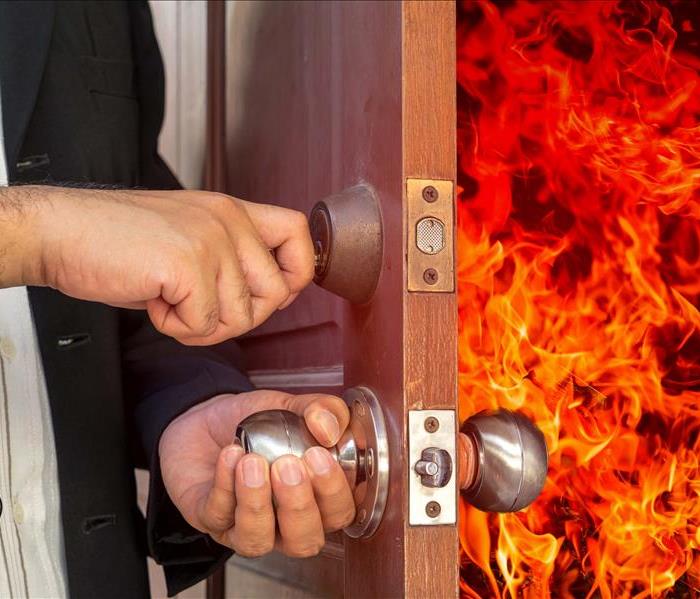 Common Areas in Your Home for a Fire to Start
Common Areas in Your Home for a Fire to Start
Places and Items Prone to Smoke and Fire Damage
It's important to identify areas, objects and circumstances that are more likely to be fire hazards than others, to help prevent any home fires and keep your house up-to-date on safety practices. Keep fire extinguishers in the kitchen, garage, and near any appliances that use heat/electricity. It's also a good idea (if not required by code) to have smoke detectors in every room of the house – especially bedrooms – and to check them at least once a month to make sure the devices are working properly.
1. KITCHEN
It's crucial to practice home fire safety in the kitchen because it's the place where most home fires originate. In fact, half of all residential fires start in the kitchen due to appliances that utilize heat/electricity, cooking-related incidents (such as an unattended oven/stovetop), or fabric and material (a dishcloth, for example) that's too close to heat. A dirty oven/stovetop that has a lot of baked-on grease and residue is another fire safety hazard, as it can easily cause grease fires.
2. APPLIANCES
Most homes have a number of appliances, many of which operate with electricity, gas or heat (or some combination of these) and can be potential fire hazards. Older appliances (15 years or older) are particularly prone to fire damage especially if they aren't regularly cleaned/inspected and properly maintained. It's a good idea to only run appliances when you're at home to avoid having to deal with any safety issues or fire restoration, in the unexpected case that they overheat and/or ignite.
- Dryers – Lint, fiber and dust buildup in dryers is one of the main causes of a laundry room fire. Make sure to keep vents and filters clean by removing any lint after each use and to clean out the lint from the hose connected to the back of the dryer at least once a year.
- Dishwashers – Heating elements in the dishwasher raise the water temperature and help dry the dishes. These mechanisms can overheat and catch fire, especially in older models or if the dishwasher has faulty parts.
- Microwaves – Although they are convenient, microwaves can be dangerous if you heat food or materials (such as aluminum foil, Styrofoam or certain plastic containers) that are flammable. You could end up with a fire or even smoke damage if not quickly extinguished.
- Toasters/Toaster Ovens – The electrical elements inside a toaster can start to become faulty over time and may not turn off, which could start a fire. Crumbs can accumulate and become stuck at the bottom of the toaster, so make sure to clean it regularly to prevent a fire and never leave these appliances unsupervised when in use.
3. BEDROOM
There are many potential fire hazards in bedrooms – bedding, curtains, plush items, mattresses – which make this room a high risk for fire damage. Mattresses made after 2007 are flame-retardant and comply with higher safety standards. Most mattresses made before 2007 usually aren't up to code with the Federal Mattress Flammability Standard, so you may want to consider upgrading to a new one. Incorporate home fire safety by installing smoke alarms in each bedroom and make a fire escape plan that includes two ways to exit the room (usually through the door and a window).
4. CHIMNEYS AND FIREPLACES
Some common issues that arise with chimneys and fireplaces include structural problems which can cause temperatures to burn too high, or chimney liners that are loose or have become detached which can cause burning embers and ash to escape to combustible areas in walls, attics and roofs. Keep chimneys and fireplaces cleaned and maintained. You should have them inspected and professionally cleaned at least once a year or when there is a quarter-inch buildup of creosote or soot. Rugs, tapestries and other fabrics that are too close to the fireplace can easily ignite. Prevent this by keeping cloth items away from the fireplace and always keep a spark screen in front of the fireplace.
5. LIVING ROOM
Like bedrooms, living rooms contain many potentially flammable items – electronics, drapes/curtains, furniture – which could easily catch fire and spread it rapidly. One of the leading fire hazards in living rooms are candles. Never leave a burning candle unattended and make sure it’s kept away from flammable/combustible objects.
Fire Cleanup
You may be able to handle some of the fire cleanup on your own, such as ventilating your home by opening all of the windows and washing all of your clothes and fabric items that have been exposed to fire and smoke damage. However, for cleanup and fire damage restoration tasks, it's advisable to hire a professional fire restoration company.
Call us for 24/7 Emergency Response to your Fire Damage Restoration needs.
Tips To Prevent Water Damage
5/10/2019 (Permalink)
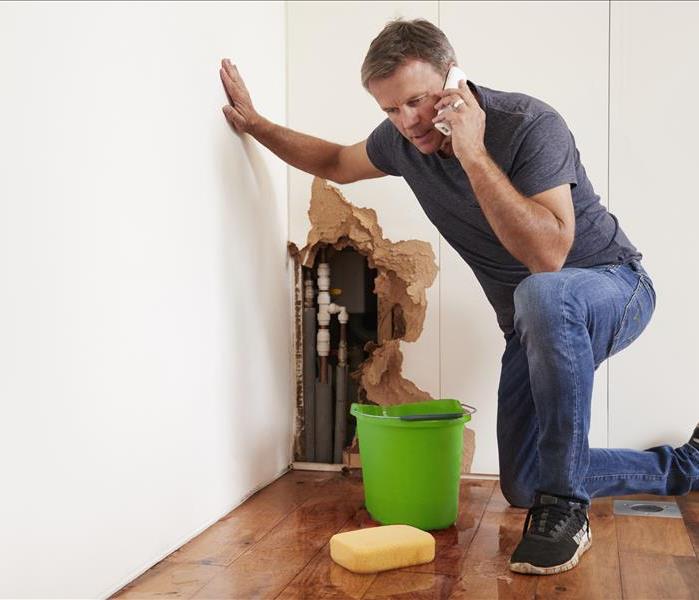 Prevent Water Damage
Prevent Water Damage
Prevent Water Damage in Your Home
Water damage is something no one wants to deal with, large or small. It can wreak havoc in your home or business, and the cleanup required can be both time consuming and expensive, especially in cases where large areas are effected, or damage that later results in mold. When water damage occurs, it not only compromises part, if not all, of the structure of the dwelling, but the furnishings, appliances, collectibles and a number of other things.
Many times water damage comes from leaky or busted water pipes in a bathroom or kitchen. In the bathroom, there are a few simple things you can do to possibly prevent future problems. For one thing, if you don't have an exhaust fan, install one. Steam and humidity that results from your baths and showers provide a perfect environment for mold to grow; exhaust fans will control this. Also, watch for stains or spots forming on the walls that could indicate leaking pipes behind the sheet rock or other wall coverings. You might want to repair the grout or chalking around your tub, shower, or toilet that is beginning to get loose, especially if you are noticing small puddles of water around these areas.
Though you cannot see below the tiles, the moisture could be causing damage to the wood flooring beneath. If this is happening, it could also be a breeding ground for wood damaging insects. One other thing you definitely need to do is check the pipes located under the counters in not only the bathroom, but kitchen as well. Since you have to get down on your knees and move items that may be stored in front of, or under them, you don't know there is a problem until it is too late. If you see the fittings, or the pipes are getting rusty and worn, you should replace them.
When in doubt, it's best to contact a water damage repair and mitigation company in your area.
Here are a few significant and handy protection tips:
- Check to make sure the water hoses running from the washing machine are in good repair
- Dishwashers should be checked regularly as they have a high potential to leak. Installing steel braided hoses on appliances may be worth looking into.
- Pipes and connections should be checked regularly
- Avoid flushing foreign objects down the toilet
- Remember to clean out roof gutters as this is a major cause of water damage
If water damage has already occurred, here are some tips to help minimize damage:
- Turn off the source of the water intrusion
- Remove furniture and rugs off the floor or they may leave permanent stains
- Avoid lifting up carpets from edges as this may cause shrinkage which is virtually impossible to repair.
- Use foil to put between furniture legs and carpet
- Wipe down your furniture
- Don't use an ordinary vacuum cleaner to suck up water
- Put down towels and mop to soak up excess water
- Turn on air conditioning to dehumidify air and turn on fans (if safe to do so)
- Call an IICRC qualified water damage business as soon as possible.
Tree Maintenance and Storm Damage
5/9/2019 (Permalink)
 Tree Maintenance and Storm Damage
Tree Maintenance and Storm Damage
Regular tree maintenance can help prevent storm damage to your home that is commonly caused by high winds and poor health of the trees on your property.
Preventative Tips
Throughout the year there are steps you can take to prevent (or at least reduce the amount of) damage to your roof, home, deck/patio and yard when the weather brings heavy rain and wind. Homeowners can take care of most tree maintenance, but when dealing with tree removal, dead or diseased trees or insects/pests, it's best to call in the professionals for help. Depending on your situation, you may need to contact a certified arborist who can thoroughly assess the condition of the trees on your property, or a tree removal service that can perform a thorough assessment of any storm damage and cut down and remove any trees that are a potential hazard.
TRIMMING AND PRUNING
Any branches close to your house should be trimmed back on a regular basis. This will help protect against potential roof damage from fallen limbs if severe weather hits your area. Heavy rain, hail and powerful winds can easily snap and break weak branches off, which could result in major storm cleanup efforts if they fall. Pruning to remove dead limbs can be done any time of year, but is typically recommended during the winter and spring months.
TREE REMOVAL
Tree removal is a necessary part of tree maintenance, especially if there is a tree posing a risk to your home that could fall during a storm and cause damage. If you suspect you have a dead tree, you should hire a tree removal service for an assessment and they will recommend next steps. If you have a diseased tree, it may be beyond trying to save. A certified arborist can assess the tree and recommend whether or not it can be rehabilitated.
WATER AND SOIL
Every tree species has specific needs, so make sure you know what type of trees are in your yard in order to care for them appropriately. Some trees are drought-tolerant and can go for long periods of time without water. However, for trees that do need water more consistently—and if they aren't receiving enough rain—they should be watered until the soil is moist. Newly planted trees will need more water and attention, especially during the first two years, to help foster root establishment. To help trees retain enough water, cover the soil with wood mulch.
There are six main types of soil—sand, silt, peat, loam, chalky and clay—and each requires different types of care, as soil and root management are essential to good tree health. If soil composition is too compact, it will prevent trees from growing and should be aerated. Soil should also maintain the right level of moisture and nutrients in order to keep trees healthy, otherwise trees could develop disease, become weak or die, making them a potential hazard to your home during a storm.
Storm Damage Cleanup and Restoration
When a storm hits your home, you need help immediately. Our team can quickly respond, help prevent secondary damage, and help reduce restoration costs.
Call us, we're here to help (704) 393-7890.
Does My Business Need Flood Insurance?
5/9/2019 (Permalink)
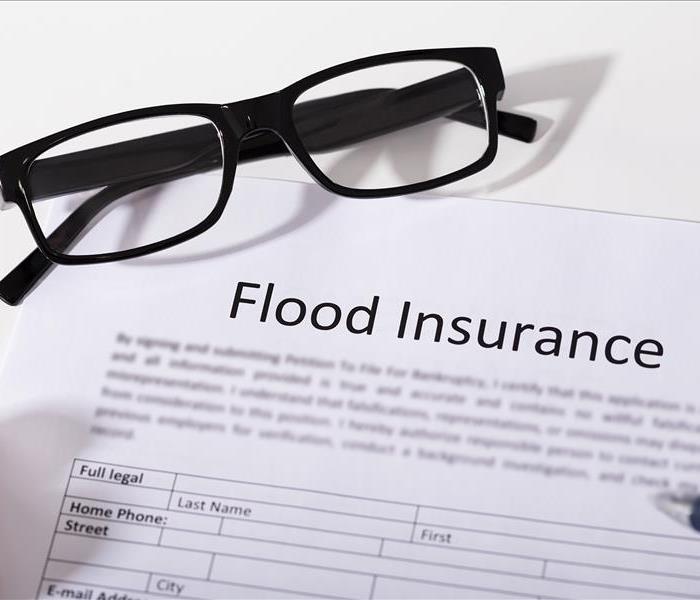 Commercial Flood Insurance
Commercial Flood Insurance
Natural disasters can be devastating to businesses. While damage caused by some types of natural events—such as lightning or wind—will usually be covered by commercial property insurance, you need a special policy if you want protection from flood damage. This Q&A will help you understand this type of coverage and determine if your business needs it.
Frequently asked questions about flood insurance
Q. Does my commercial property insurance include flood coverage?
A. No. Damage from flooding, including flooding generated by hurricane-generated storm surge, typically is not covered under a standard commercial policy, including a Commercial Package Policy (CPP) or a Business Owners Policy (BOP). Flood insurance is available from the federal government’s National Flood Insurance Program (NFIP).
Q. What does flood insurance cover?
A.Flood insurance covers damage to your building and contents caused by flood. This includes losses resulting from water overflowing rivers or streams, heavy or prolonged rain, storm surge, snow melt, blocked storm drainage systems, broken dams or levees, or other similar causes. To be considered a flood, waters must cover at least two acres or affect two properties. Generally if water comes from above—for instance from rain or melting snow overflowing gutters and leaking onto your inventory—you’ll be covered by your standard commercial property insurance.
Q. What isn’t covered by flood insurance?
A. Property outside your building generally will not be covered. For instance, landscaping and septic systems will not be covered. In addition, flood insurance will not cover damage to your business vehicles, but this can be included in the optional “comprehensive” portion of your business vehicle insurance. Financial losses caused by business interruption or loss of use of insured property are also not covered.
Q. Do I have to purchase flood insurance?
A. If your commercial property is located in a high-risk flood area and you have a mortgage from a federally regulated or insured lender, you are required to purchase a flood insurance policy.
Q. How do I determine my risk for flood damage?
A. Location is the most important factor for weighing your risk for flood damage. Is your business located in or near a flood zone? (Flood map search tools can be found FEMA.) In what part of the building is your businesses equipment and inventory located? Anything housed on a lower floor, for instance, will be at greater risk.
Q. Where can I purchase flood insurance?
A. Flood insurance is available from the NFIP and some private insurers. However, NFIP coverage can only be purchased through an insurance professional; you cannot buy it directly from the federal government. To find a local insurance professional who is familiar with the National Flood Insurance Program, contact the NFIP at 888-379-9531 for an agent referral.
Q. How long does it take to get flood coverage?
A. Typically, there’s a 30-day waiting period from date of purchase before your policy goes into effect.
Q. Does my flood policy cover mold?
A. Damage from mold and/or mildew resulting from the after-effects of a flood is covered, but each case is evaluated on an individual basis. Mold/mildew conditions that existed prior to a flooding event are not covered, and after a flood, the policyholder is responsible for taking reasonable and appropriate mitigation actions to eliminate mold and mildew.
Q. How much flood coverage can I get?
A. Commercial flood insurance provides up to $500,000 of coverage for your building and up to $500,000 for its contents.
Q. What if I need more coverage?
A. You can purchase what’s called excess insurance coverage to rebuild properties valued above National Flood Insurance Program (NFIP) limits. Excess coverage includes protection against business interruption.
Preparing Your Home for Flood Damage
5/1/2019 (Permalink)
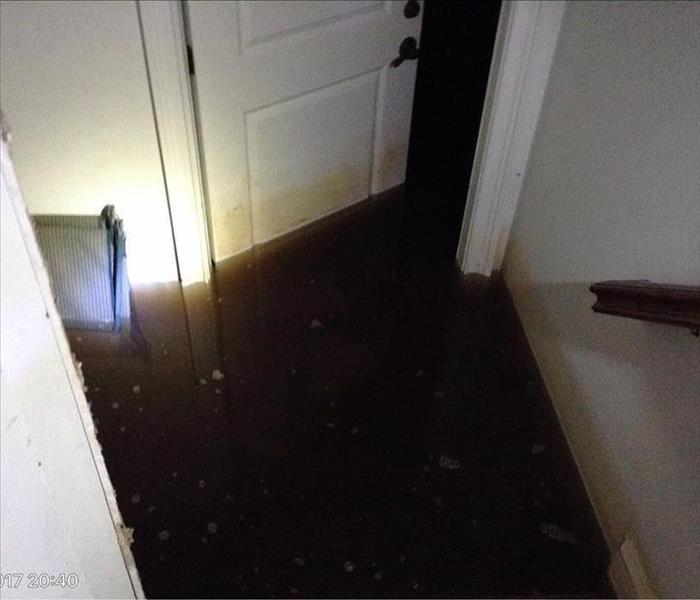 This customer's basement was flooded by ground water through a window.
This customer's basement was flooded by ground water through a window.
How to Protect Your Home from Flood Damage in the Future
- Consider flood insurance (especially if you live in areas where weather-related flooding is common). Government-issued disaster assistance doesn’t always cover the cost of damage from a flood, so it’s important to consider a supplemental insurance policy.
- Bring appliances such as utilities, broilers, window air conditioning units and other HVAC equipment to higher ground if possible, as these items are particularly vulnerable to flood damage.
- Hire a trusted plumber to install a sewage water backstop or sump pump. Some cities offer programs to fund the installation of these types of valves. Check with your local official to see if this is offered in your area.
- Fill any holes or cracks in foundation with caulk or patching to prevent potential leaks.
3 Things Homeowners Should Know About Filing A Water Damage Claim
5/1/2019 (Permalink)
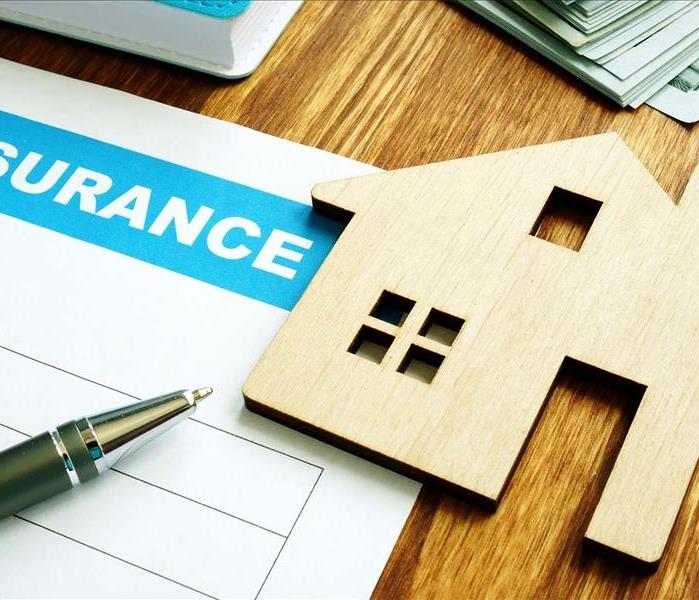 Filing a Water Damage Claim
Filing a Water Damage Claim
1. Understand what is covered by your Insurance Policy
When damage has already occurred to a home, it’s often not possible to change your insurance plan immediately after the fact. Choosing an insurance policy that will cover common types of damage is generally helpful. By knowing what your insurance policy will cover, you can be more prepared for a disaster, and you can quickly make a claim and spend less time worrying about the financial aspect of the water damage.
2. Documentation Is Key
After you’ve made the insurance claim, your insurance company will likely request documentation in order to know how to compensate you. Many insurance companies send an adjuster to photograph the damage that has occurred from the bursting pipes or flooding. However, it can also be useful for you to provide additional documentation to the insurance adjuster and your insurance policy, as more information can often be useful.
3. Time Matters
After a claim has been made, the next priority is to the issue and clean your home. However, spending time attempting to fix a broken pipe or trying to clean your home on your own can be both time-consuming and hazardous. Standing water can cause structural damage and can result in mold growth, making it important to quickly clean your home. Making the most of the time you have and calling in professionals is often the best way to ensure your home doesn’t become more damaged.
Understanding what insurance policies tend to cover, knowing how to document the effects of bursting pipes or a flood and understanding the importance of reacting quickly can make the claims process easier. Homeowners with damaged homes might find it helpful to contact water damage restoration experts.
SERVPRO of NW Charlotte is here to help every step of the way. Call us 24/7 at (704) 393-7890
Protection For Businesses When Fire Damages Causes Closure
5/1/2019 (Permalink)
What Does Business Interruption Coverage Cover after a fire?
If your building catches fire, your property insurance coverage may help you replace the building, your desks and copiers, and inventory from your warehouse. It may also cover the cost of hiring a fire restoration company. However, this type of coverage doesn't cover your lost revenue. What does interruption insurance cover?
• Employee wages and other routine operating expenses
• Profits you would have earned if your business hadn't been affected by fire
• Costs related to moving to a temporary location
• Lease payments for the property affected by the fire
• Loan and tax payments
What Isn't Covered by Interruption Coverage?
It's important to understand that there are exclusions to this type of coverage. For example, some fire restoration services may be covered, but the expenses that result from a flood or earthquake probably won't be covered.Water damages are often paid for out of your business budget. Other costs that may not be covered include
• Utilities, which are usually stopped after a disaster
• Undocumented income, such as a recent increase in income
• Losses due to voluntary or partial closures
• Losses related to power outages and downed power lines
SERVPRO of NW Charlotte, Lincoln County, Southern and NE Gaston County is part of a national network of 1,700-plus franchises, we’re locally owned and operated and part of the Mecklenburg, Lincoln, and Gaston communities. protection
For questions, contact us anytime at (704) 393-7890 or request help online.
Who Pays During Apartment Fires?
5/1/2019 (Permalink)
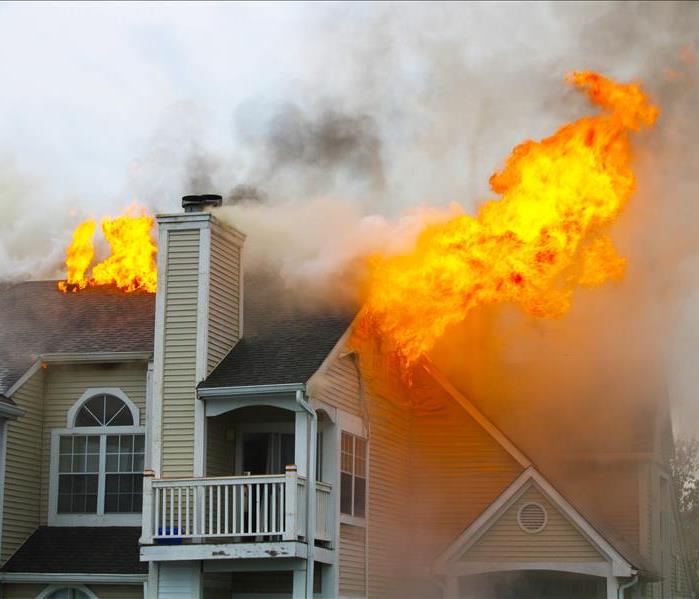 Apartment Fire Damage
Apartment Fire Damage
An apartment fire can cause panic and undoubtedly create extensive fire damage. However, some landlords and renters worry more about the financial burden of the recovery than the immediate loss. Thankfully, fiscal responsibility is pretty cut and dry, especially when the fire is deemed accidental.
1. Facility
The actual building is the responsibility of the owner. This means that the renter is not obligated to pay for structural damage, even if it occurs in their apartment. However, the landlord’s insurer may challenge the renter’s insurer if the fire is caused by tenant neglect or ill-will.
2. Function
Also, any utilities – water, gas, electric – that are damaged in the apartment fire are the responsibility of the property owner. A landlord is responsible for the functionality of a building, meaning that the tenant is not responsible for ensuring the utilities work properly.
3. Personal Property
While a landlord must take care of the structure and functionality of their property, they have no responsibility for the personal property of their tenants. Therefore, tenants must cover the costs of replacement themselves. However, most tenants will have renter’s insurance which should help cover this expense.
4. Construction
Lastly, the rebuilding of the property is the responsibility of the property owner. Likely, their insurance will cover any water and fire restoration efforts, but they may require that the owner call a disaster restoration specialist in the Charlotte, NC, area, and receive an estimate for the work to be completed.
An apartment fire is scary and confusing, but despite the confusion, there are clear lines of responsibility when the fire is deemed an accident. However, the loss of property is still devastating, and it may evoke feelings of desperation. Fortunately, if you have adequate insurance coverage, the stress of the impending financial burden may be alleviated. Insurers account for fire loss in most policies and are ready and willing to help you through this crisis.
Sewer Backups and Home Owner's Insurance
5/1/2019 (Permalink)
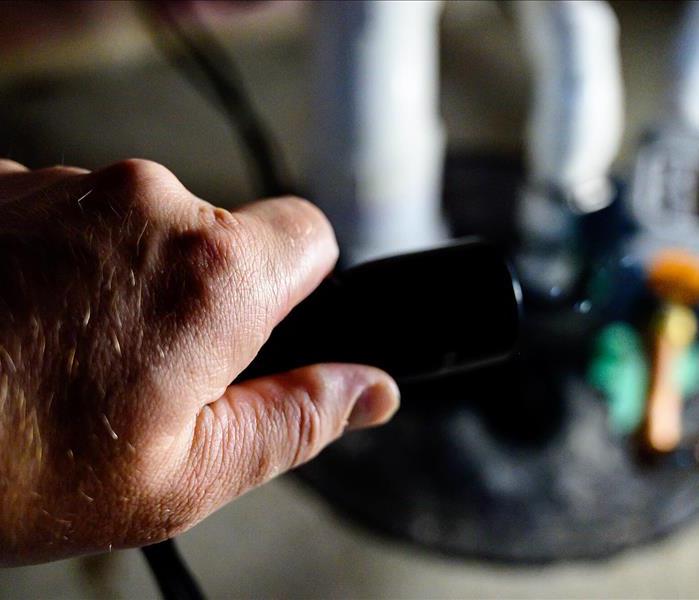 Sewer Backups and Home Owner's Insurance
Sewer Backups and Home Owner's Insurance
Home Insurance And Sewer Backups
A sewer backup can be an extremely messy problem for any homeowner in Gastonia, NC. To further complicate the situation, your home insurance policy may not cover cleanup and restoration costs, forcing you to fund repairs out-of-pocket. Carefully reviewing your current coverage may spare you considerable frustration in the long run.
Sewer Backups can be a Costly Problem
A sewage overflow inside your basement or bathroom is highly unsanitary and can cause significant destruction.
Depending on the specific cause of the backup and the extent of the damage, you may face numerous cleanup and repair requirements, such as the following:
- Disinfecting the contaminated area
- Removing saturated drywall and insulation
- Repairing broken sewage lines
- Replacing destroyed personal property
Without adequate home insurance coverage, these expenses can quickly mount and become extremely costly.
Potential Causes
A sewer backup often strikes unexpectedly. If your community’s storm water and sewer lines converge, your home may be particularly vulnerable, particularly if the area becomes inundated with rainwater that overwhelms the system.
If you are fortunate, you may notice subtle symptoms of a plumbing issue that may cause a sewage backup. Examples of specific signs include consistently slow-flowing drains and a lingering sewer gas odor. If you experience either situation, you may have a clogged or damaged pipe.
Contacting a licensed plumber may allow you to resolve the potential issue early, sparing you from a messy sewage cleanup.
Safeguarding Your Home
You can minimize your risk of clogged or broken sewage lines by planting trees and shrubs away from pipes and throwing diapers, feminine hygiene products, wipes and paper towels in the trash instead of your toilet. Installing a back-flow valve can also prevent sewage backups.
However, possibly the most efficient way to safeguard both your home and financial security is to update your home insurance policy to ensure you are adequately covered against a sewer backup. Insurance can be a valuable financial safety net, but insufficient coverage can be extremely costly.
If disaster strikes, having both your insurance company and a professional cleanup and restoration team on your side can make all the difference.
SERVPRO of Southern Gaston County can handle your water damage restoration and repair needs. For questions, contact us anytime 24/7.
Who to Call When Trees Fall on Your Home
5/1/2019 (Permalink)
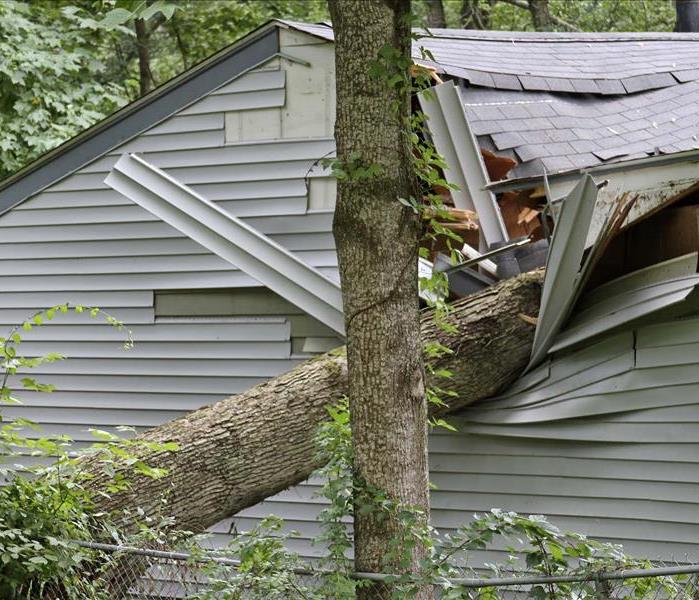 Fallen Tree Storm Damage
Fallen Tree Storm Damage
Whether it was caused by root rot or strong winds, if a tree has fallen on your house, there’s a series of steps you’ll need to follow to get your house and property back to normal.
Hurricanes, floods and snowstorms are a few types of weather conditions that can cause trees to fall, which could result in roof and interior damage. While older and diseased trees are more vulnerable to extreme weather and high winds, remember that even strong, healthy trees can topple under these conditions.
Fallen trees are one of the main causes of roof damage, according to the National Storm Damage Center, costing more than $1 billion in property damage each year. From tree removal to roof repair and everything in between, learn what you need to do and who you need to contact to recover from storm damage.
1. Contact SERVPRO of NW Charlotte immediately. They will send a project manager out on site quickly. Once on site they will determine what equipment is needed to get the tree off of your home.
2. If there is a lot of rain the inside of the home might be damaged. SERVPRO can handle all of the cleanup and drying to get your home back to pre loss condition.
3. If there is rebuilding necessary in results of the tree damage, SERVPRO of NW Charlotte's construction team will be able to handle the job from start to finish.
Why Sewers Backup
5/1/2019 (Permalink)
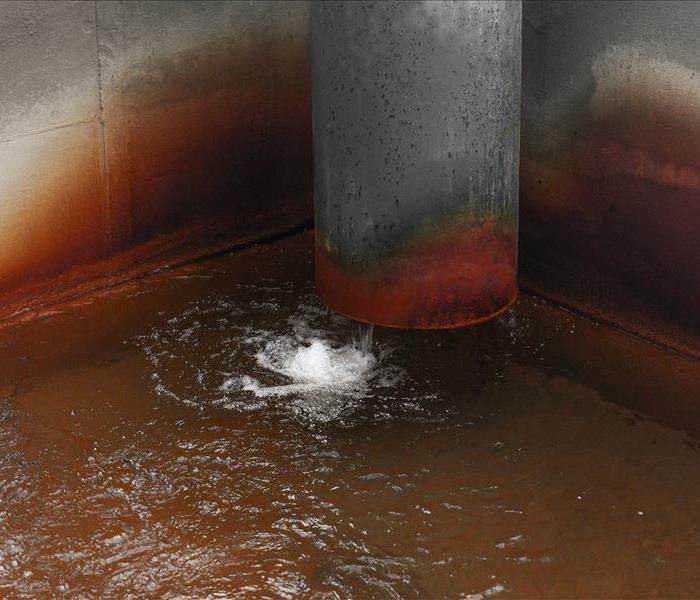 Sewer Backup
Sewer Backup
Sewer Backup can be caused by various things, including storm damage from heavy rains.
Here are a few commons causes of sewer backup:
1. Roots can penetrate and clog the sewer line. Trees and shrubs can send out thousands of feet of tendrils a year in search of water. A small crack in a pipe can be an open invitation to the plant to spread the crack and enjoy the water. As the roots enter the pipe, they often spread quickly until the roots have created a mass that can easily block the pipe and cause a sewer backup.
2. Clogs can form in drain pipes or lateral sewer lines. A sink, tub, or toilet can easily clog over time as the sewer pipes corrode or fill with sludge. This is especially true if pipes are used to discard household debris from garbage disposals and toilet flushes. Hair buildup can also easily clog drain pipes.
3. Heavy rains can cause city-wide sewer malfunctions. As rain water or melting snow enter over-taxed sewer lines, there can be nowhere for the water to go. The liquid can fill streets and drainage lines until finally, a cesspit backup is often the result. As the water levels rise, so can the sewage levels.
4. Sewer lines can break or collapse. The lateral line between the building and the street were often historically built from clay or cast-iron pipes. The fragile pipes can sometimes collapse as they crack with age and can often cause in sewer problems.
When a sewer backup occurs, it can fill the building with black water, fecal matter, and bacteria. It can also lead to the destruction of possessions and damage to the building structure.
Contact our water damage repair team at the first sign of sewer problems. Our technicians can take immediate action and protect the property from further water damage.
Get Your Commercial Automatic Toilet to Stop Flushing
5/1/2019 (Permalink)
1. Uncover the screwdriver slot. Most flushometers have a screwdriver spot for a flat head screwdriver. You may have to uncover this spot. Once you do, use a screwdriver to turn off the water coming from the flushometer.
2. Remove the top lid. Once you have the water stopped, you need to make sure you won't be dealing with this toilet flood issue in the near future. Your toilet-fixing expert can use a wrench to remove the top lid of the flushometer. Some water may come out when you remove the cover.
3. Clean the gasket. With the lid removed, you can now see the gasket. You may notice built up sediment or a clogged weep hole. This device should be able to stop a toilet, but if it is too dirty it may cause a toilet overflow.
4. Get the flushometer ready again. After the gasket has been properly cleaned, you need to get it ready to function again. Replace the cover and top lid. Then turn the water back on.
Taking care of your commercial property means fixing toilet overflow issues and reacting quickly to other potential hazards. No matter what kind of water-related issue you have, you should make sure to react quickly to avoid major water damage to your business. Knowing who to call in a time of crisis can save you a lot of time.
Getting Rid of the Smell After a Fire
5/1/2019 (Permalink)
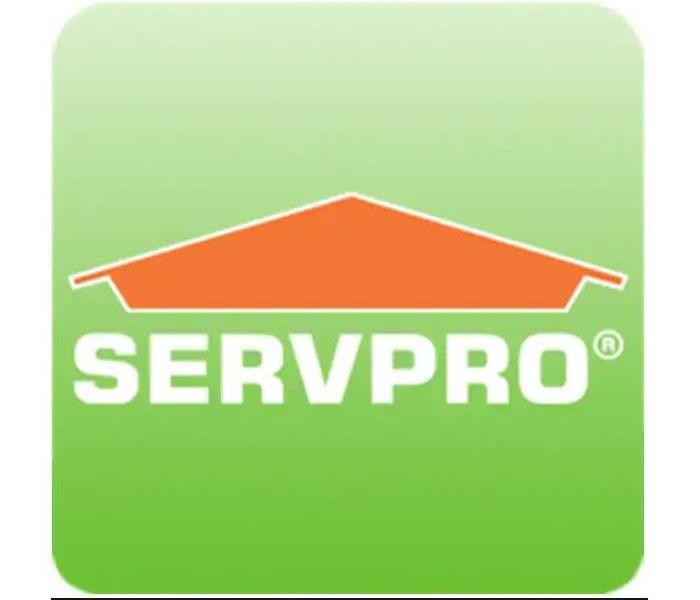 SERVPRO Fire Restoration
SERVPRO Fire Restoration
Smoke is Sneaky
Once you've been given the go-ahead to reenter the building, you may need the judgment of fire damage professionals to determine what items can be salvaged. Because smoke can permeate various parts of an indoor space, it's essential that you get a proper inspection. Smoke also produces small amounts of carbon in the air, ultimately creating soot, and completely removing the odor from some items can prove challenging.
There Are Different Types
In addition, be aware that there may be multiple soot damage culprits, as there are different types of smoke:
• Dry smoke
• Wet smoke
• Protein fire residue
Although any kind of smoke damage is a hassle to deal with, wet smoke – involving plastic or rubber – can be sharper in odor and harder to address. Dry smoke involves wood or paper and can also be difficult to clean. Protein fire residue, which can be subtle, has a familiar, pungent odor.
Porous Materials are Vulnerable
Every surface likely needs attention after a fire, but the permeable ones are usually trickiest. Items such as curtains, rugs, and other upholsteries probably need to go to the dry cleaner. Another task on your list should involve keeping your cleaned items out of the building until a proper smoke cleaning is complete.
Spring Cleaning Outside
4/11/2019 (Permalink)
 SPRING CLEANING OUTSIDE
SPRING CLEANING OUTSIDE
When making your spring cleaning list, remember your home's exterior. A few hours of attention could save you a bundle in unexpected repairs.
Roof & Chimney
Examine your roof for cracked or missing shingles and damaged flashing around vents and chimneys. Check chimney caps and roof vents for bird nests and debris.
Gutters & Downspouts
Clogged gutters lead to rainwater back up and rot under shingles, waterfalls that cause window leaks and pools that drain into your crawl or basement and soften soil around tree roots causing them to fall. Consider installing gutter screening and downspout extensions.
Foundation Vents & Drains
Look for missing or damaged screens, debris, signs of insect or rodent infestation, or other issues. Unclog drainage systems designed to channel water away from the foundation, including city sewer drains.
Tips to Avoid Pipe Bursts
2/27/2019 (Permalink)
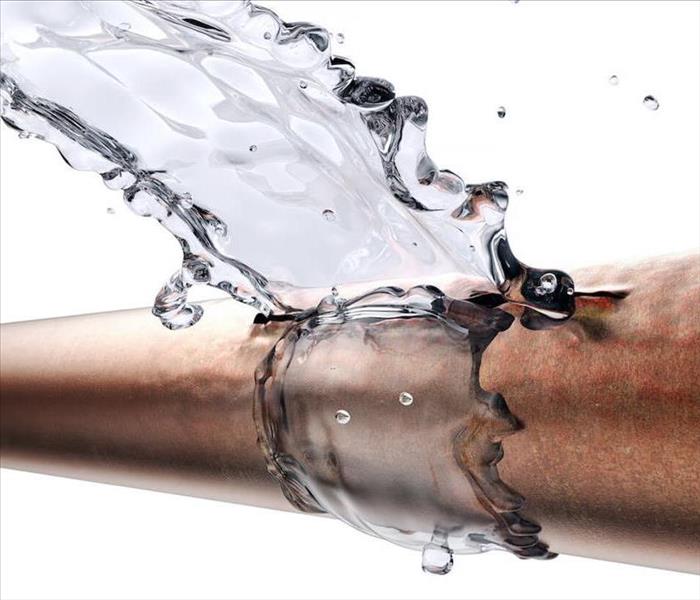 Tips to avoid pipe bursts
Tips to avoid pipe bursts
TIPS TO AVOID PIPE BURSTS
When temperatures drop in Charlotte NC, pipes can freeze. Freezing water expands and cold pipes contract. The result, pipe bursts and water damage. Follow these tips to keep your house safe this winter:
- Disconnect outdoor hoses & cover spigots with insulated covers
- Drain in-ground sprinkler systems
- Show family members where the water main is and how to shut it off
- Insulate pipes in unheated spaces
- Caulk around holes where pipes come through walls
- Stop cold air in your crawlspace by closing vents & sealing cracks
- When it drop below freezing, keep your faucets lightly dripping.
- Keep house temperatures above 55 & don’t turn it down before traveling
- Open cabinet doors so air can keep pipes warm
- Keep a light on in crawlspaces, attics & well houses
Prevent Winter Fires
2/19/2019 (Permalink)
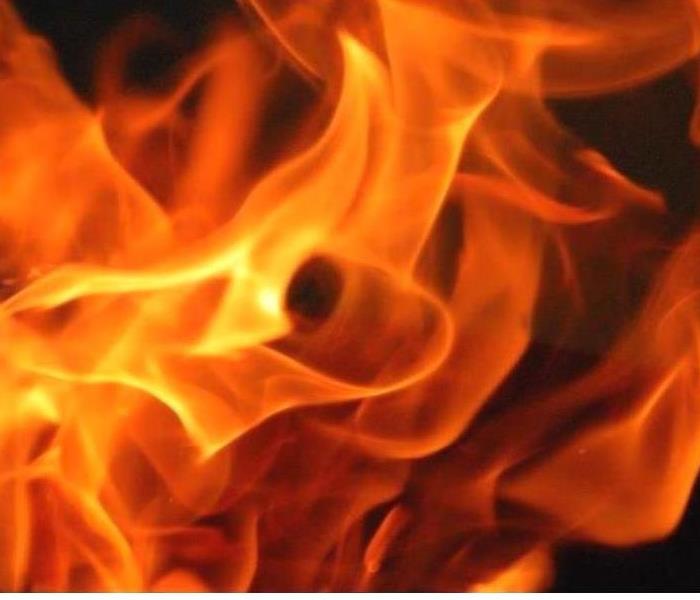 Prevent Winter Fires
Prevent Winter Fires
Preventing Winter Fires
Most home fires happen during the winter season. Follow these fire safety tips to keep your home and family safe:
- Keep area around heating equipment clear of flammables.
- If you use a fireplace, have the chimney swept yearly, use a sturdy screen to stop sparks and store ashes outside at least 10 feet away from the house.
- Use space heaters with automatic shut-offs and keep pets & children 3 feet away.
- Test smoke & carbon monoxide alarms and make sure batteries are fresh.
- Keep a fire extinguisher on each floor and teach family members how to use it.
- Keep baking soda by the stove to combat grease fires.
Heating
Heating is the second leading cause of U.S. home fires, deaths and injuries. December, January and February are the peak months for heating fires. Space heaters are the type of equipment most often involved in home heating equipment fires, figuring in two of every five fires (40%). More statistics on heating fires.
Carbon Monoxide
Often called the invisible killer, carbon monoxide (CO) is an odorless, colorless gas created when fuels such as gasoline, wood, coal, propane, etc. do not burn completely. In the home, heating and cooking equipment that burn fuel are potential sources of CO. Carbon monoxide incidents are more common during the winter months, and in residential properties. More statistics on carbon monoxide incidents.
Winter storms
Most of the U.S. is at risk for winter storms, which can cause dangerous and sometimes life-threatening conditions. Blinding wind-driven snow, extreme cold, icy road conditions, downed trees and power lines can all wreak havoc on our daily schedules. Home fires occur more in the winter than in any other season, and heating equipment is involved in one of every six reported home fires, and one in every five home fire deaths.
Generators
Portable generators are useful during power outages, however, many homeowners are unaware that the improper use of portable generators can be risky. The most common dangers associated with portable generators are carbon monoxide (CO) poisoning, electrical shock or electrocution, and fire hazards. According to a 2013 Consumer Product Safety Commission report, half of the generator-related deaths happened in the four coldest months of the year, November through February, and portable generators were involved in the majority of carbon monoxide deaths involving engine-driven tools.
Candles
December is the peak time of year for home candle fires; the top three days for home candle fires are Christmas, New Year’s Day, and New Year’s Eve. Each year between 2012 and 2016, an average of 8,200 home candle fires were reported each year. More statistics on candle fires.
Electrical
Electrical home fires are a leading cause of home fires in the U.S. Roughly half of all home electrical fires involved electrical distribution or lighting equipment, while nearly another half involved other known types of equipment like washer or dryer fans, and portable or stationary space heaters. More statistics on electrical fires.





 24/7 Emergency Service
24/7 Emergency Service








































